Barriga e lombo do Lírio
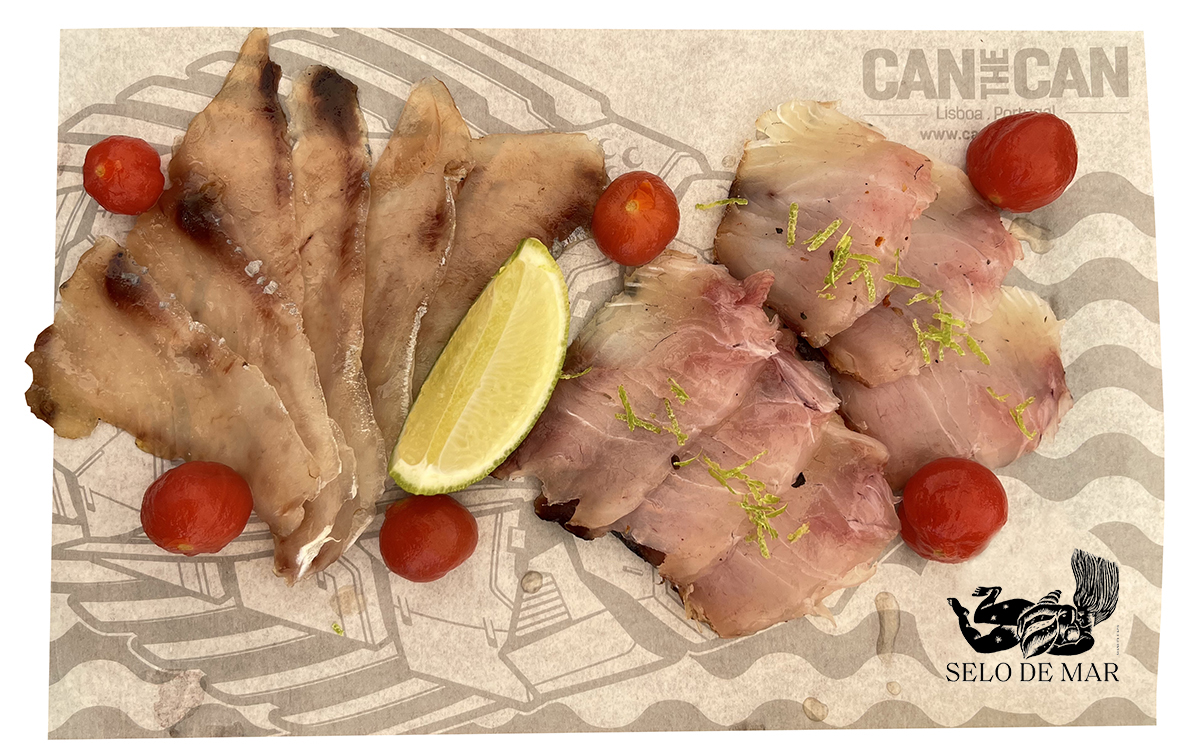


Almaco Jack belly
Almaco Jack loin
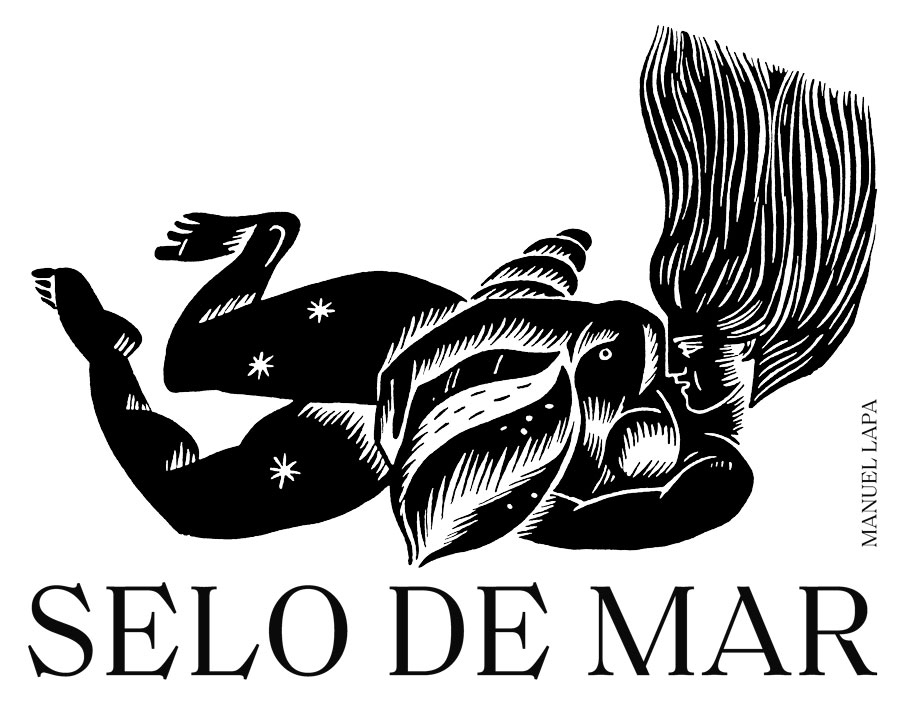

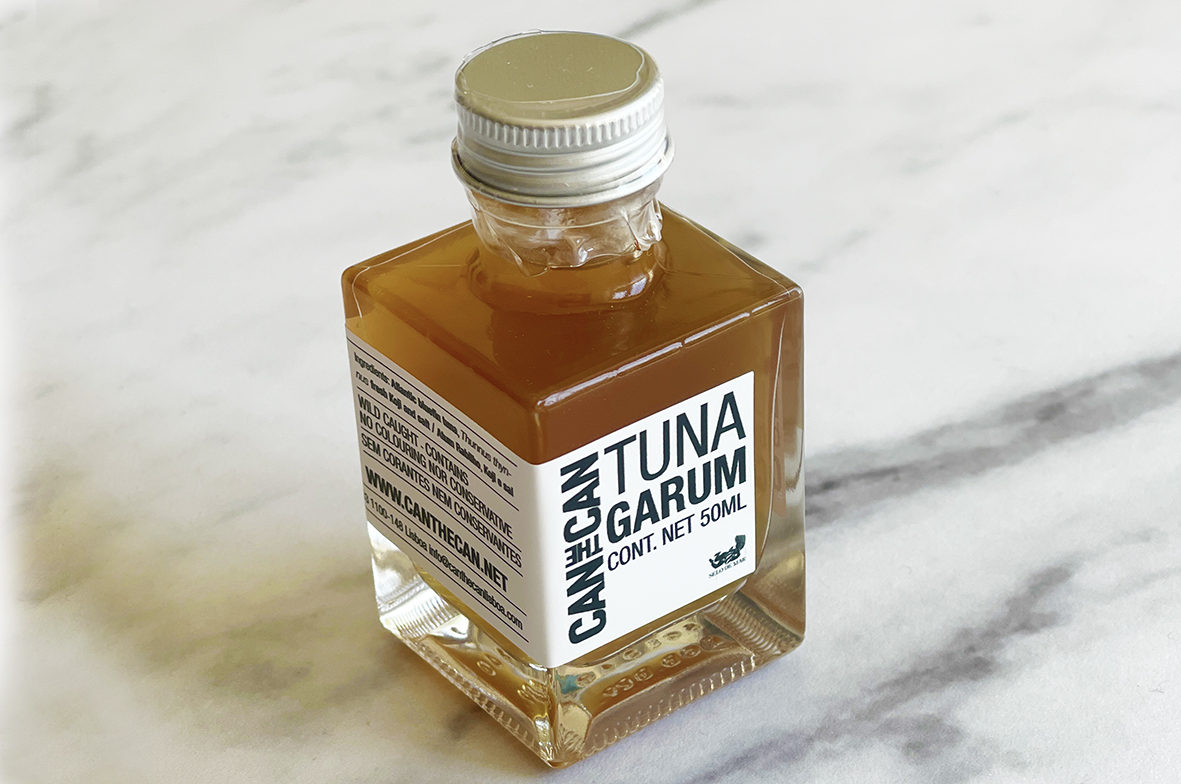
Tuna Haimation Garum GARUM LUSITANO by CAN THE CAN Garum produzido com atum rabilho do Atlântico, pescado nas águas do Atlântico. Garos de alta qualidade
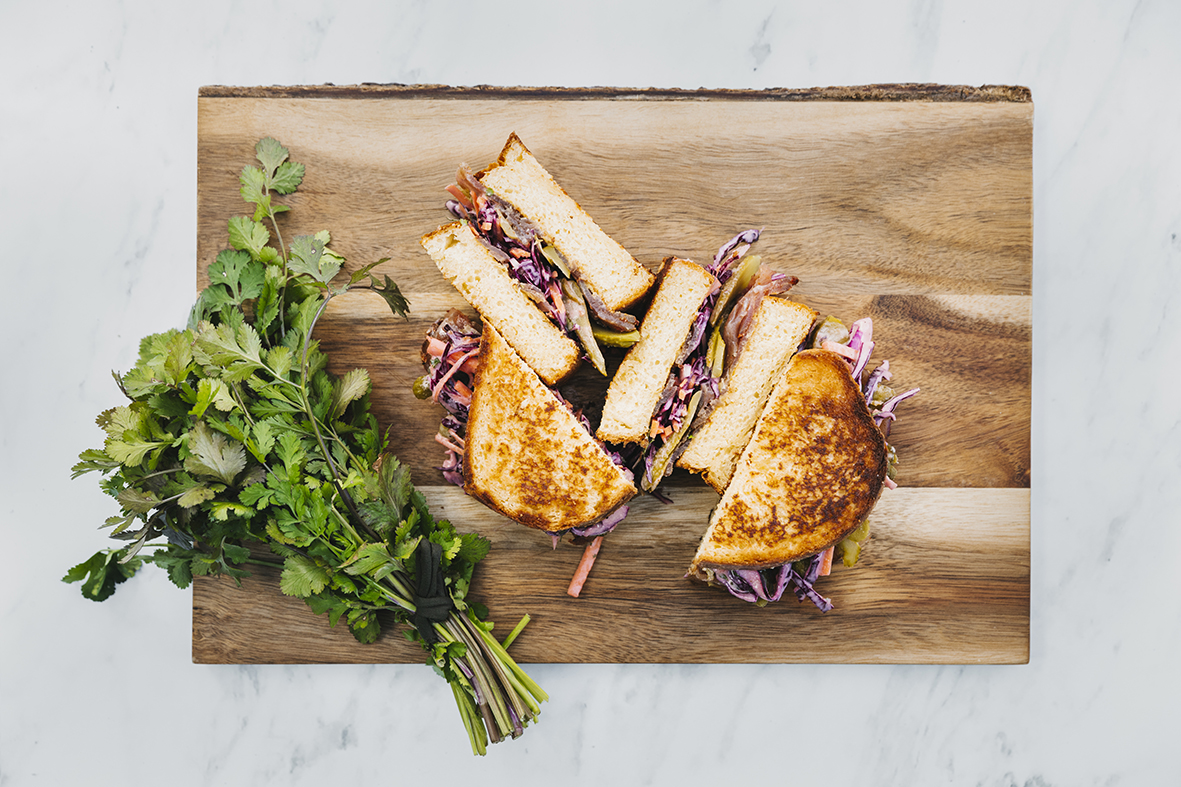
Sandwiche de pastrami de atum, brioche torrado e salada coleslaw Ingredientes para 2 pessoas: 2 embalagens de pastrami de atum 2 brioches 30 gr de
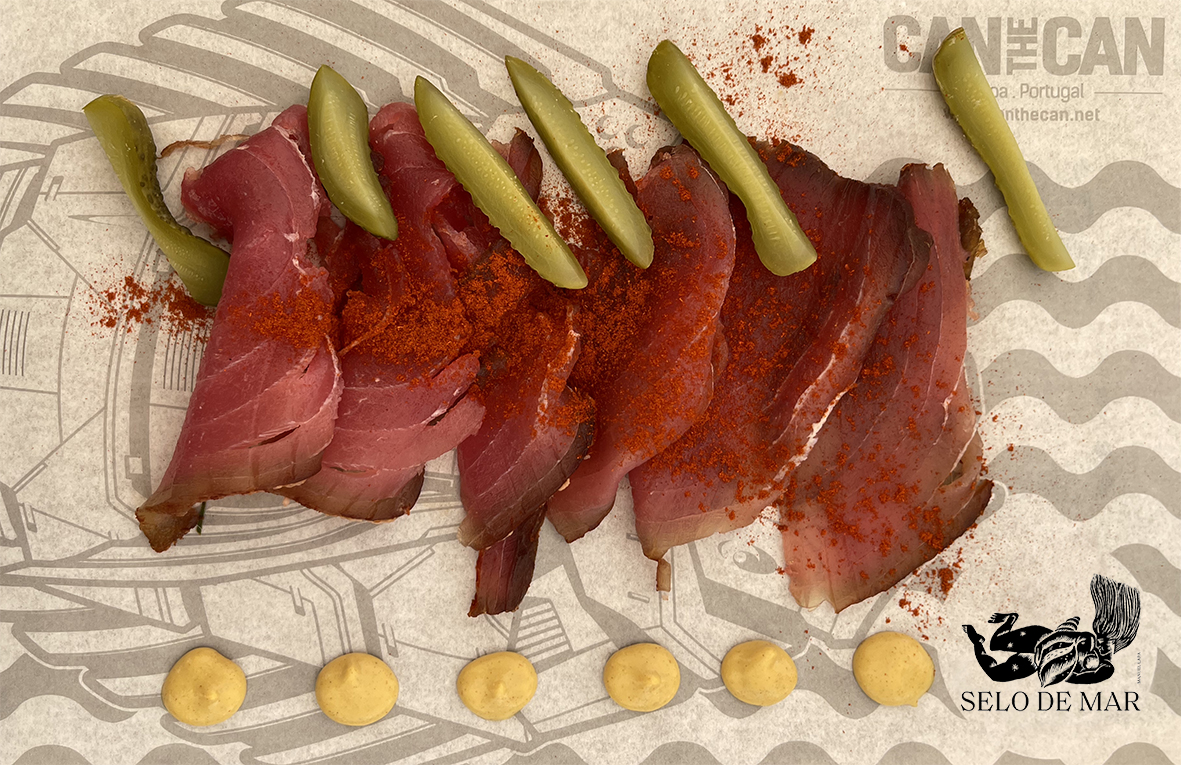
Pastrami de atum Lombo de atum curado com flor de sal, pimento espelette, pimenta da Jamaica, alho, semente de coentro e funcho desidratado, em ambiente
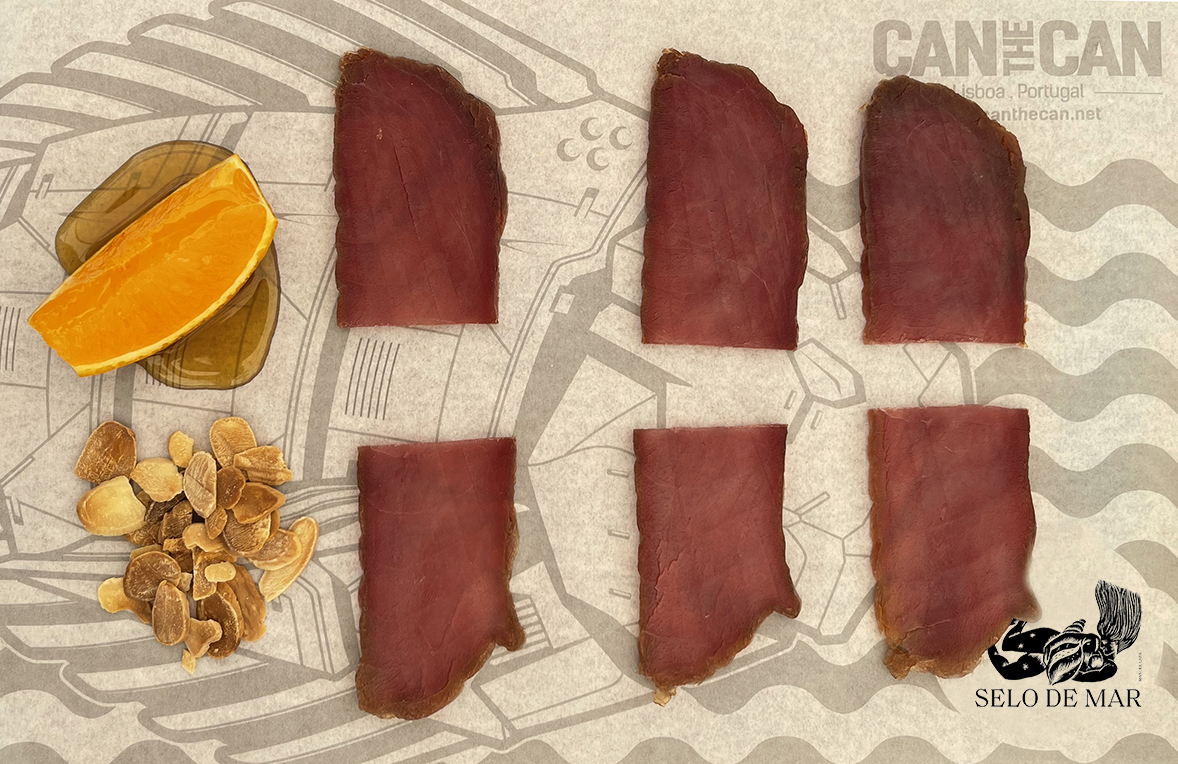
Muxama de atum Muxama de atum CAN THE CAN, curada com o método tradicional, laranja do Algarve e amêndoas torradas
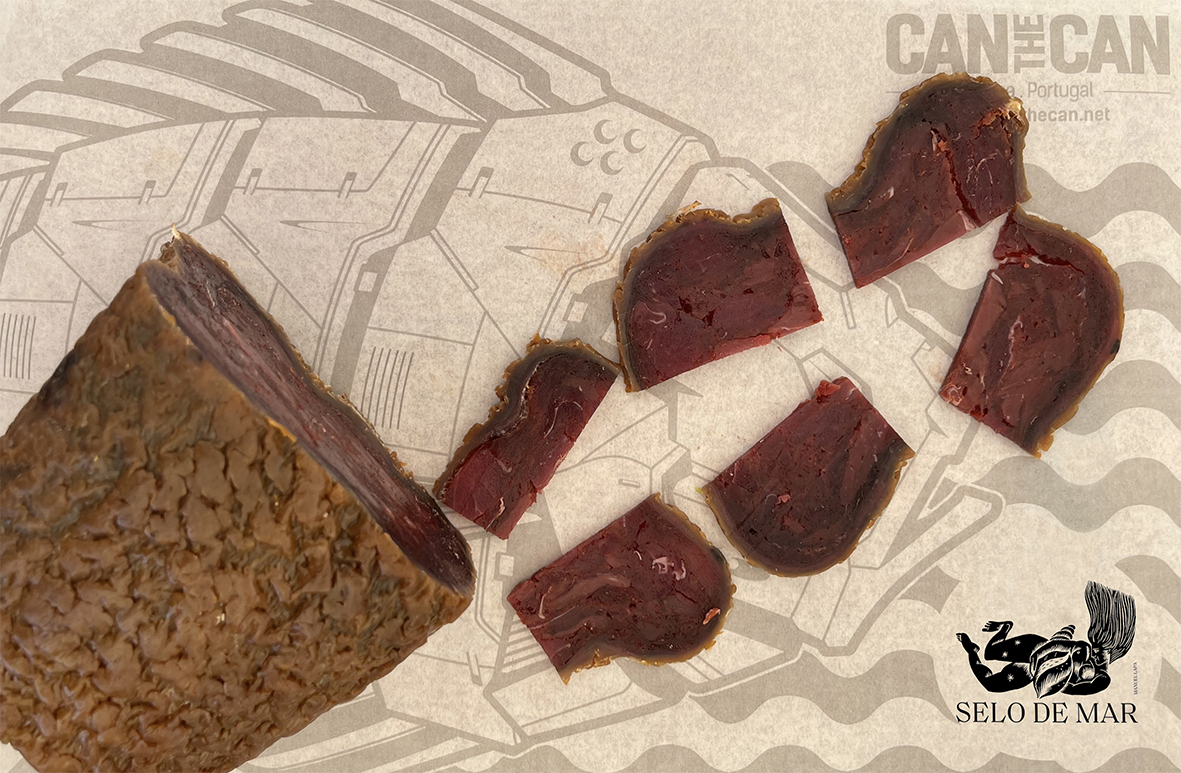
Bucho de atum Estômago de atum recheado com carne do mesmo, vinho tinto, pimentão fumado, semente de coentro, erva doce, sal e pimenta
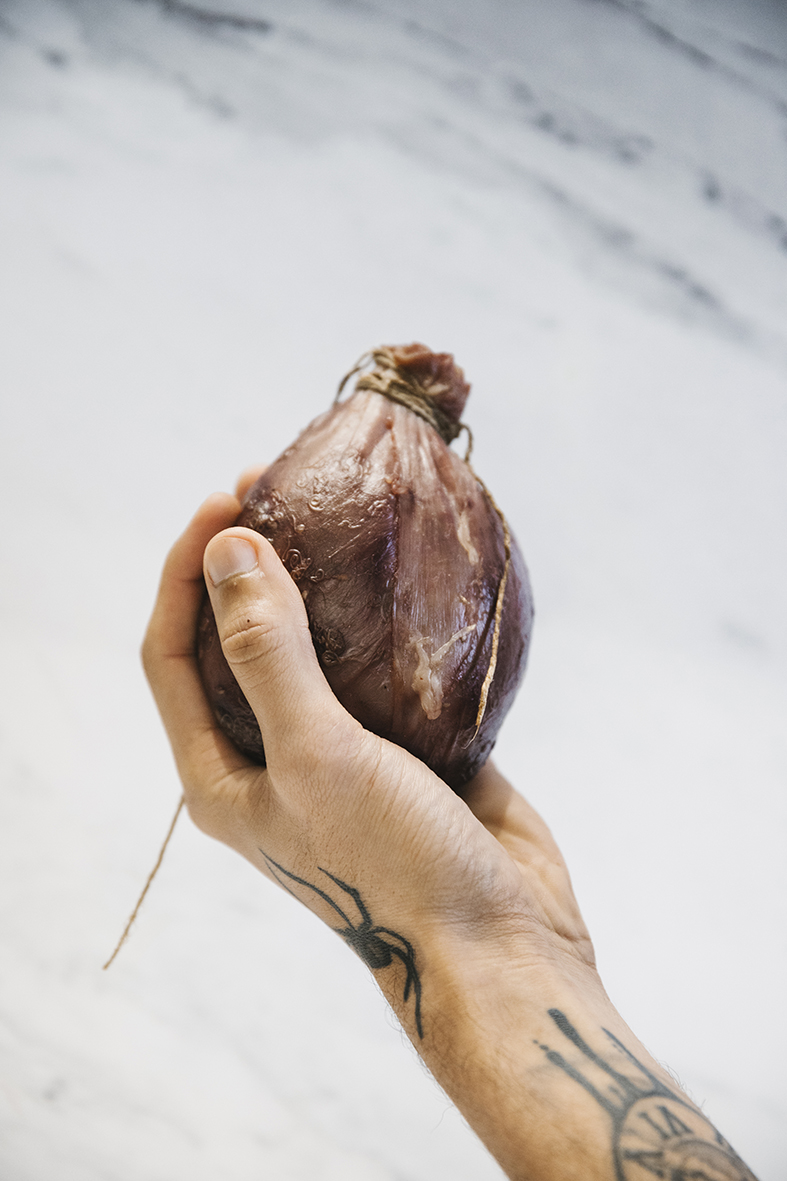
“Bucho” de atum fumado Atum, cabeça de cherne, vinho branco, sal, açúcar, paprika, alho, pimenta preta

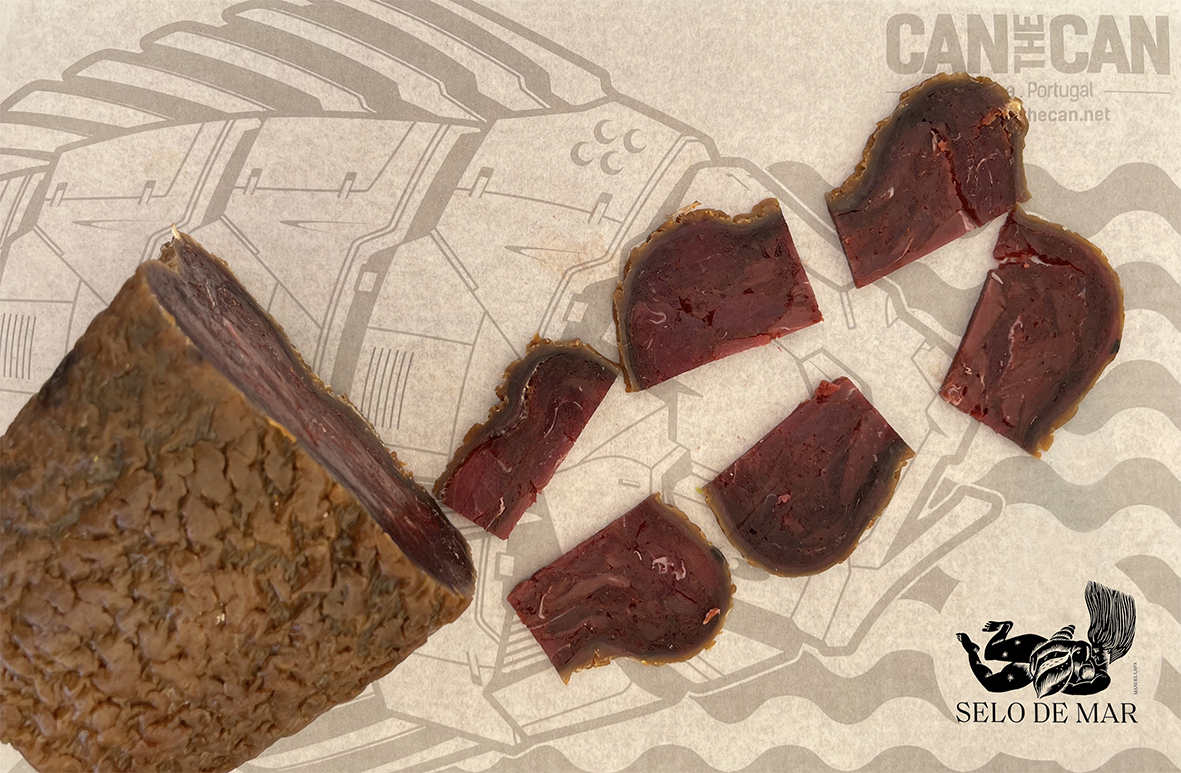
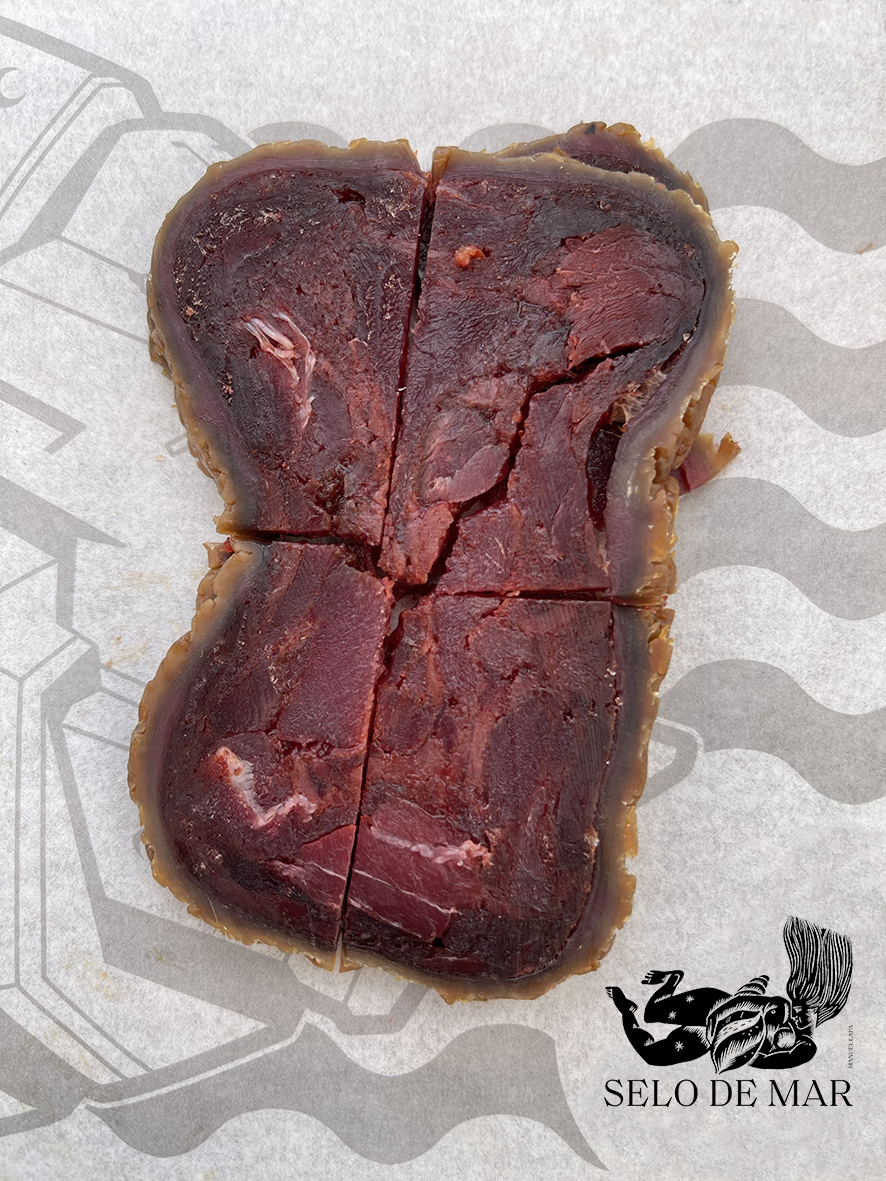
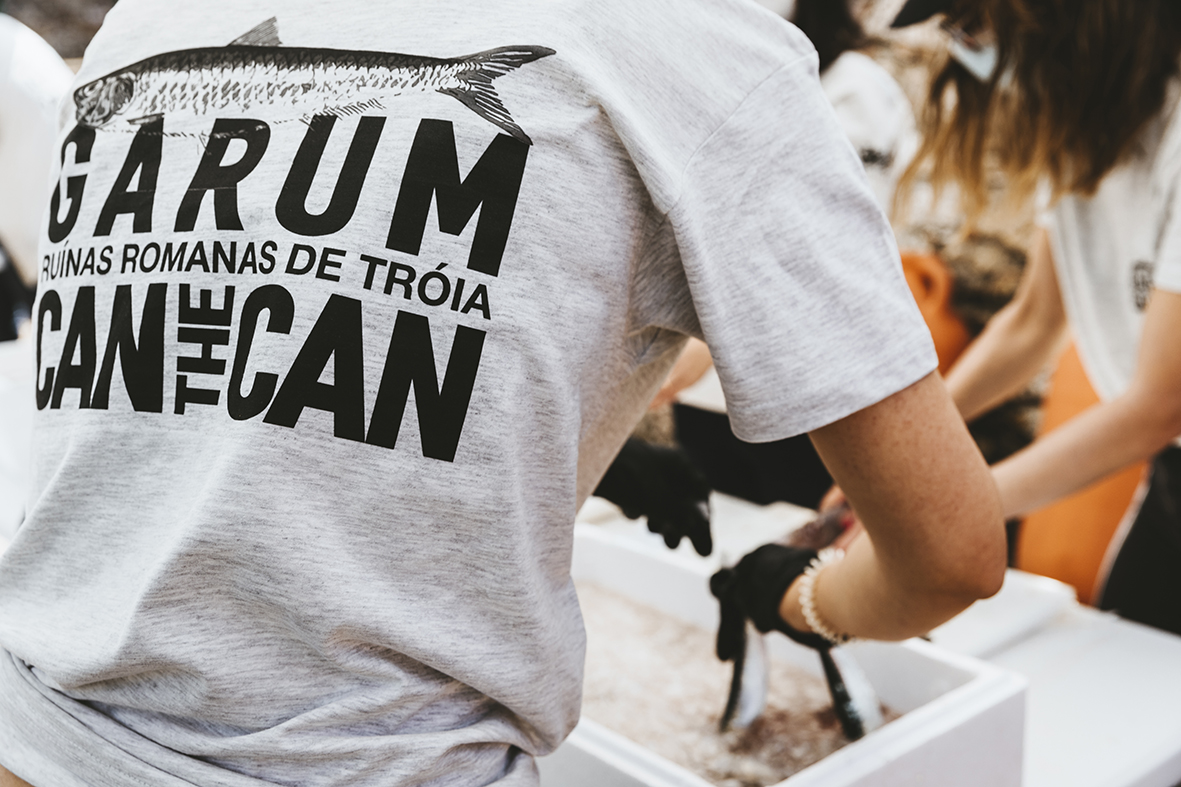

PROJECT DATA SHEET
RESEARCH & PROJECT
CAN THE CAN – Pedro Almeida and Victor Moura Vicente
ARCHEOLOGY
ROMAN RUINS OF TROIA – Archaeologists Inês Vaz Pinto and Patrícia Brum
FOOD RESEARCH
Centro de Investigação em Agronomia, Alimentos, Ambiente e Paisagem do Instituto Superior de Agronomia: Marisa Santos, Catarina Prista e Anabela Raymundo
ZOOARCHEOLOGY
Laboratório de Arqueociências da Direcção Geral do Património Cultural – Zooarqueóloga Sónia Gabriel
PALINOTOLOGY
Laboratório de Arqueociências da Direcção Geral do Património Cultural – palinóloga Patrícia Mendes
PROVIDERS
Sardines supply Sesibal – Cooperativa de Pescas de Setubal, Sesimbra e Sines, Ricardo Santos
Supply of salt from the Sado Valley – Carlos Bicha & Filhos, Lda, Alcácer do Sal
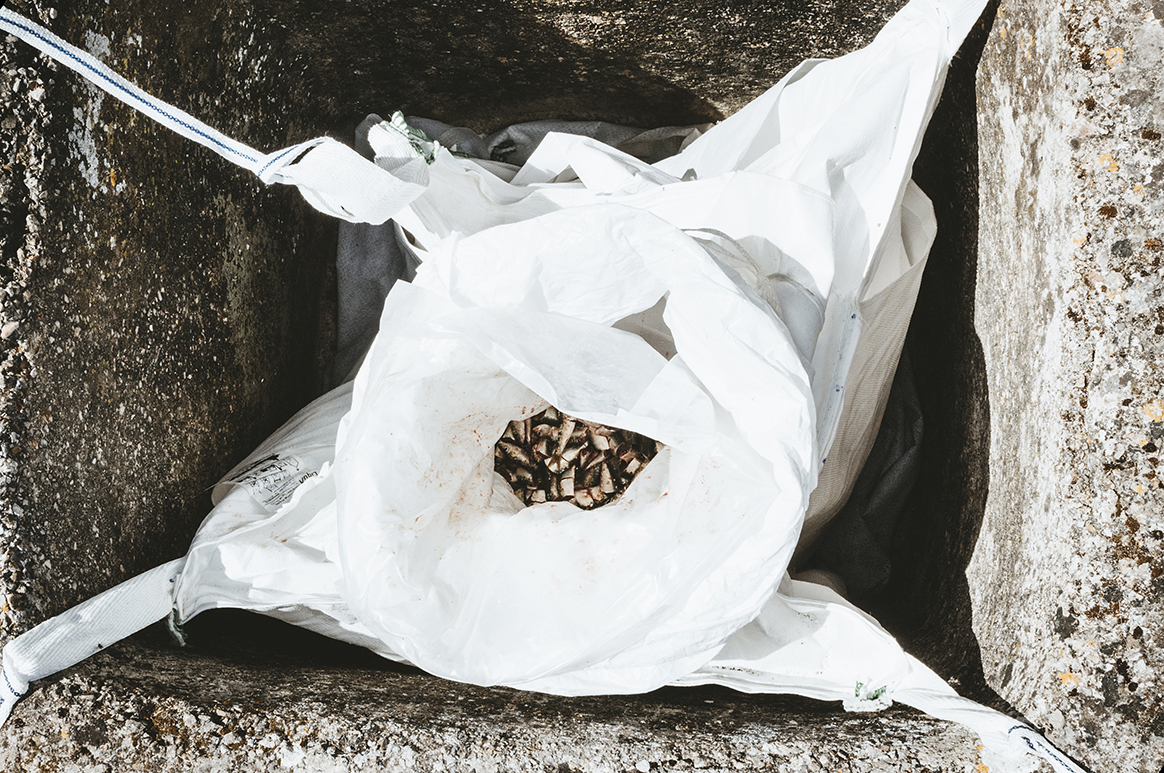
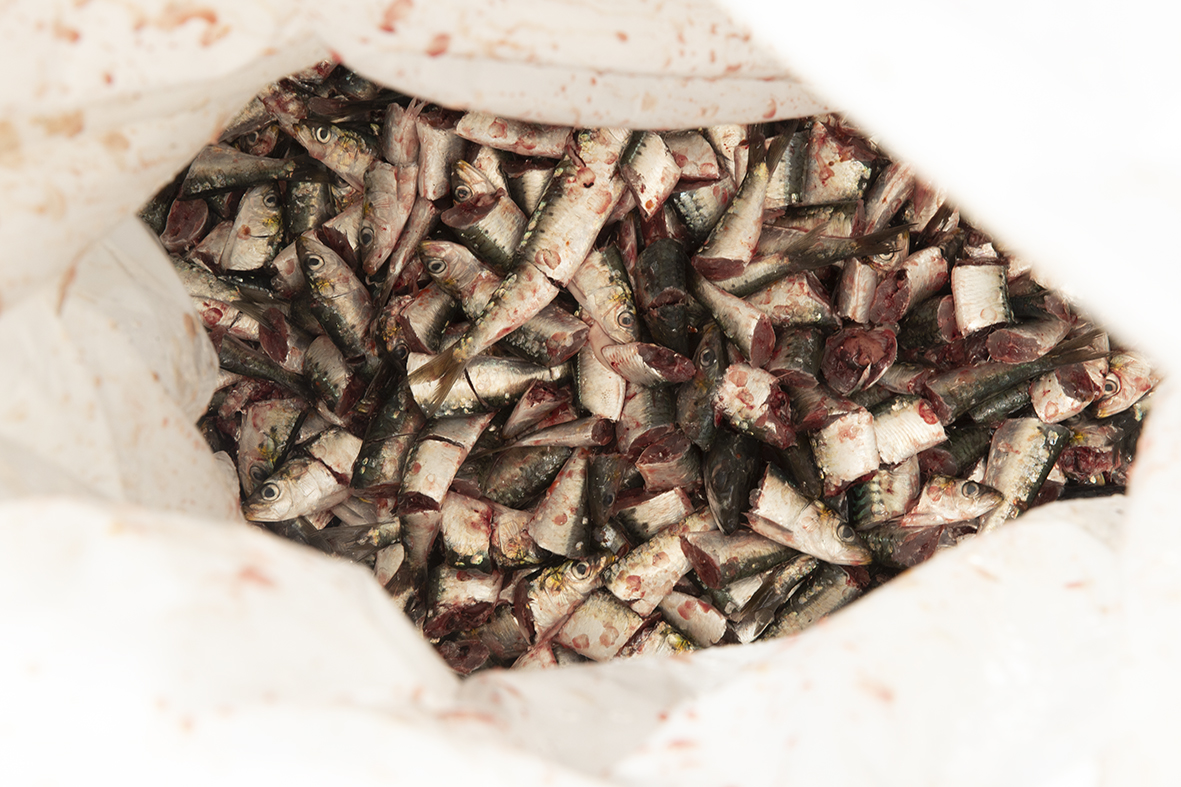
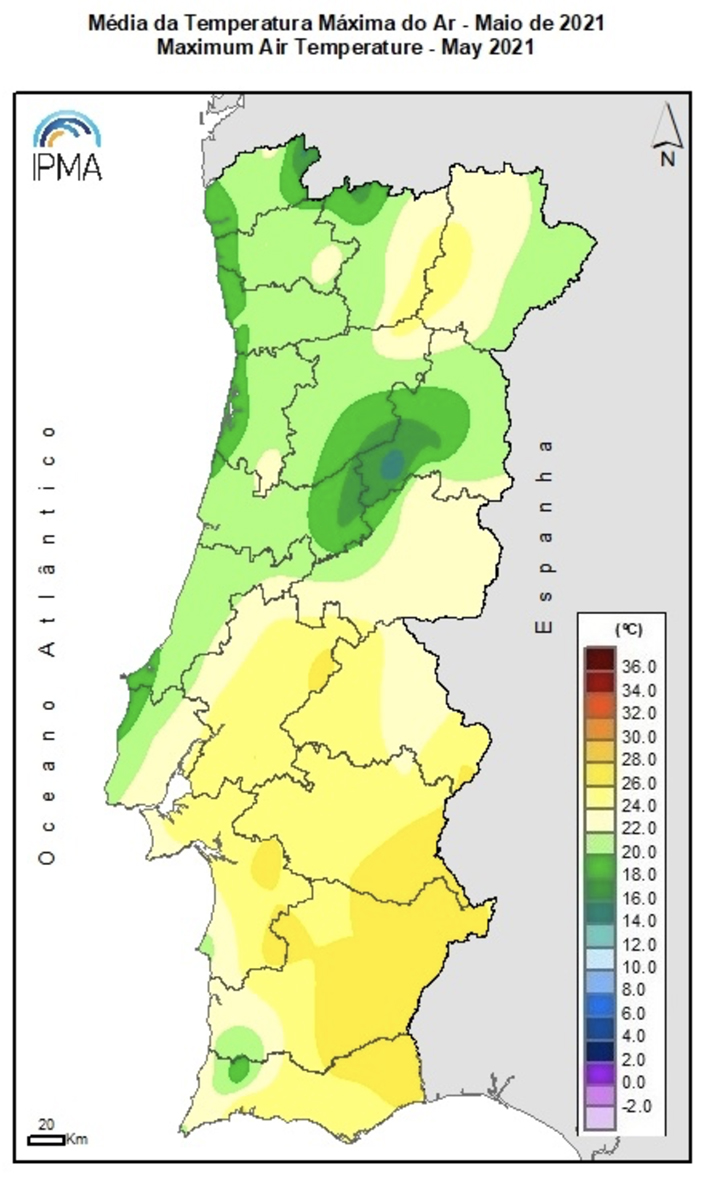
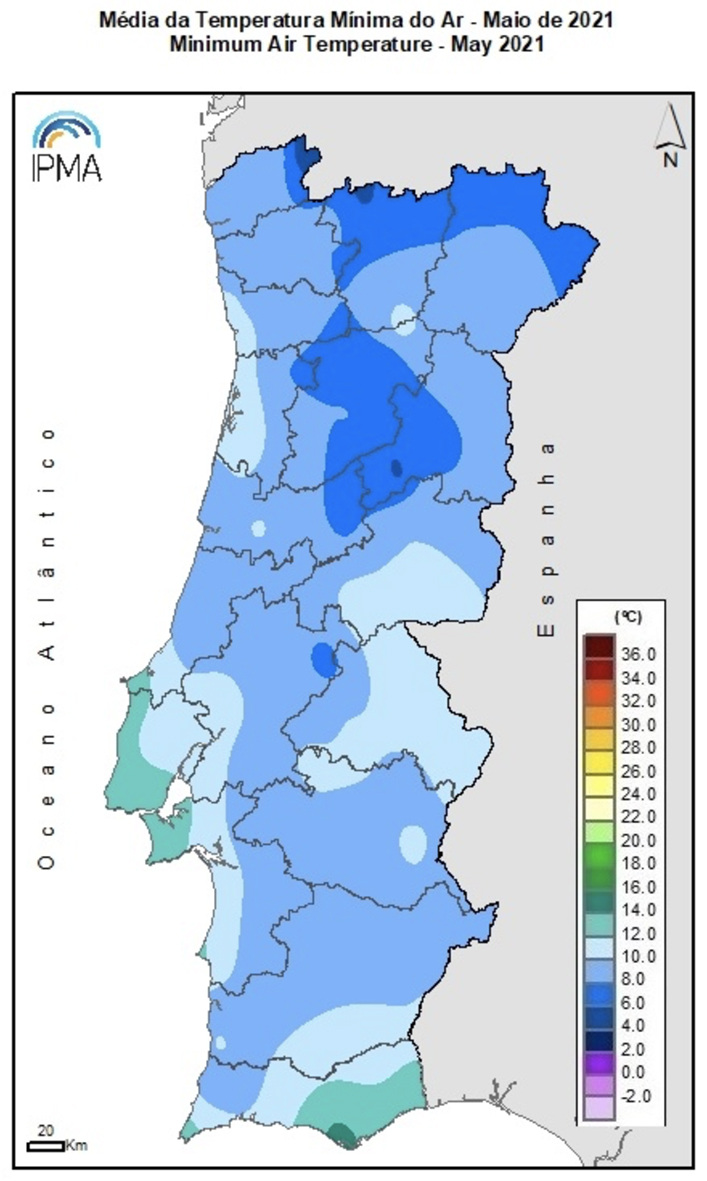
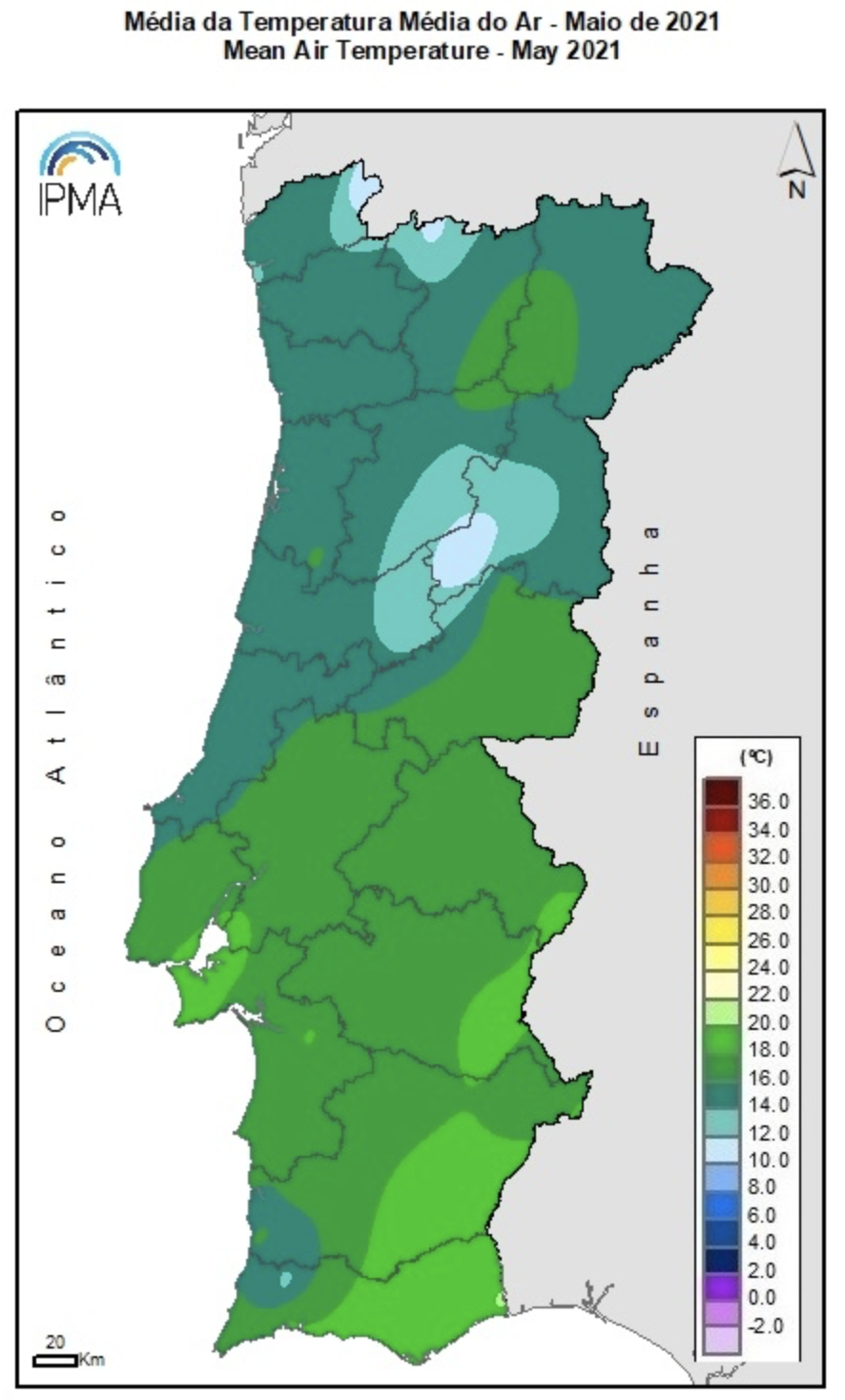
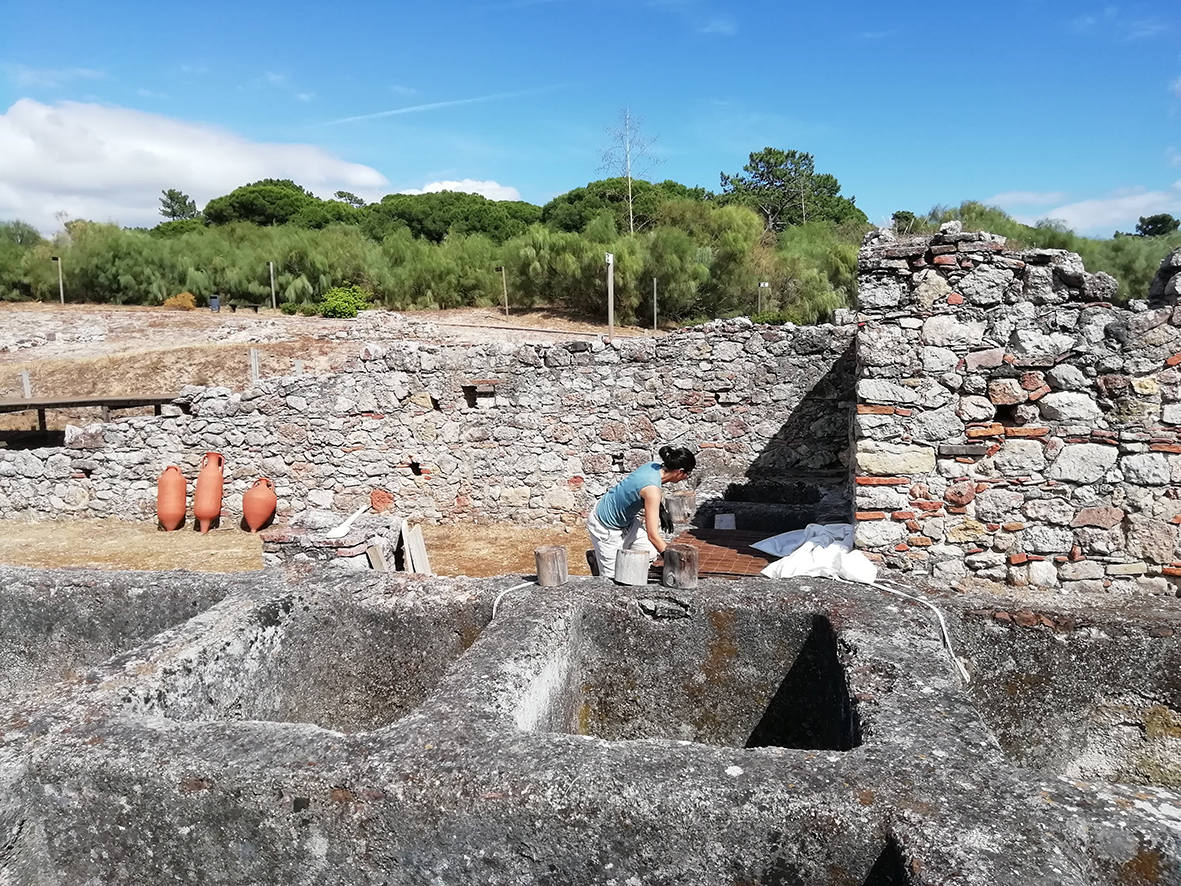
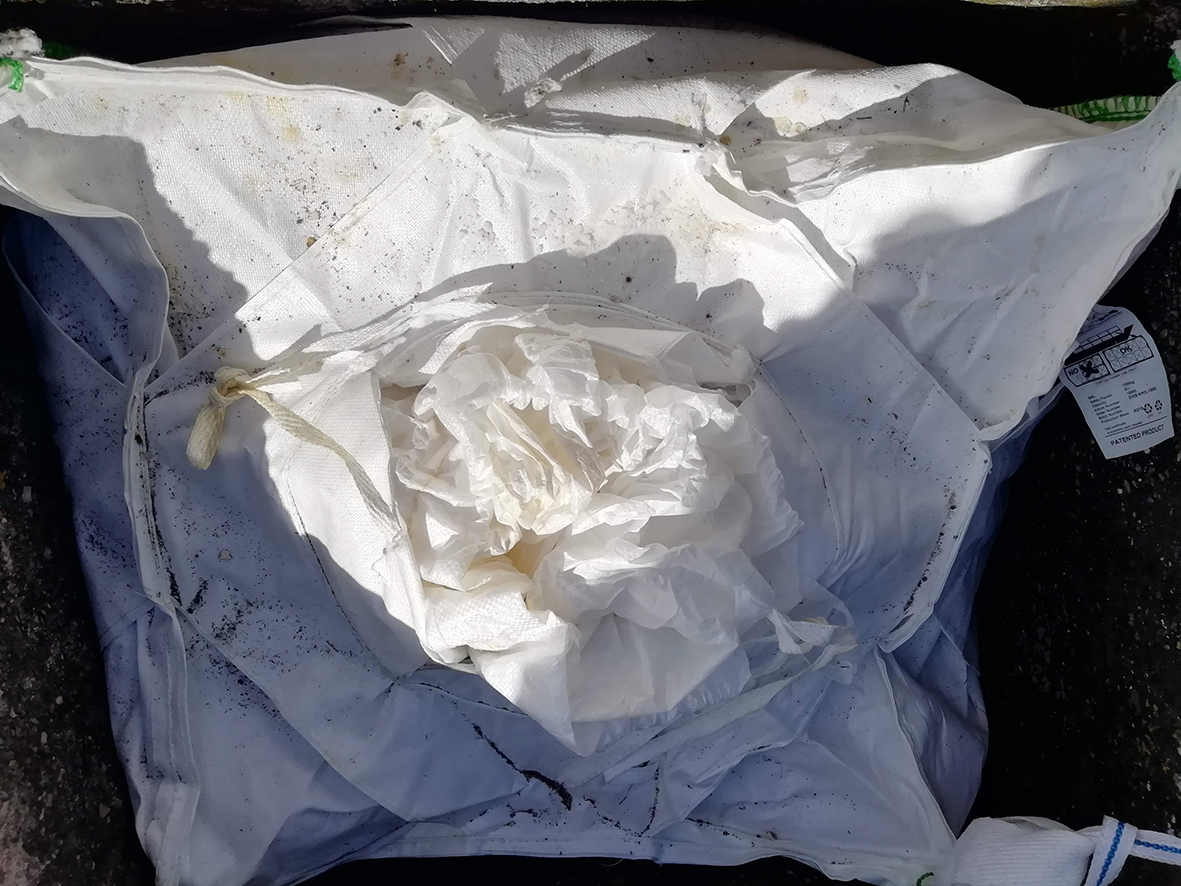
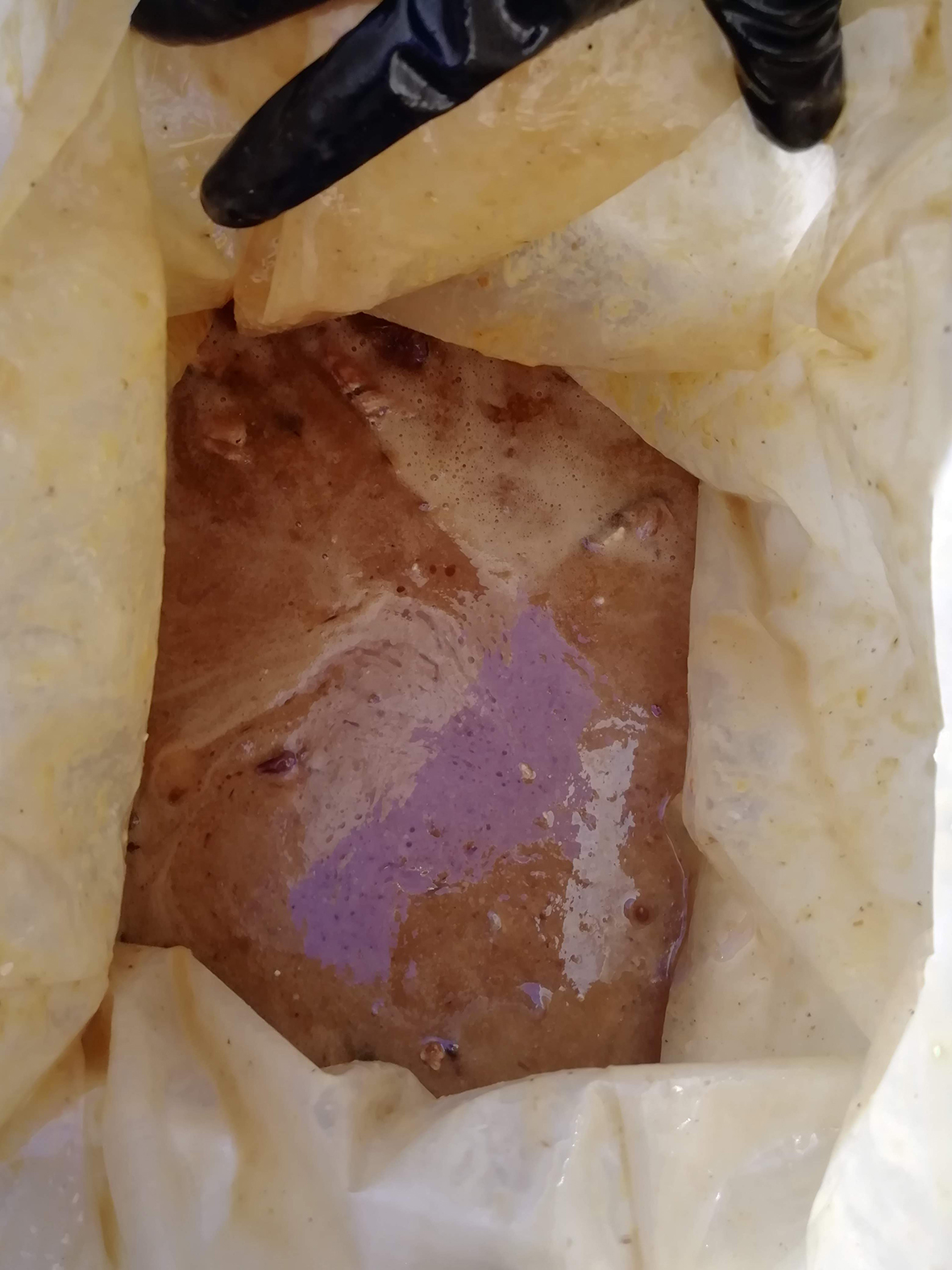
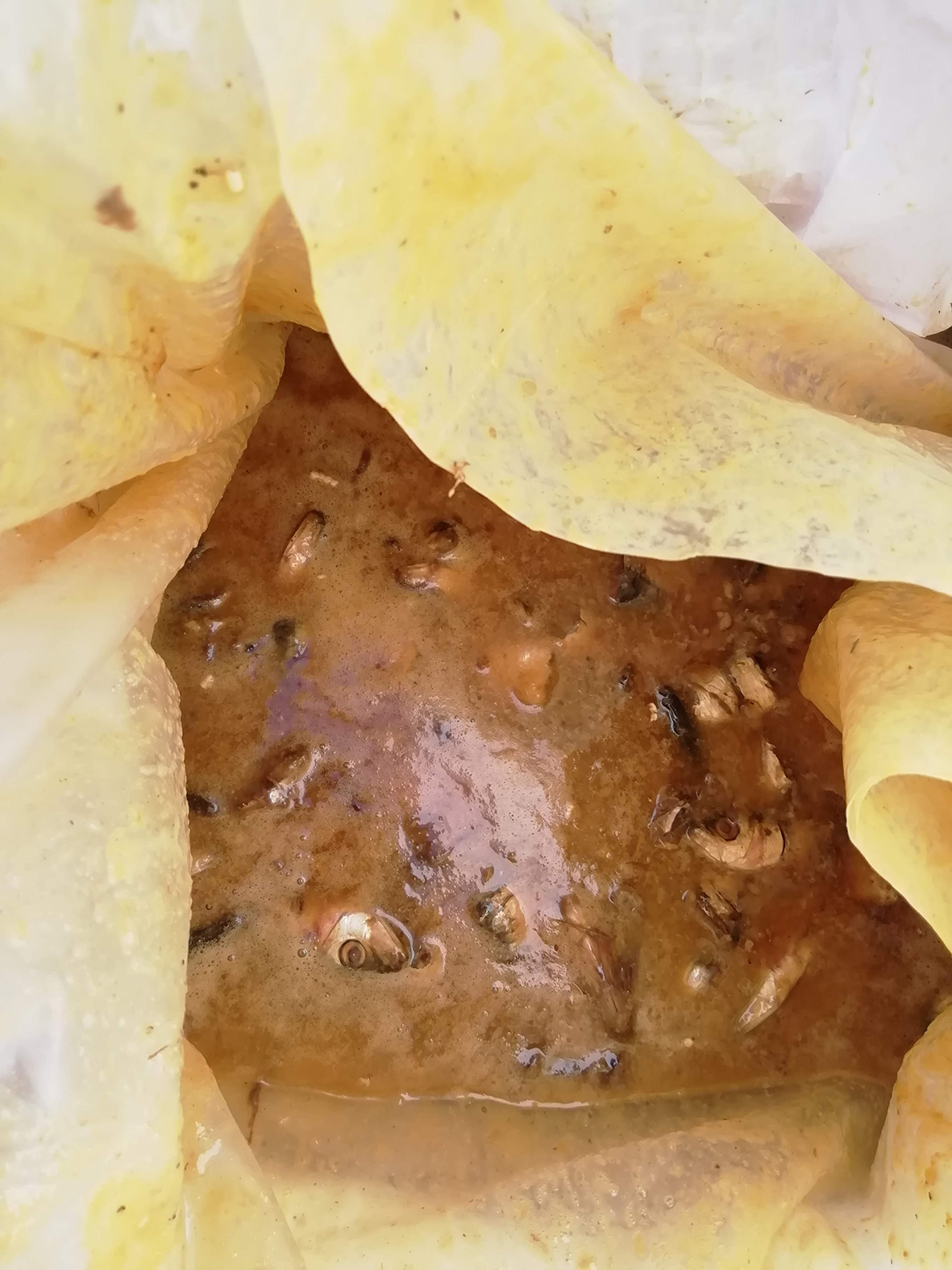
Collecting first sample for analysis
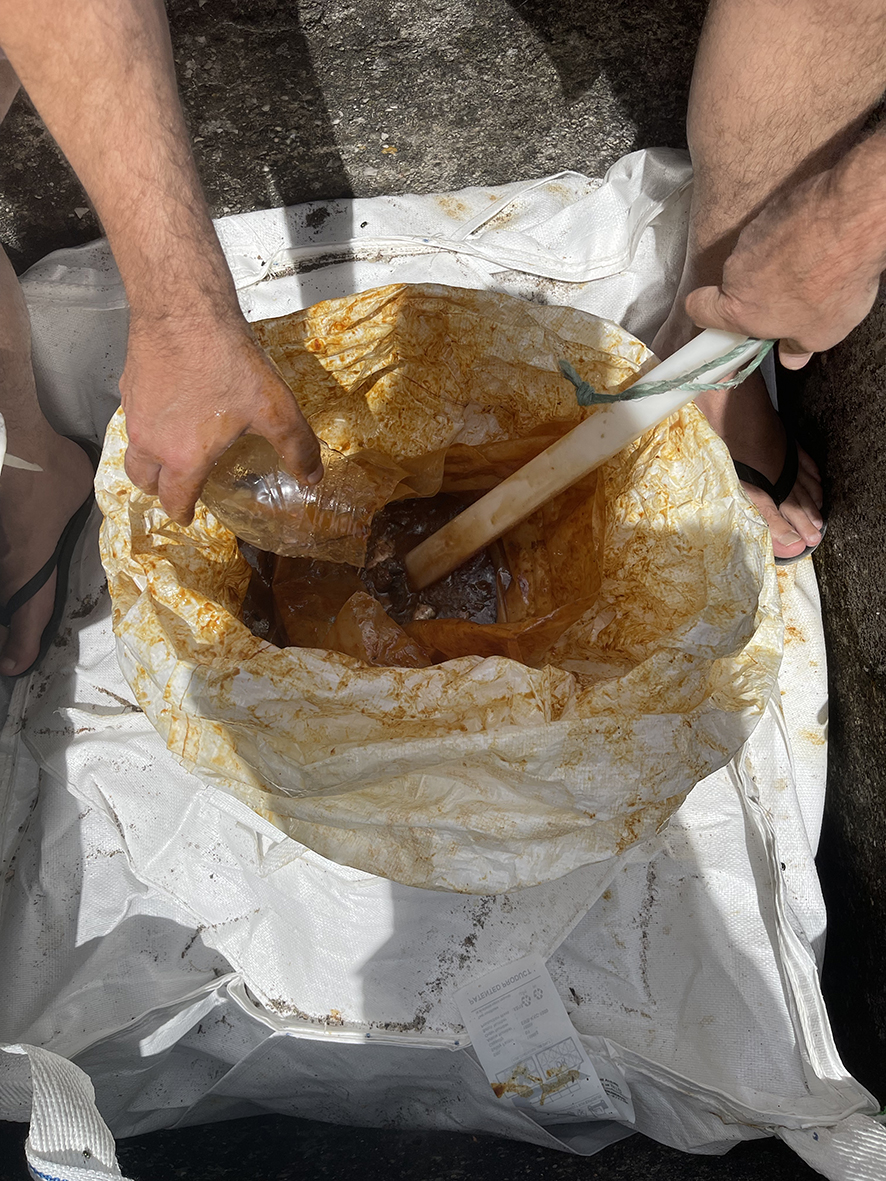
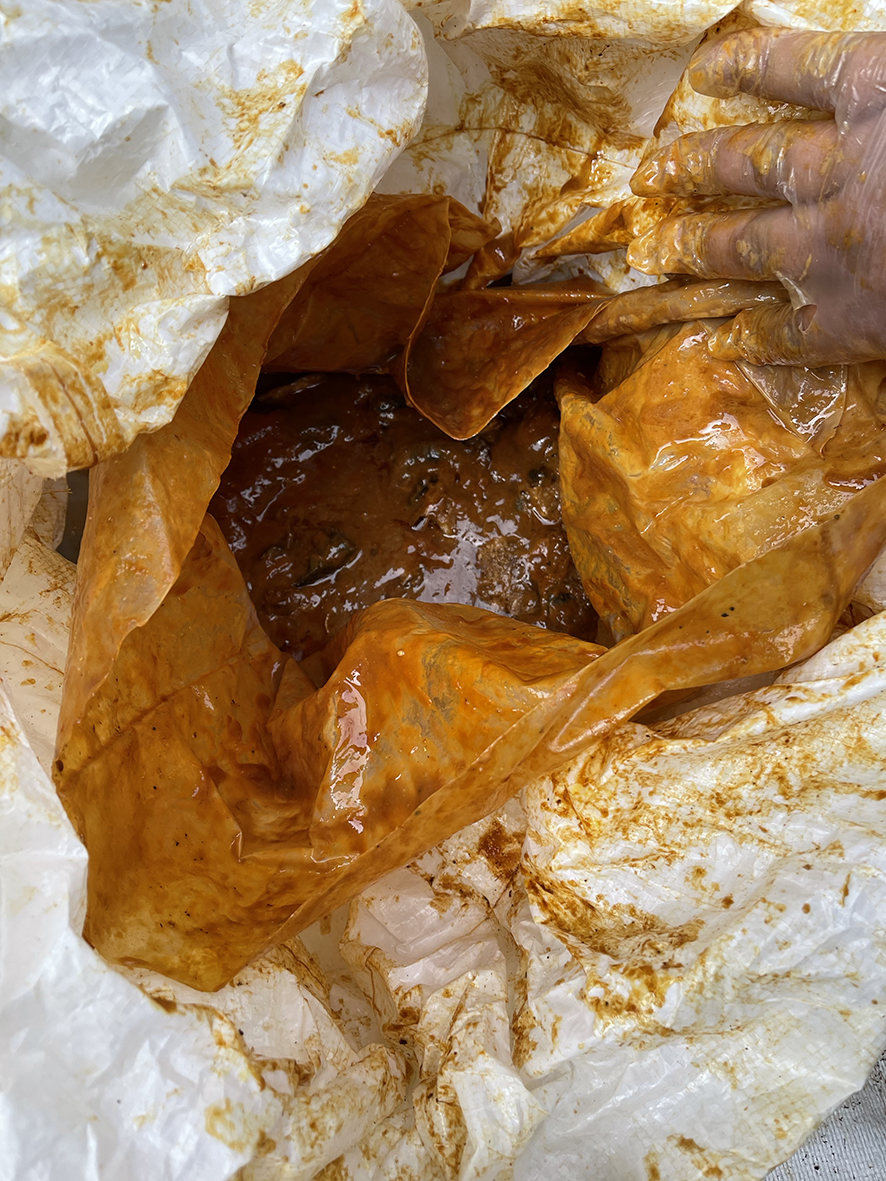
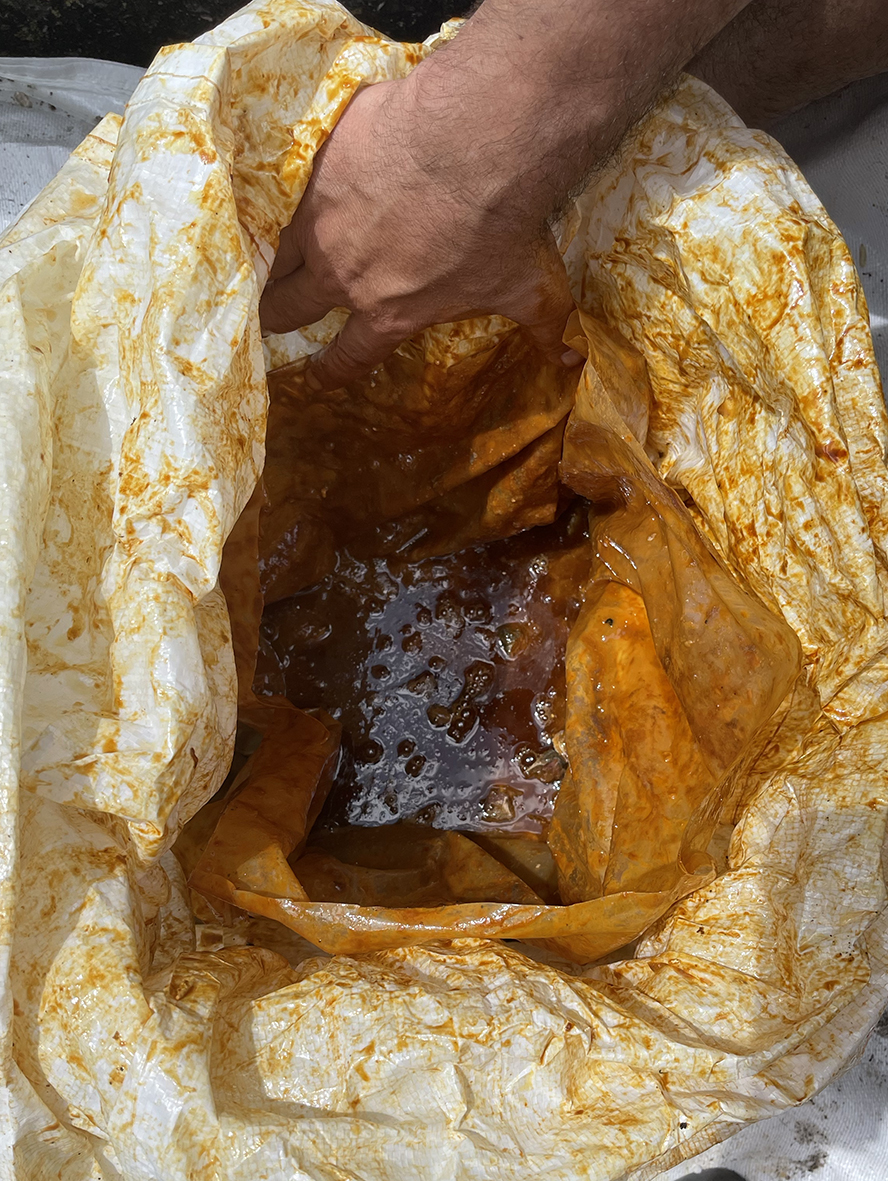
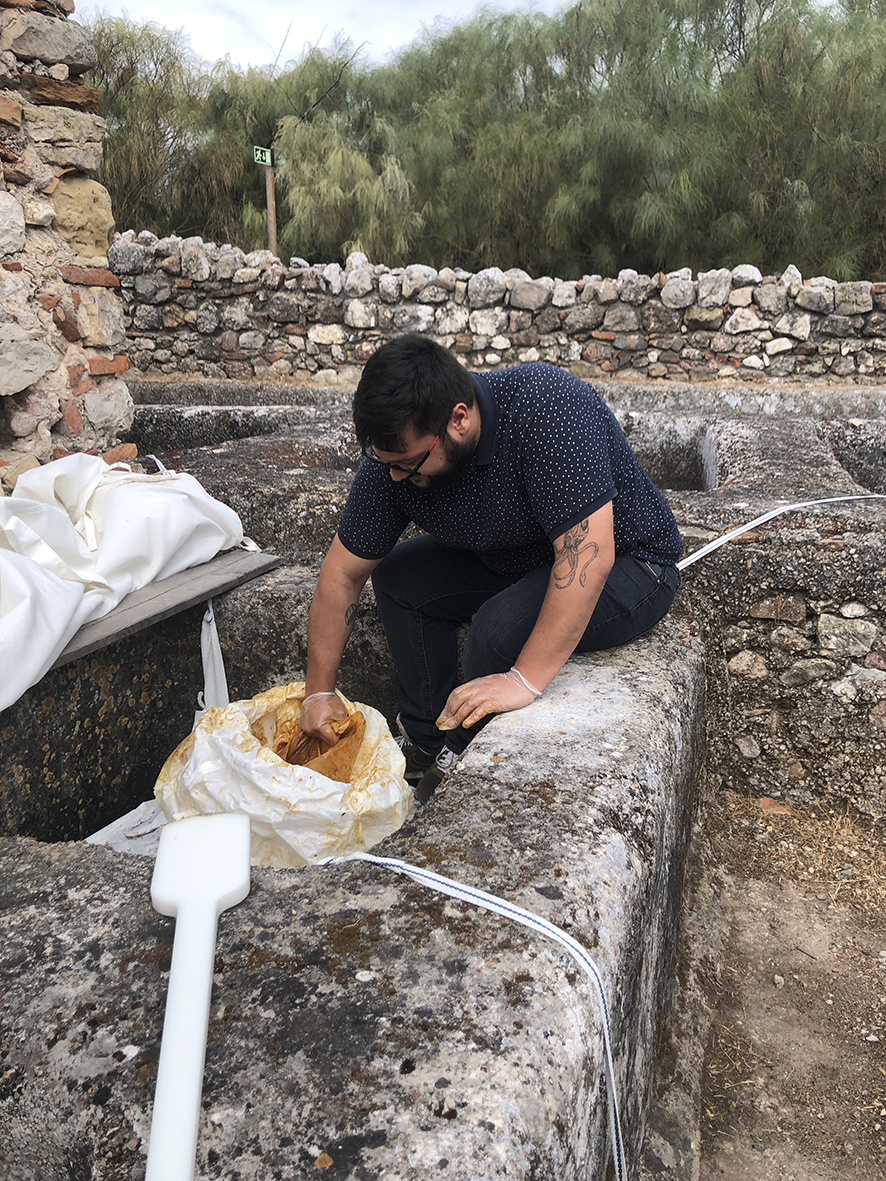
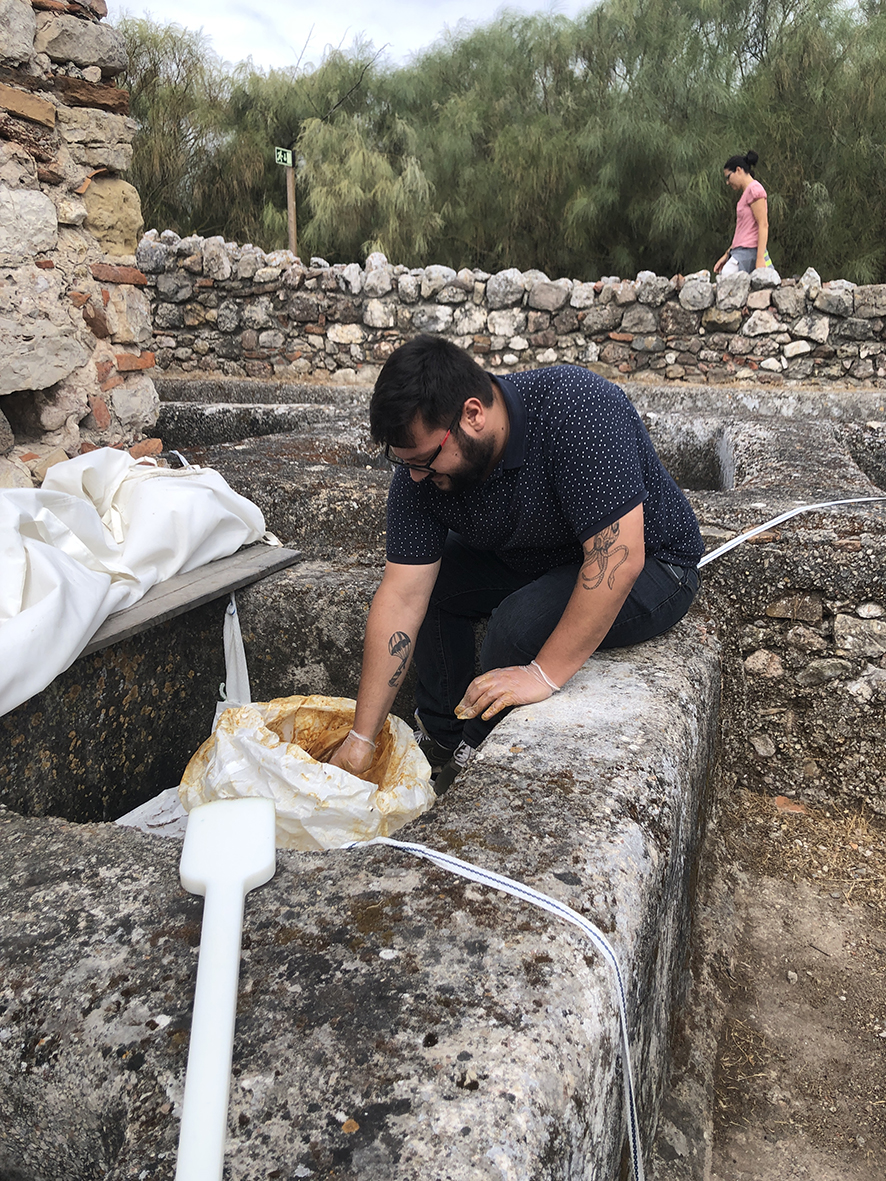
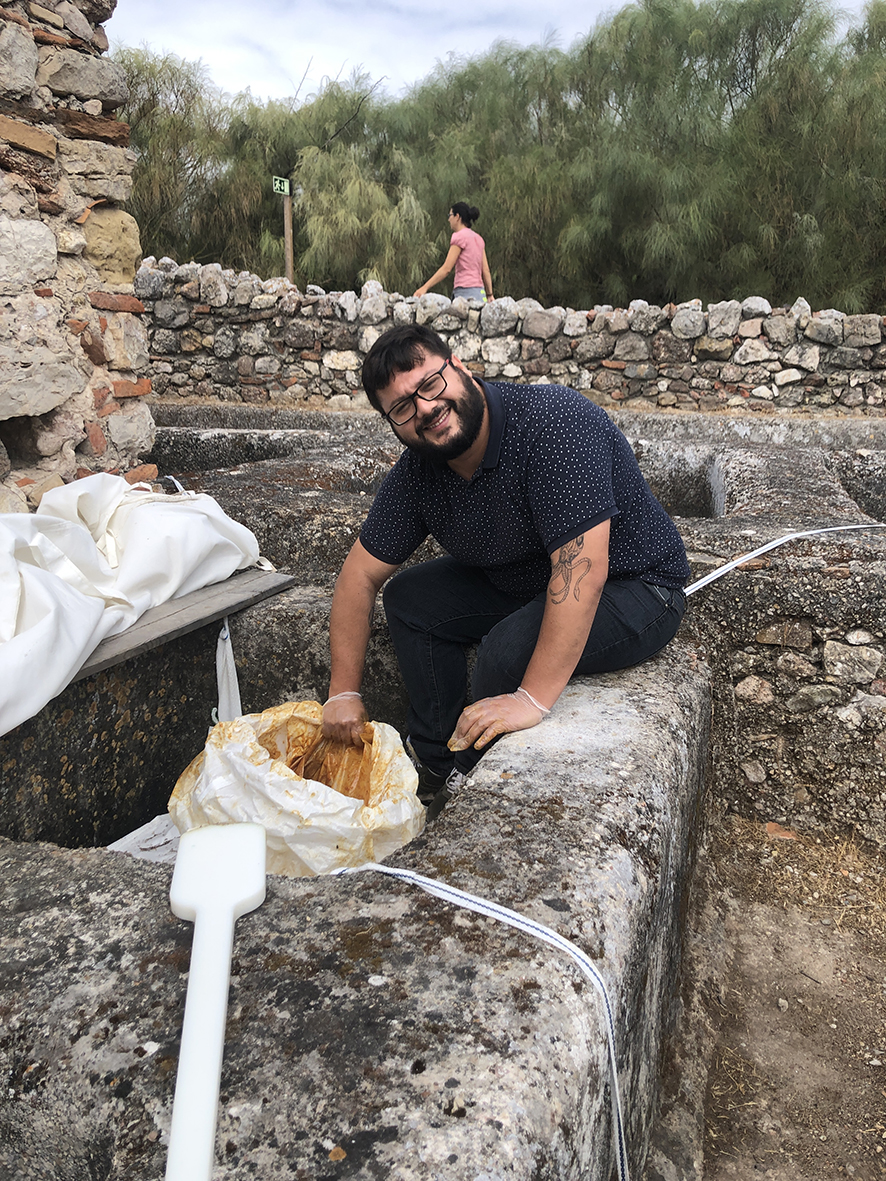
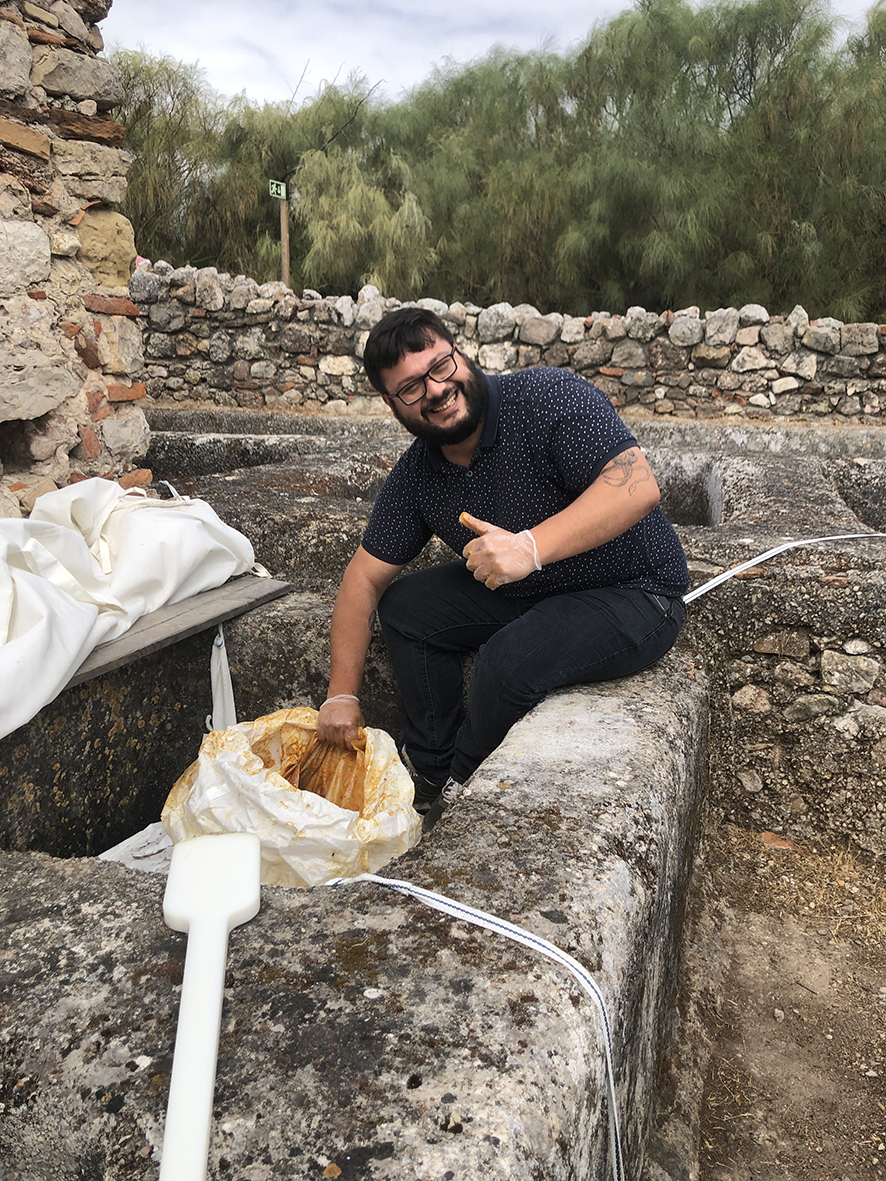
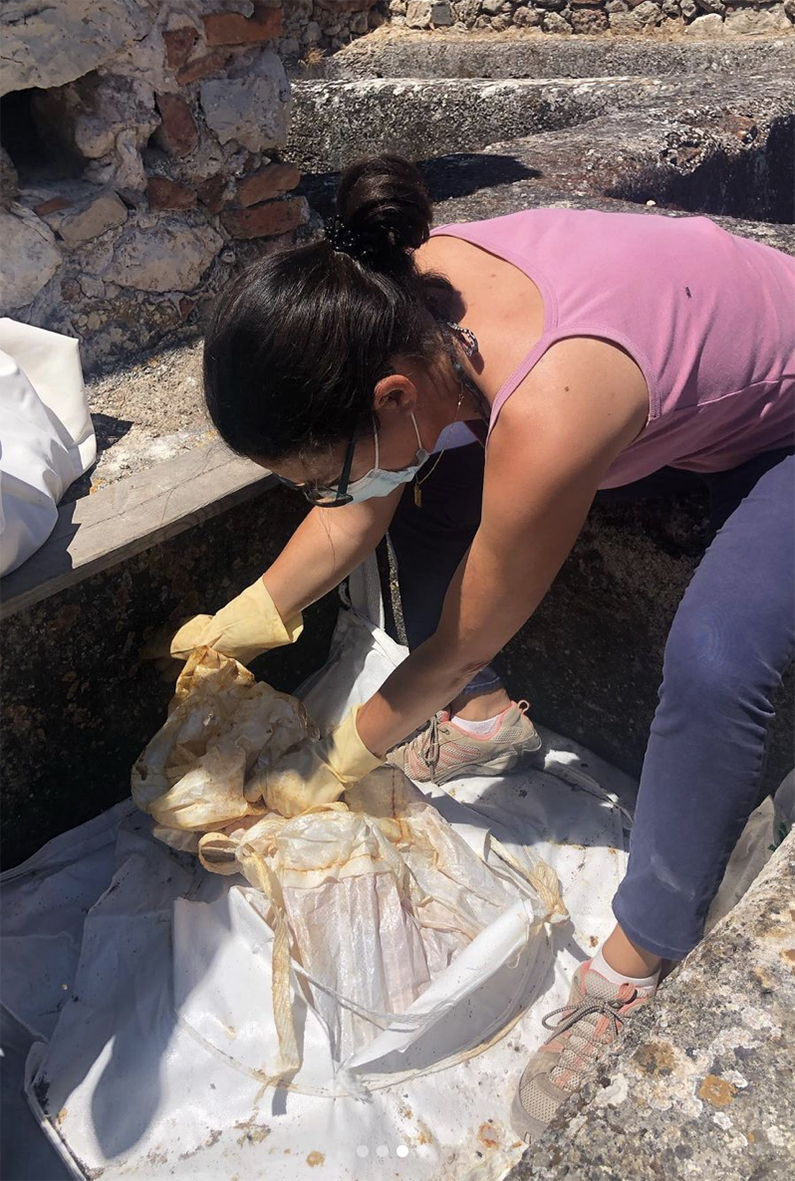
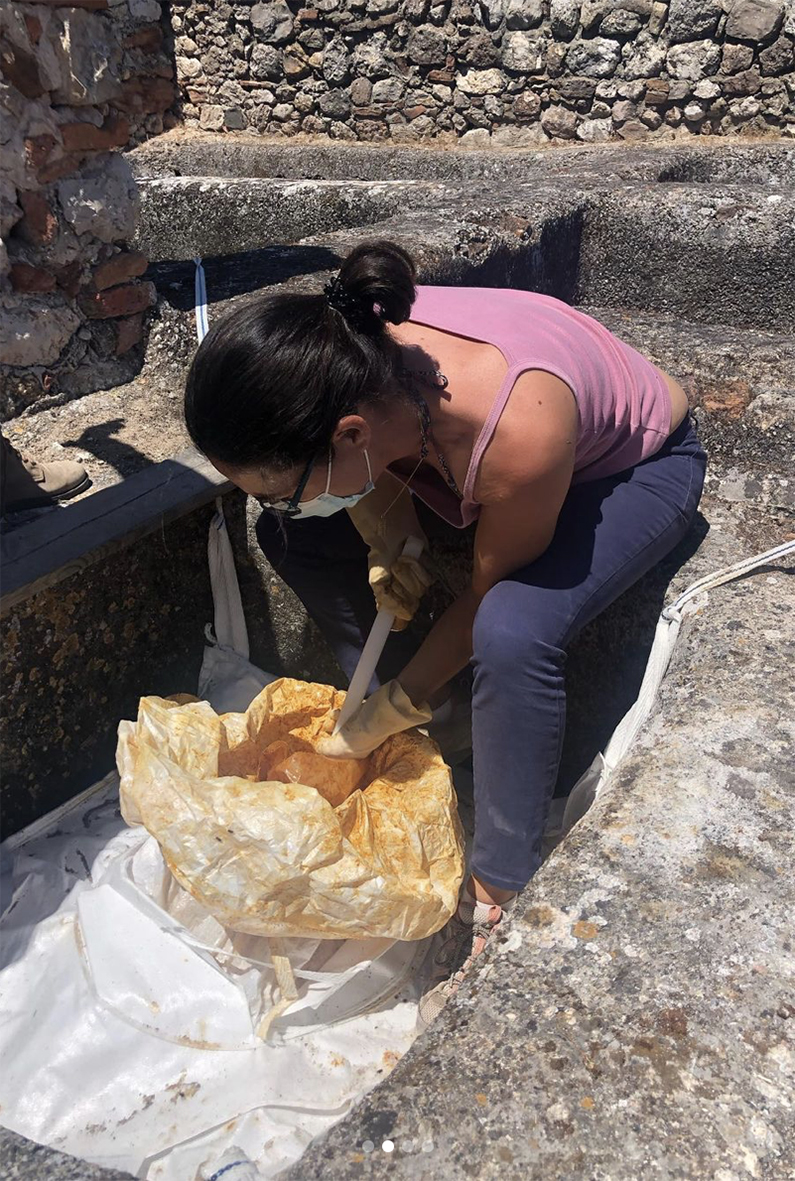
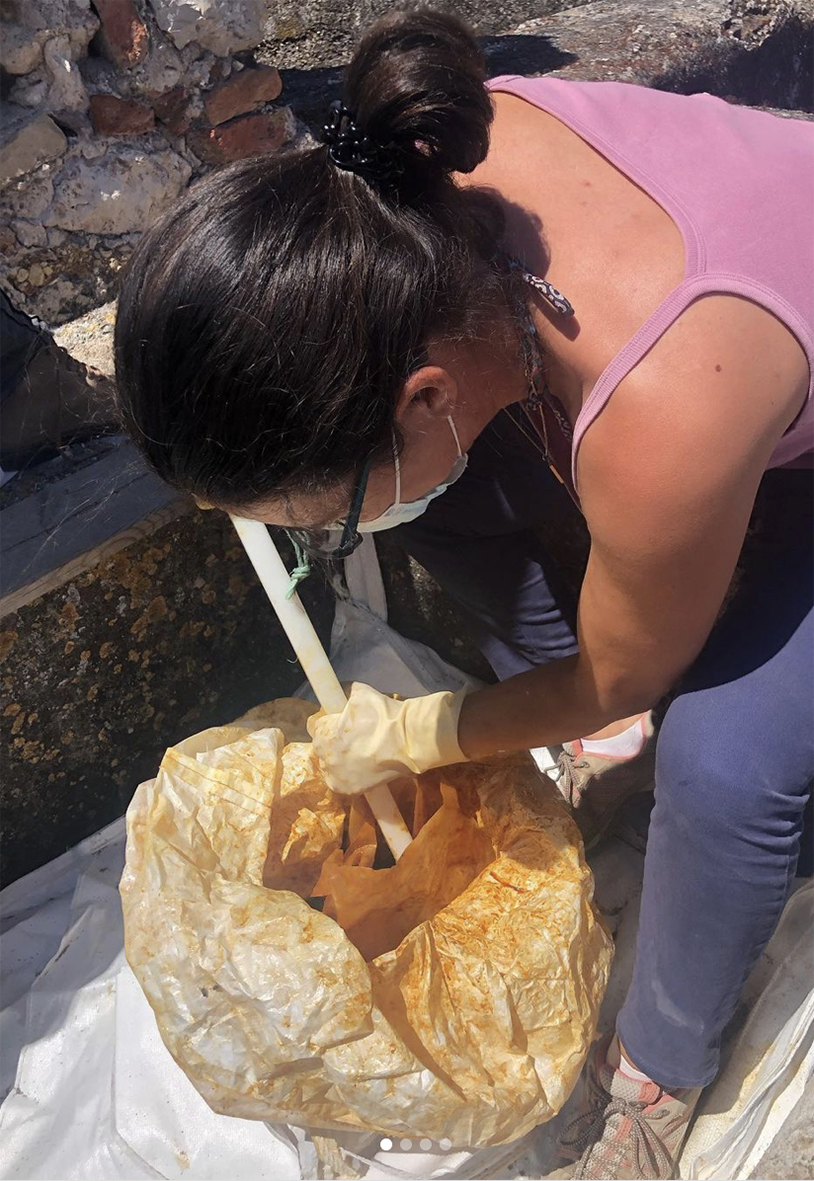
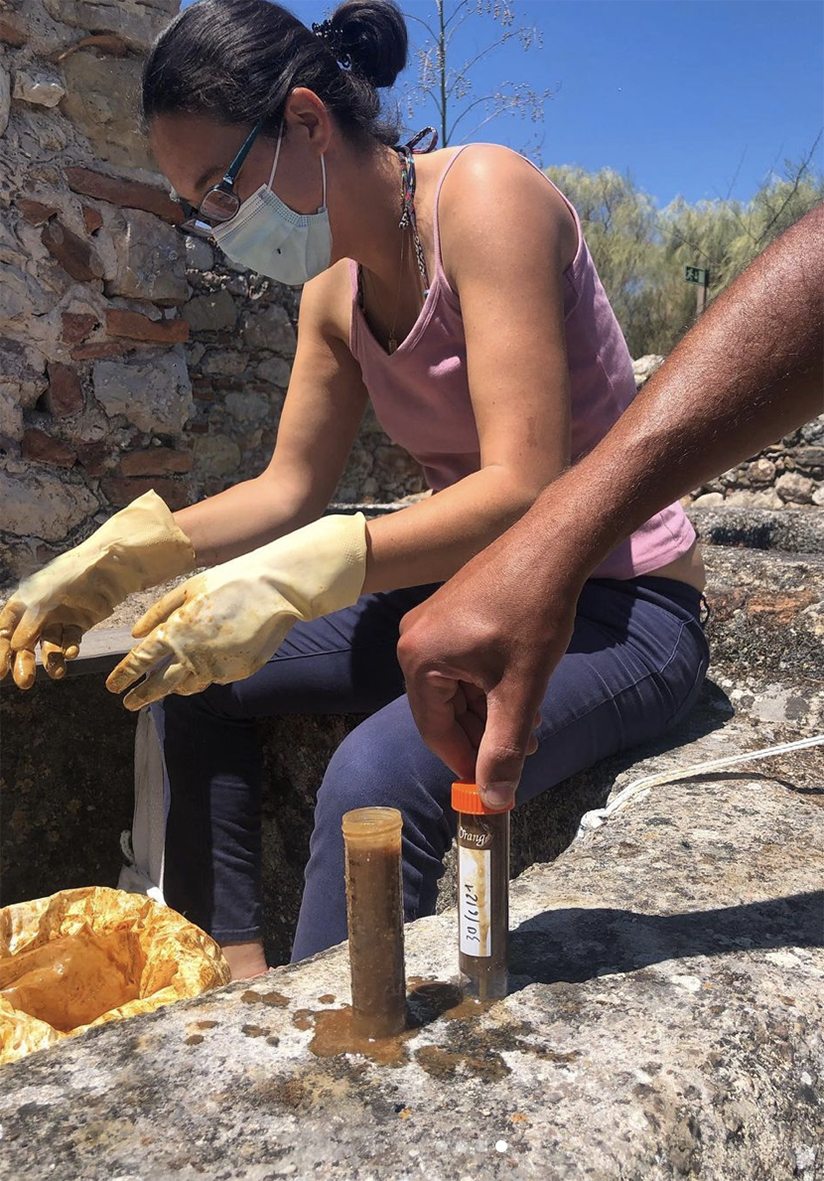
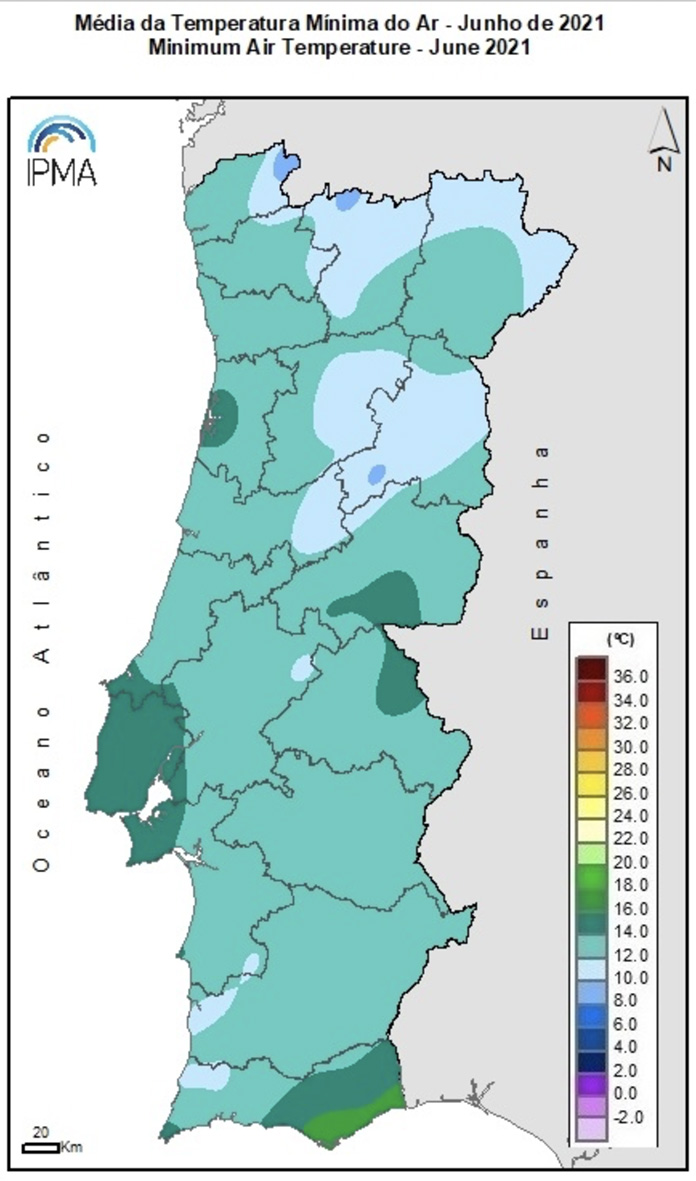
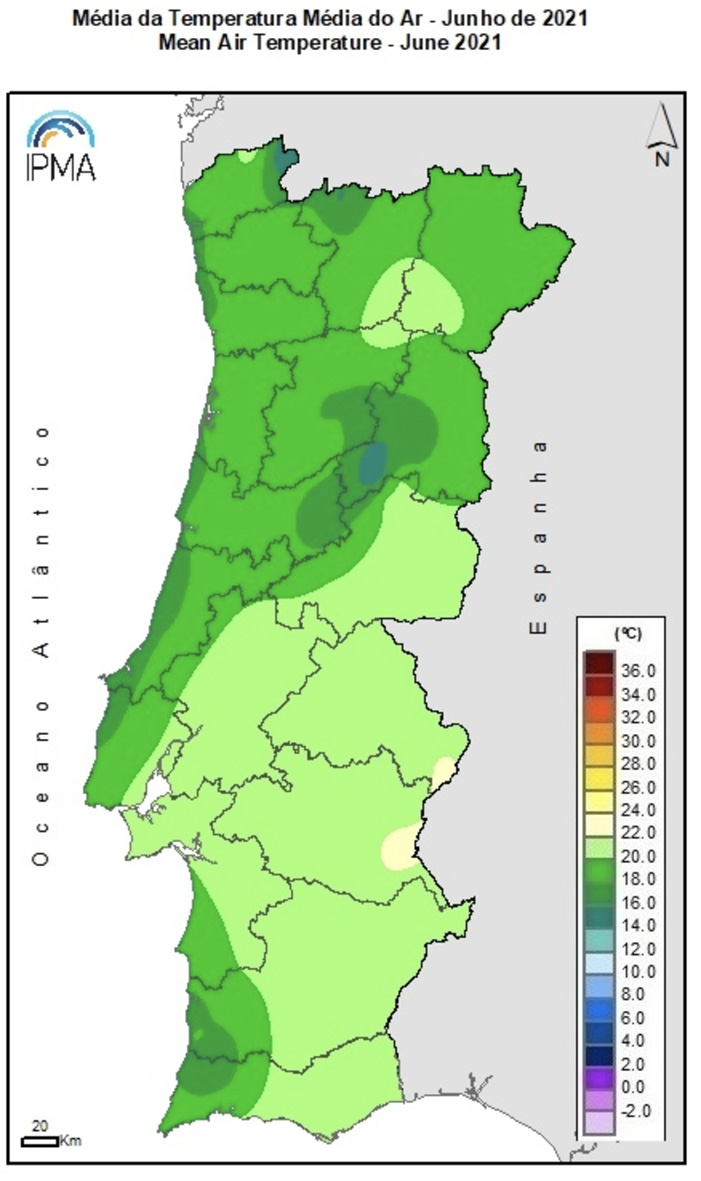
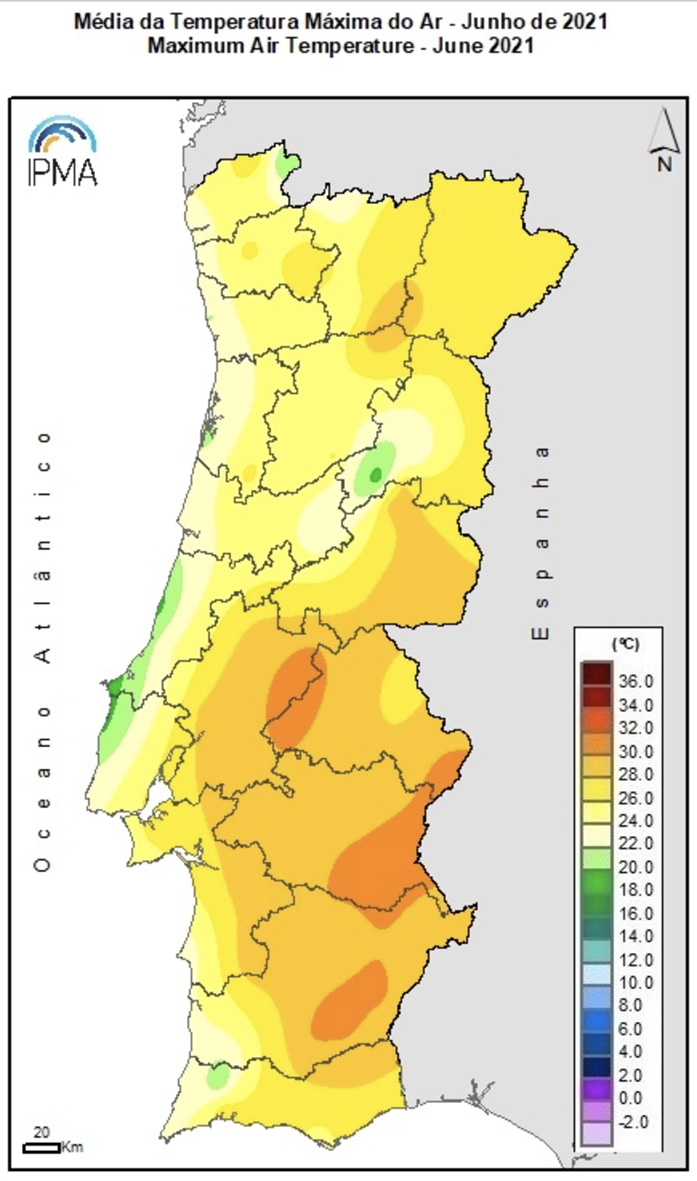
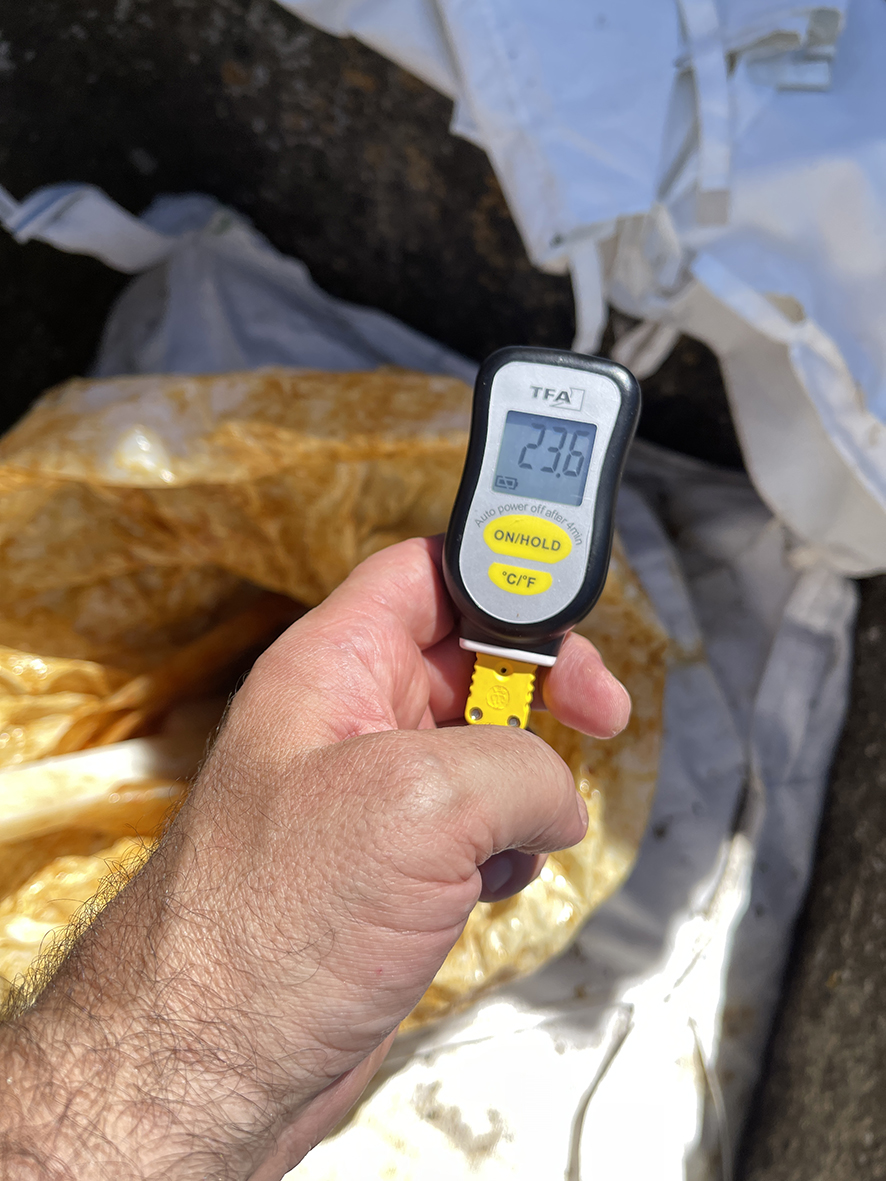
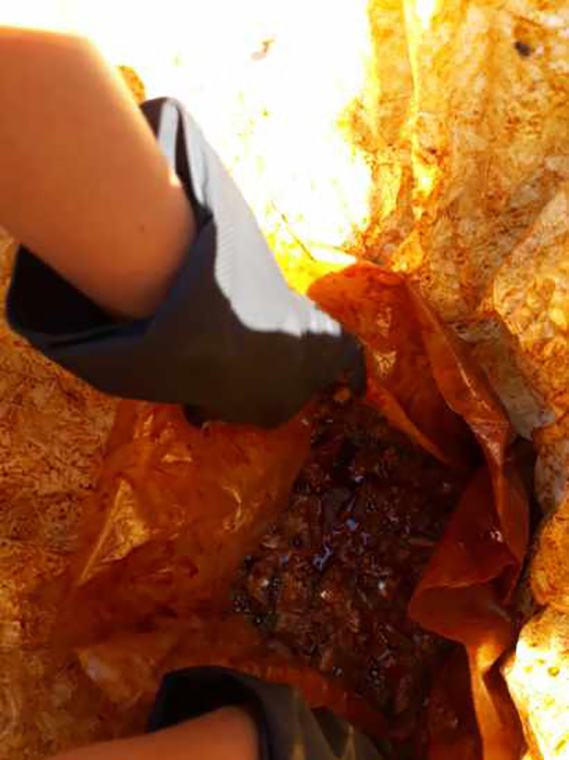
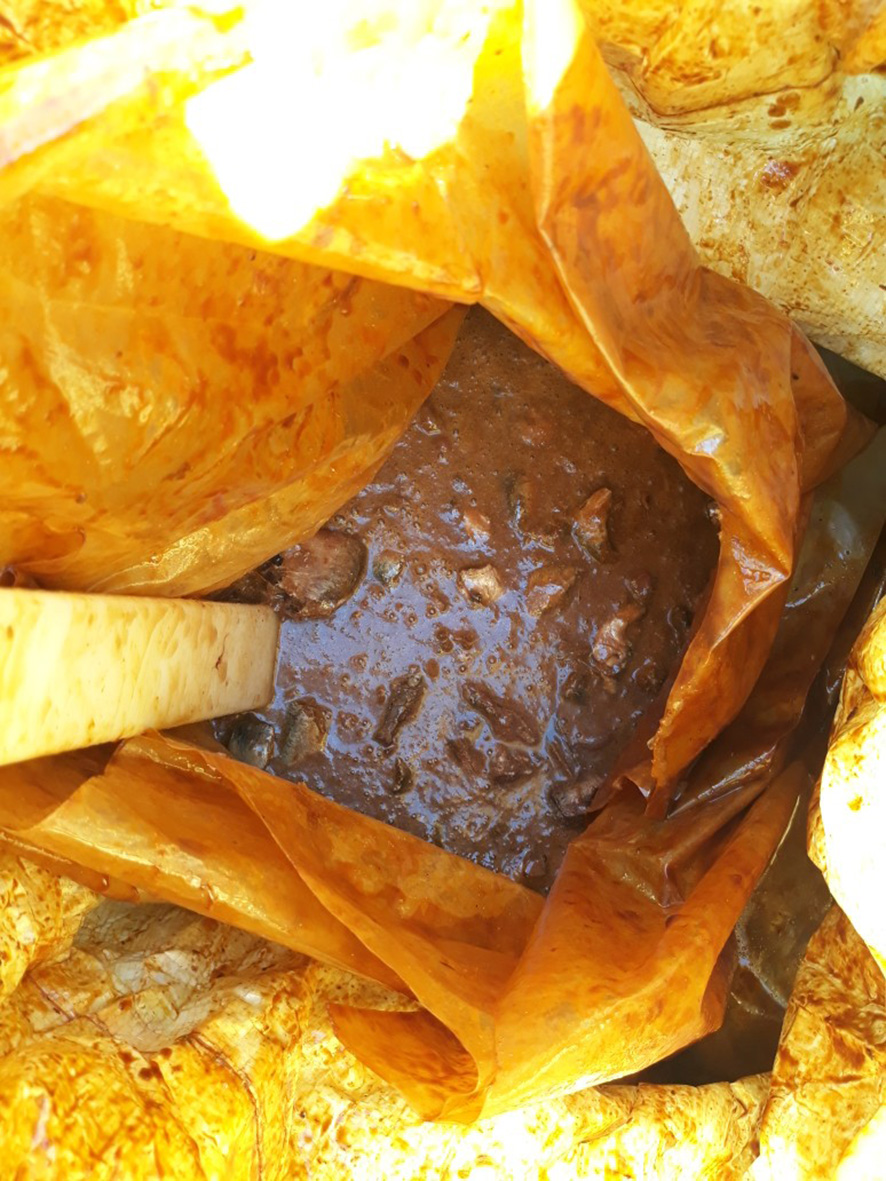
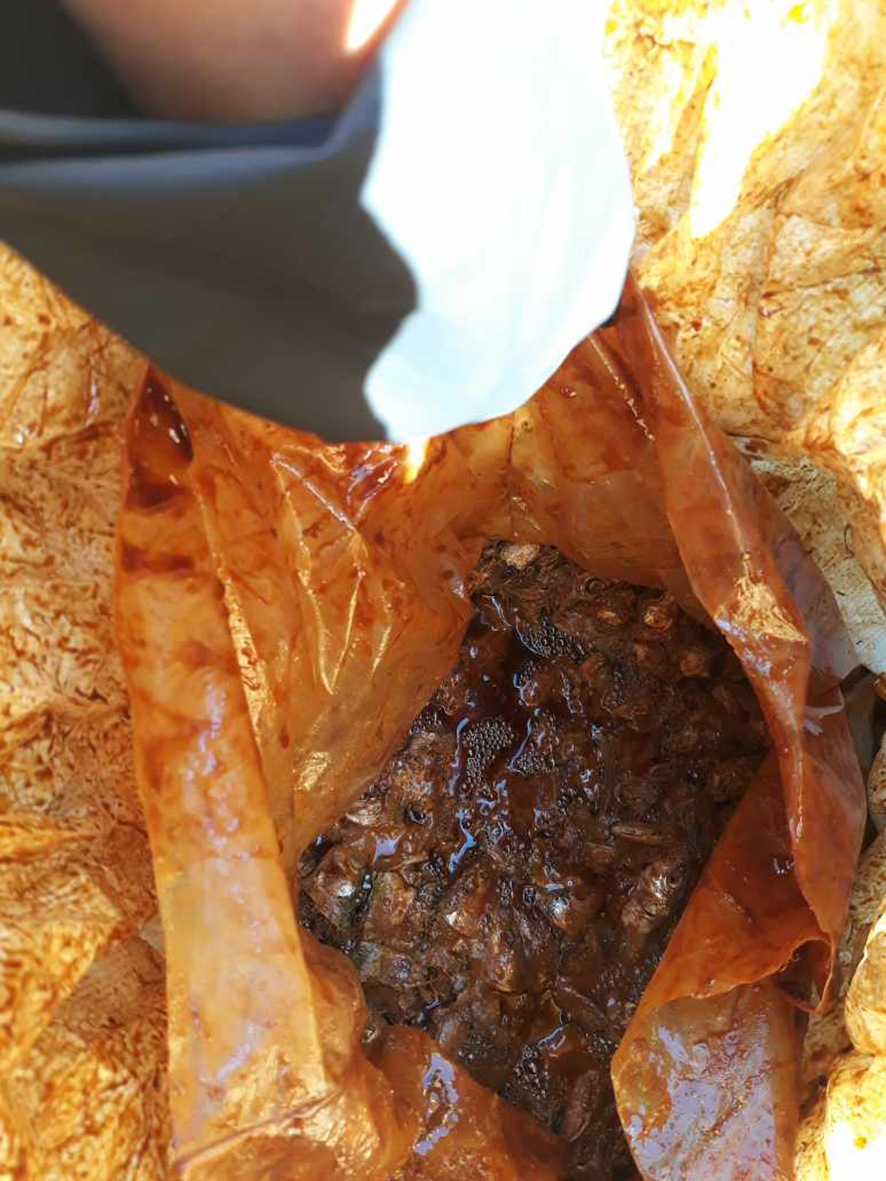
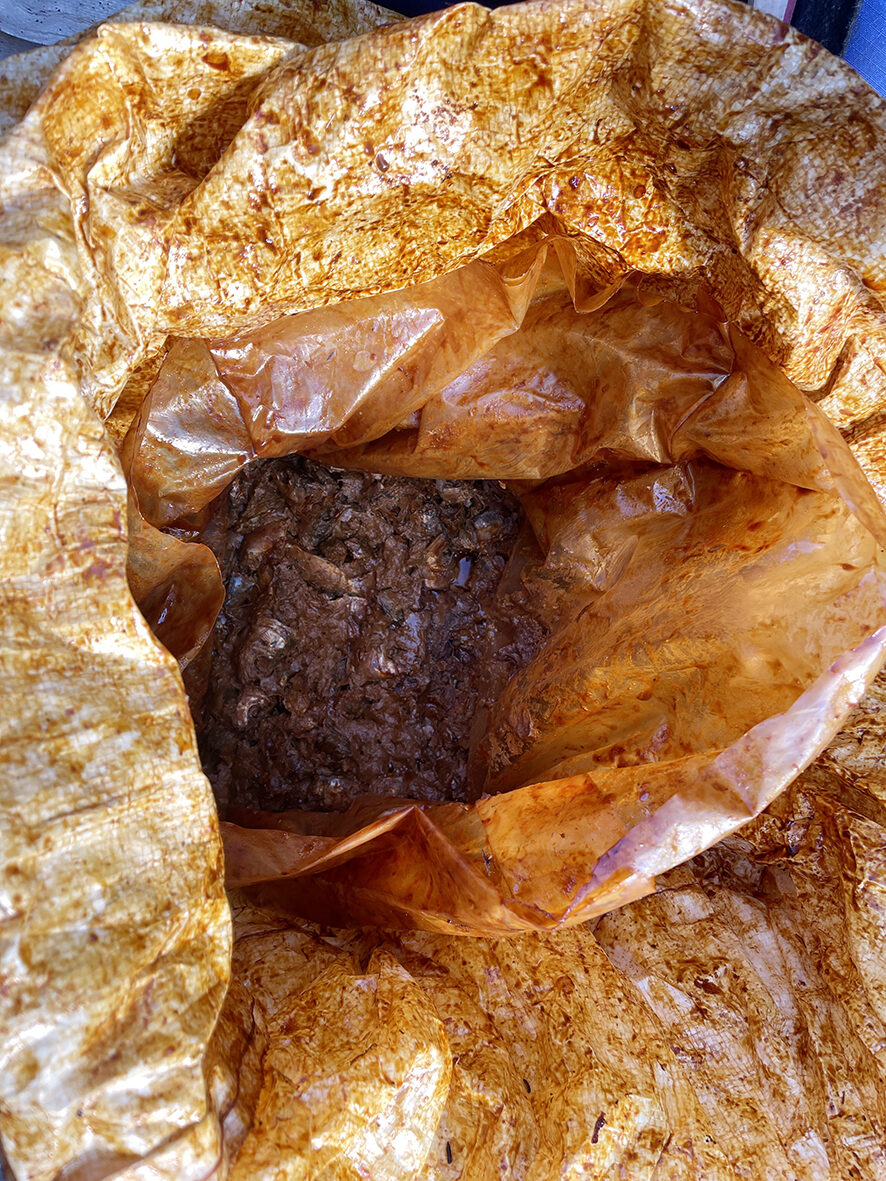
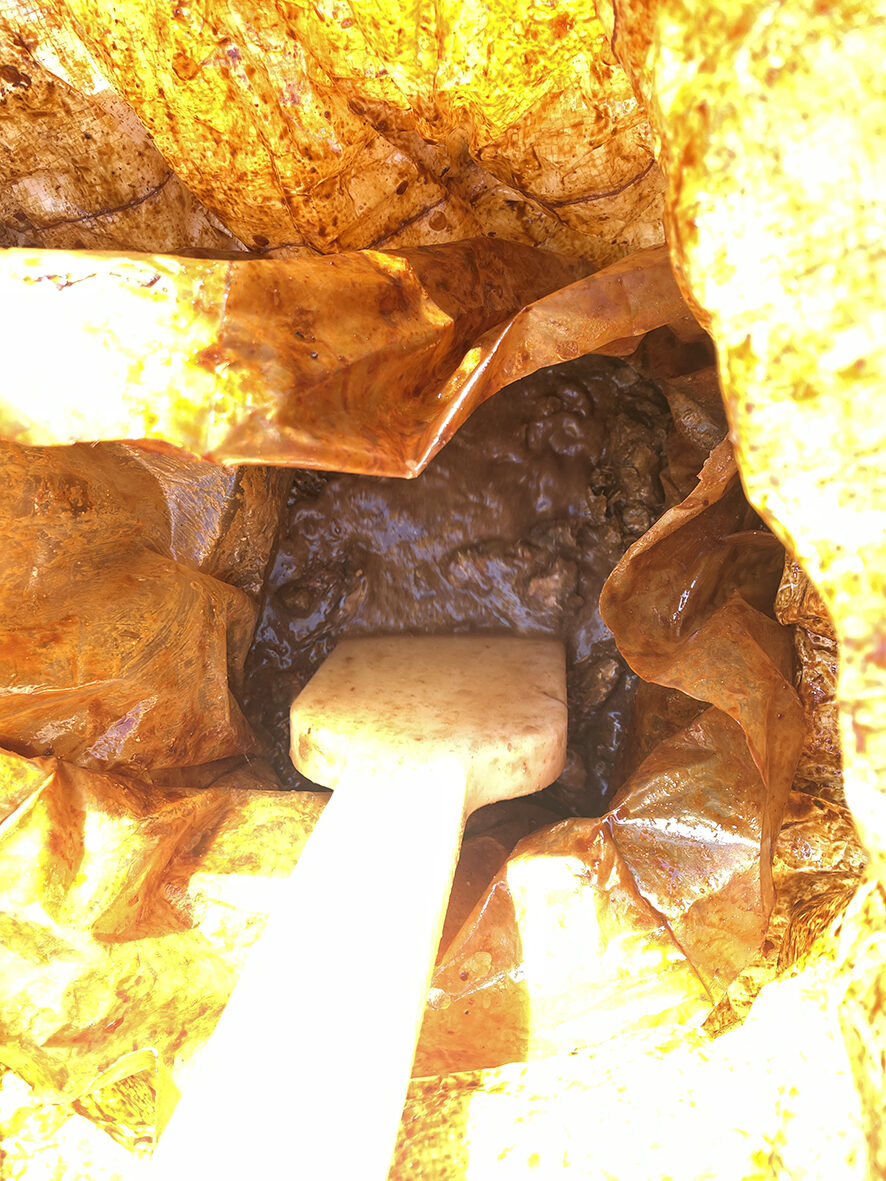
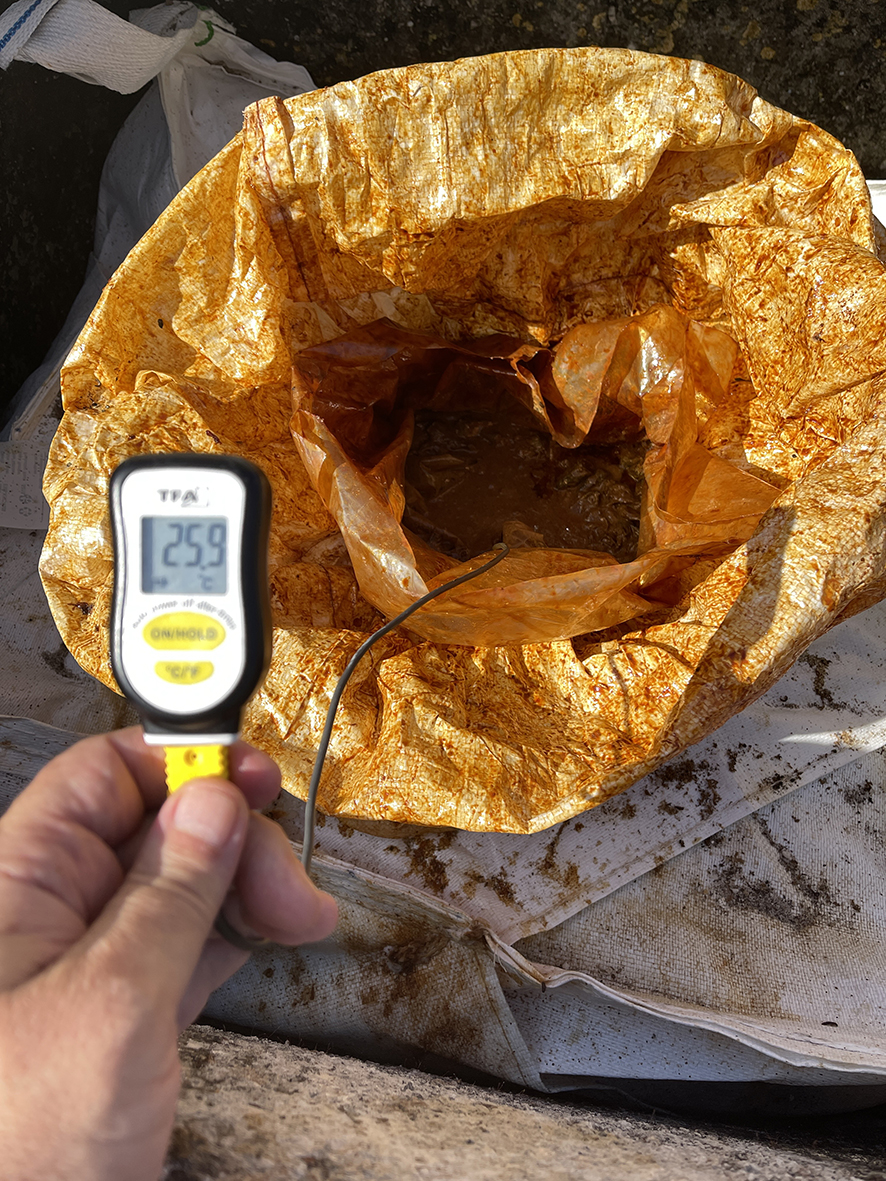
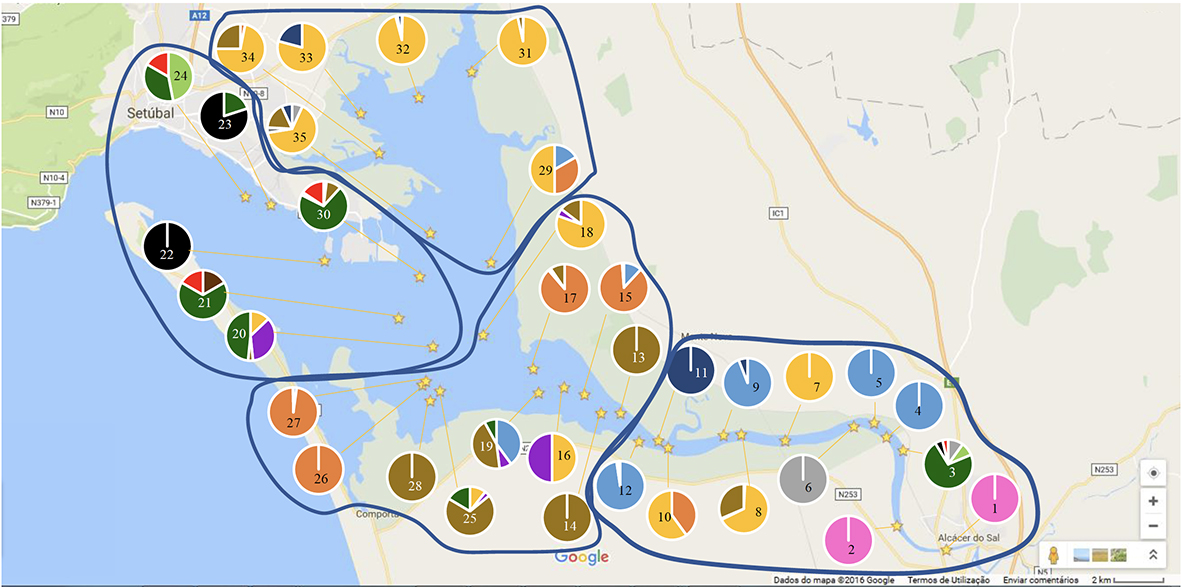
UNIVERSIDADE DE LISBOA- FACULDADE DE CIÊNCIAS- DEPARTAMENTO DE BIOLOGIA ANIMAL
The Portuguese oyster, Crassostrea angulata (Lamarck, 1819), has a very high gastronomic, economic and ecological importance worldwide. In the Sado estuary it was particularly relevant in aquaculture production until the 1970s, when mass mortalities almost led to its extinction on this spot. Nowadays, such situation seems to have changed, but it is necessary to develop more scientific works that demonstrate it.
The aim of this study was to obtain updated mapping of the species in this backish system and to study its abundance, larval recruitment and settlement.
Spatial distribution surveying was analyzed in subtidal and intertidal regions throghout the estuary. In the subtidal zone several species of bivalves were observed and the community was significantly different depending on the area of the estuary. C. angulata was more abundant in the Canal de Alcácer area, both in the subtidal zone and in the intertidal zone, and the organic matter contents and the average grain size of the sediment were the environmental variables that best explained the distribution of C. angulata in the subtidal region. In addiction, the Portuguese oyster natural beds of the Canal de Alcácer, wich have resisted the decline of the species in de Sado estuary, are the ones that are in better condition. New oyster beds were also identified more upstream than was known.
The highest abundances of C. angulata larvae were present in the plankton in spring when the water temperature reached 18 - 20 ºC and the phytoplankton spring production was underway. Settlement was observed after that, from late may to late october. Although, it was not regular over the study period, nor uniform at the tested sites, clearly relevant was the sucessful settlement in areas where no fixation substrate was naturally available.
The results of this study indicate that it will be possible to help the recovery of the Portuguese oyster population of the Sado estuary by applying some management measures that facilitate the revitalization of natural beds.
.
Figura 2.2. Localização das estações de amostragem subtidais estabelecidas para determinação da distribuição de ostra-portuguesa (Crassostrea angulata) e da comunidade de bivalves no estuário do Sado. O conjunto de estações de amostragem (escolhido aleatoriamente) é representativo da área potencial de distribuição de ostra-portuguesa e das diversas zonas do estuário do Sado.
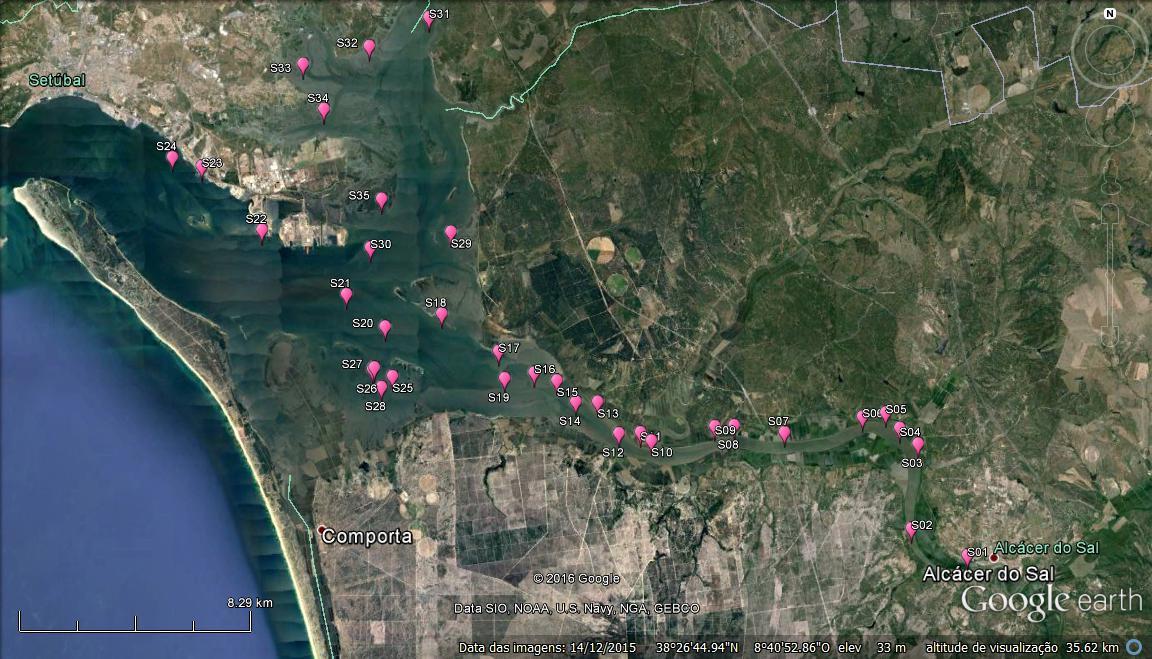
O delineamento experimental permitiu determinar a distribuição de ostra-portuguesa no estuário do Sado e também da restante comunidade de bivalves. Foram contabilizadas 26 espécies de bivalves e um total de 5862 indivíduos deste grupo. As espécies dominantes em termos numéricos foram Ostrea stentina (52 %), Cerastoderma glaucum (13 %), C. angulata (12 %) e Scrobicularia plana (11 %). Situação diferente foi encontrada para os dados da biomassa, que evidenciaram como espécies dominantes C. angulata (70 %) e O. stentina (12 %).
ESPÉCIES MAIS ABUNDANTES:
Crassostrea angulata
Ostrea stentina
Abra alba
Cerastoderma glaucum
Corbicula fluminea
Ensis ensis
Macoma cumana
Mytilus edulis
Ruditapes decussatus
Ruditapes philippinarum
Scrobicularia plana
Solen marginatus
Spisula subtruncata
Venus verrucosa
OUTRAS ESPÉCIES
Abra nitida
Arcopagia crassa
Chamelia gallina
Gari fervensis
Gibbomodiola adriática
Modiolus modiolus
Musculus discors
Parvicardium pinnulatum
Polititapes rhomboides
Ruditapes sp.
Spisula solidaSpisula solida
Venerupis senegalensis
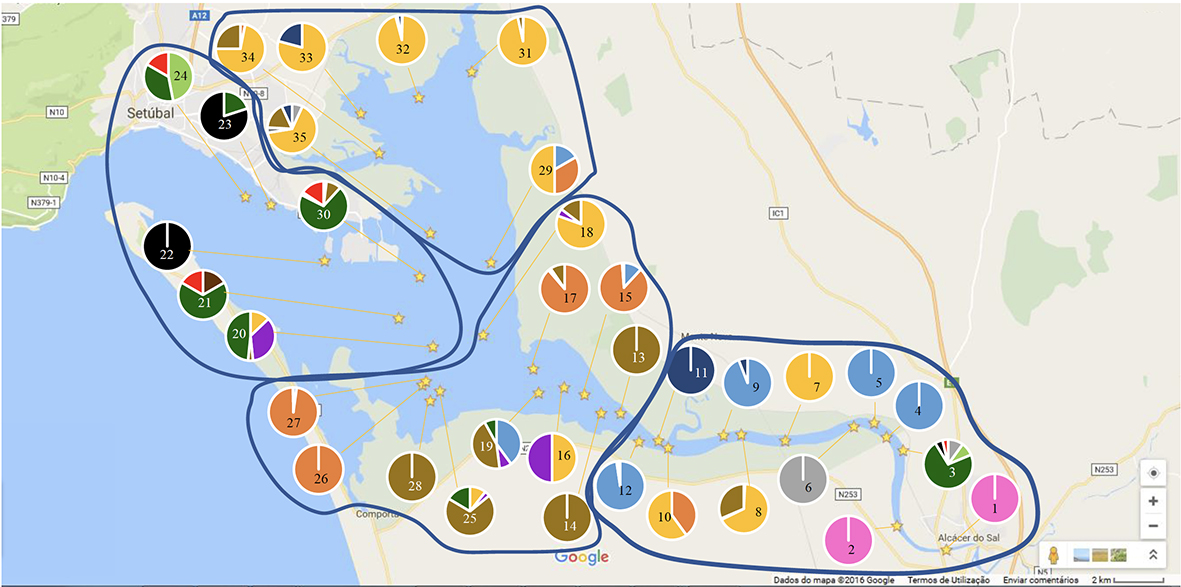
Figura 2.4. Mapa do estuário do Sado com a posição (estrelas) das estações de amostragem estudadas de 2 a 4 de julho de 2015. Cada estação de amostragem tem a si associado um gráfico circular onde se podem observar as espécies mais abundantes. As espécies representadas acima são: Crassostrea angulata (azul claro), Ostrea stentina (laranja), Abra alba (cinzento), Cerastoderma glaucum (amarelo), Corbicula fluminea (rosa), Ensis ensis (verde claro), Macoma cumana (roxo), Mytilus edulis (castanho escuro), Ruditapes decussatus (cinzento escuro), Ruditapes philippinarum (castanho claro), Scrobicularia plana (azul escuro), Solen marginatus (verde esuro), Spisula subtruncata (preto) e Venus verrucosa (vermelho). A zona do Esteiro da Marateca engloba os seguintes pontos de amostragem: 29, 31, 32, 33, 34 e 35. A zona da Baía Central está representada pelos pontos: 20, 21, 22, 23, 24 e 30. A zona do Canal Inferior inclui os seguintes pontos amostrais: 13, 14, 15, 16, 17, 18, 19, 25, 26, 27 e 28. A zona do Canal Superior engloba os seguintes pontos de amostrgem: 1, 2, 3, 4, 5, 6, 7, 8, 9, 10, 11 e 12.
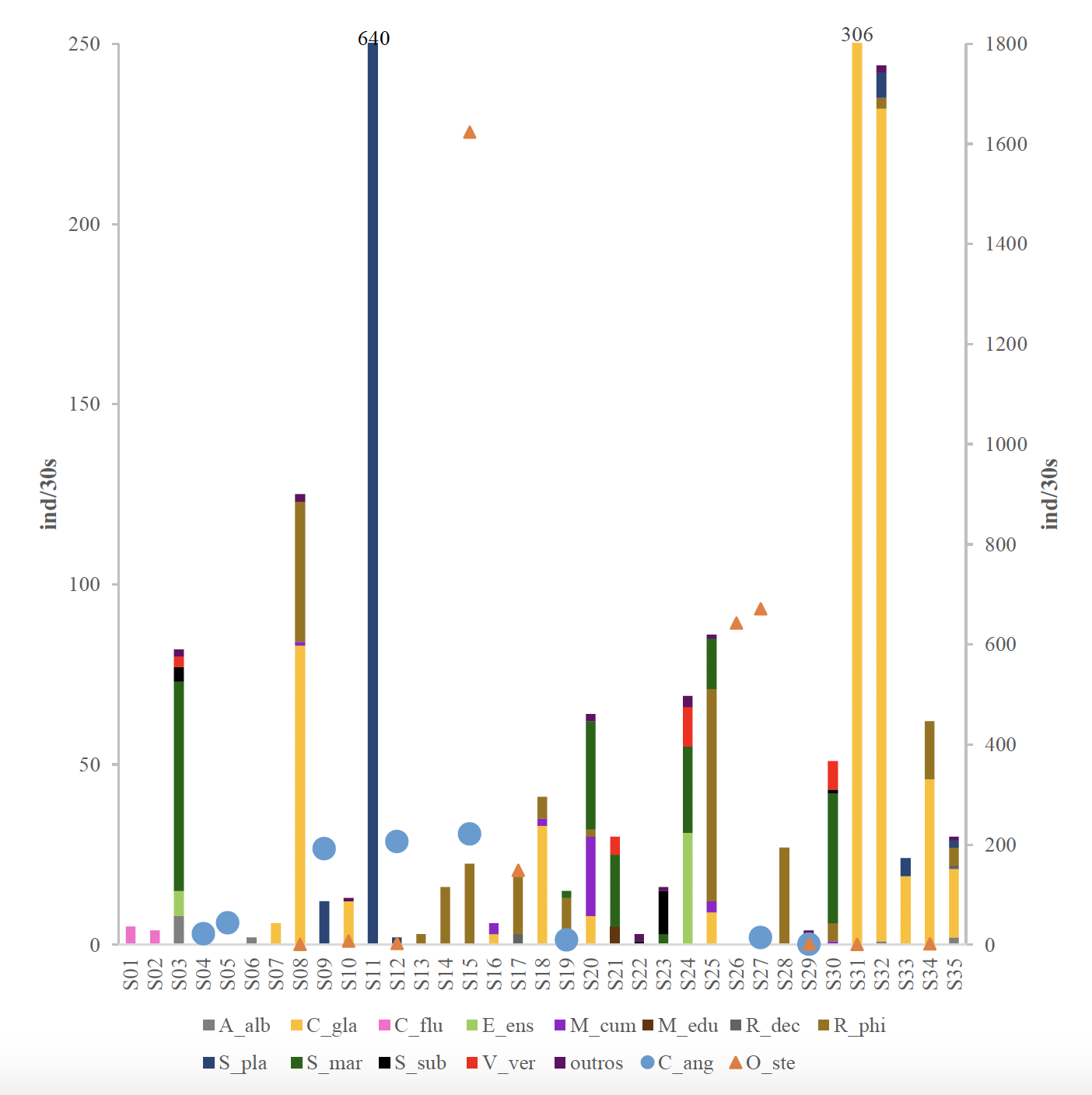
Figura 2.5. Composição específica de bivalves, por estação de amostragem (arrasto), no estuário do Sado. As espécies representadas acima são: Crassostrea angulata (C_ang: circulo azul claro), Ostrea stentina (O_ste: triângulo laranja), Abra alba (A_alb: cinzento), Cerastoderma glaucum (C_gla: amarelo), Corbicula fluminea (C_flu: rosa), Ensis ensis (E_ens: verde claro), Macoma cumana (M_cum: roxo), Mytilus edulis (M_edu: castanho escuro), Ruditapes decussatus (R_dec: cinzento escuro), Ruditapes philippinarum (R_phi: castanho claro), Scrobicularia plana (S_pla: azul escuro), Solen marginatus (S_mar: verde esuro), Spisula subtruncata (S_sub: preto) e Venus verrucosa (V_ver: vermelho). Na categoria «outros» (violeta) estão as espécies de bivalves com menos que 4 individuos. (correspondiam a menos de 0,07 % da amostra total) – as espécies são: Abra nitida (0,034 %), Arcopagia crassa (0,017 %), Chamelia gallina (0,017 %), Gari fervensis (0,017 %), Gibbomodiola adriática (0,068 %), Modiolus modiolus (0,017 %), Musculus discors (0,017 %), Parvicardium pinnulatum (0,034 %), Polititapes rhomboides (0,017 %), Ruditapes sp. (0,017 %), Spisula solida (0,034 %), Venerupis senegalensis (0,051 %). O número de indivíduos das espécies de ostra (Crassostrea angulata, C_ang (círculo azul) e Ostrea stentina, O_ste (triângulo laranja)) referem-se ao eixo do lado direito do gráfico. As barras das estações 11 e 31 foram interrompidas para que fosse possível visualizar as restantes, o valor da contagem da espécie que foi interrompida está na extremidade superior da barra.
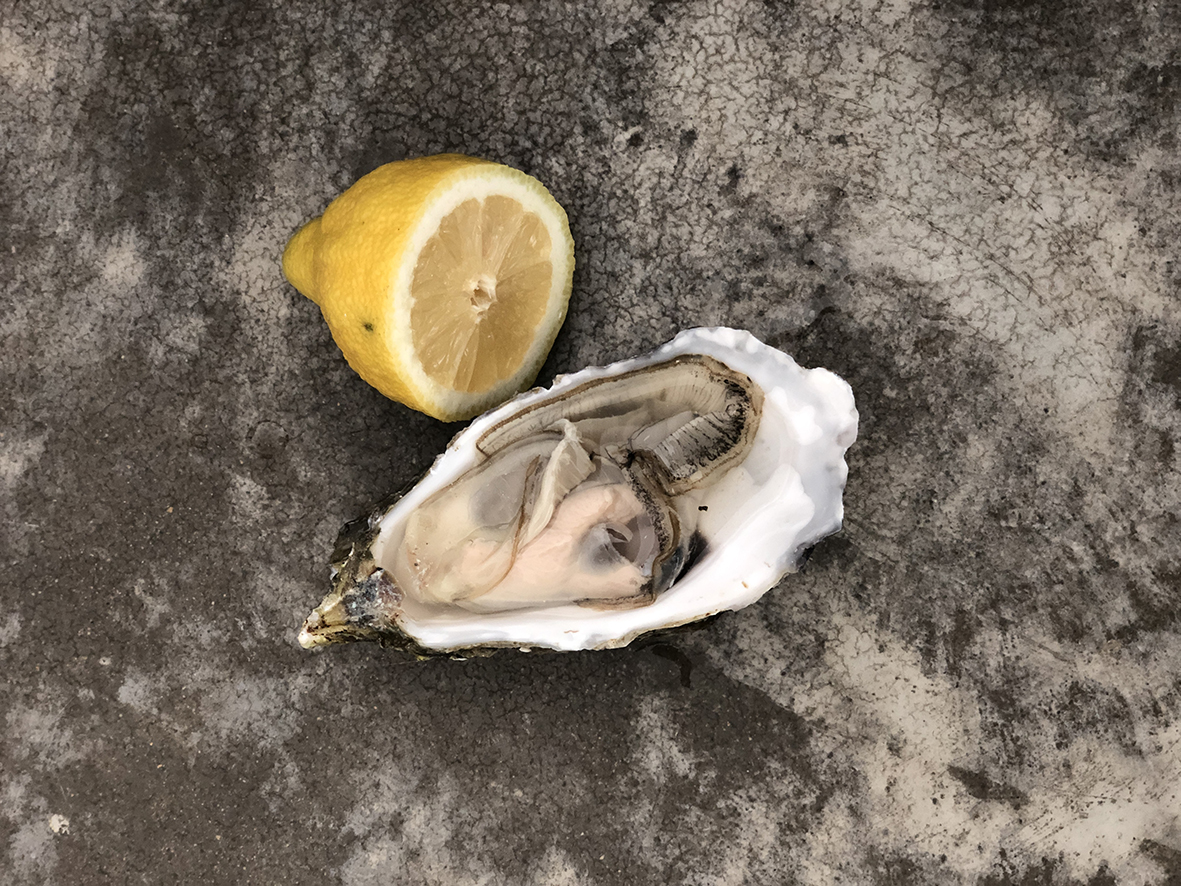

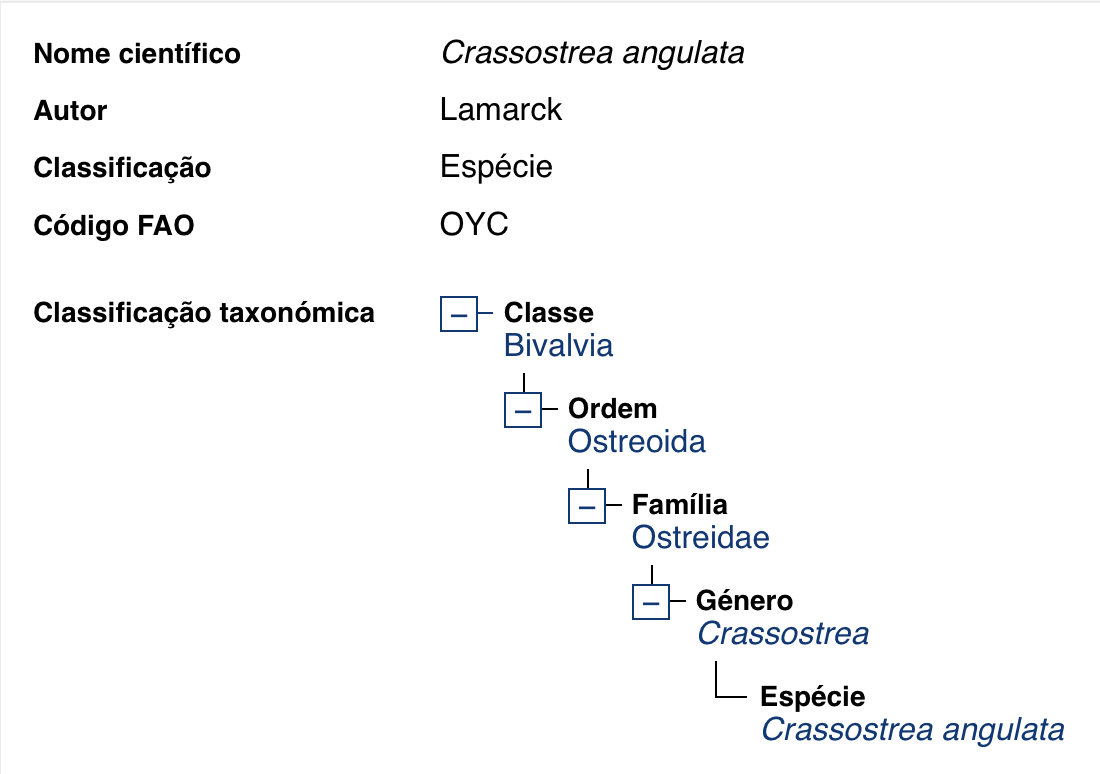
In Portugal, there are four species of oysters, Crassostrea angulata (Portuguese oyster), Ostrea edulis (flat oyster), Ostrea stentina (dwarf oyster) and Ostrea cochlear. However, due to their characteristics, only Ostrea edulis and Crassostrea angulata are commercially exploited.
The Portuguese oyster (Crassostrea angulata) is a bivalve mollusc popularly known as “carcanhola”, very similar to the Pacific oyster.
The geographic distribution of Portuguese oysters is centered on estuaries and rias from the central area of mainland Portugal to the coast of Morocco, with a large incidence in the Sado estuary.
“The shell is mainly made up of calcium carbonate, which is taken directly from seawater with the help of specialized cells located in the mantle. They are soft-bodied animals, laterally compressed and composed of two articulated valves and a powerful adductor muscle. The shape and color of the shell of the Portuguese oyster can be somewhat variable, due to the type of substrate in which it is inserted. Oysters that grow on soft substrates generally have fewer blades than those that grow on hard substrates. Its interior is white, with a dark spot near the attachment of the adductor muscle. The body is covered by an integument called the “mantle”, which is also involved in the calcification process of the shell. Between its two sides is the pallial cavity, a free space divided by the gills, where there is water circulation through an inhaling and exhaling process (there is no siphon), from which the breathing and feeding process is obtained. ”*
Genetic studies show that the Portuguese oyster originates from Asia and was introduced to Europe through ship exchanges in the 16th century. It is also said that the oysters, now called Portuguese, were introduced into Europe by Portuguese caravels returning from the East.
According to some historians, the oysters, known as "Les Portugaises", originate from India or Japan, having traveled to Portugal on the keels of ships and as a protein-rich food for crews, in the late 16th century. Arriving at the Tagus and Sado estuaries, there they developed extraordinarily due to the good natural conditions of those who would come to be considered the largest natural oyster banks in Europe.
But oysters, possibly of other species, already existed in Portugal, as evidenced by the Roman presence in the Sado and Lisbon estuary, which left immense traces of oyster consumption, proving this mollusk at least since that time.
In fact, Strabo mentions, in the 1st century BC, recalling one of the moments of the conquest of Lusitania by Décimo Júnio Bruto, at the end of the 2nd century BC, when he finds, next to the Tagus estuary, the ancient settlement of Olisipo, a probable entrepot of the Phoenicians and Greeks:
«On the banks of the river, he fortified Olisipo to have freer navigation and the transport of foodstuffs (…) The river is very rich in fish and abundant in oysters» (Strabo, Book 30, Part I).
It is said that in 1886 a ship loaded with oysters from Setúbal bound for England was forced by a storm to seek refuge in the Gironde estuary, near Pauillac, on the west coast of France. The storm may have been long and the ship's captain, considering that the oysters would no longer be in good condition, decided to throw them into the water. However, not all the oysters were dead and in the phytoplankton-rich waters of Girona spontaneous oyster colonies were born that spread to Brittany.
Tagus oysters were largely exploited by French traders around 1866, who took them to Arcachon.
The Portuguese oyster was initially described by Lamarck as being endemic to the Iberian Peninsula. It was thought to have been introduced in the French region of Arcachon in 1867 as a new species for aquaculture and that, due to its high success, it had spread throughout France and somewhat across Europe.
Only recently have populations of C. angulata been identified in Taiwan, where it is thought to originate. Studies using mitochondrial markers report the presence of “pure” populations of this species in Taiwan. Thus, one can assume an Asian origin, which is probably a case of anthropogenic introduction (premeditated or not) into Europe.
* in Ostras, um fruto de Setúbal. Valorização gastronómica e cultura alimentar do Sado – José Augusto Pinto de Almeida Dissertação
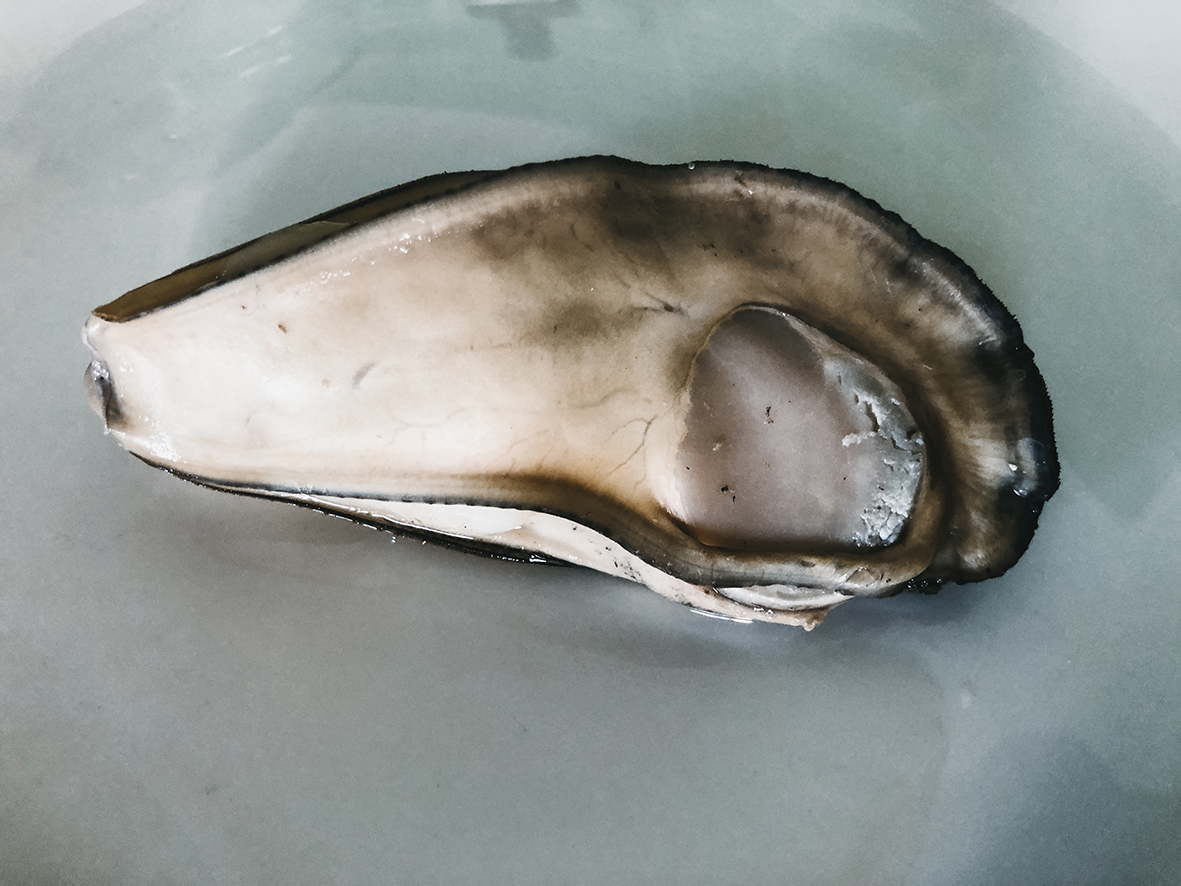
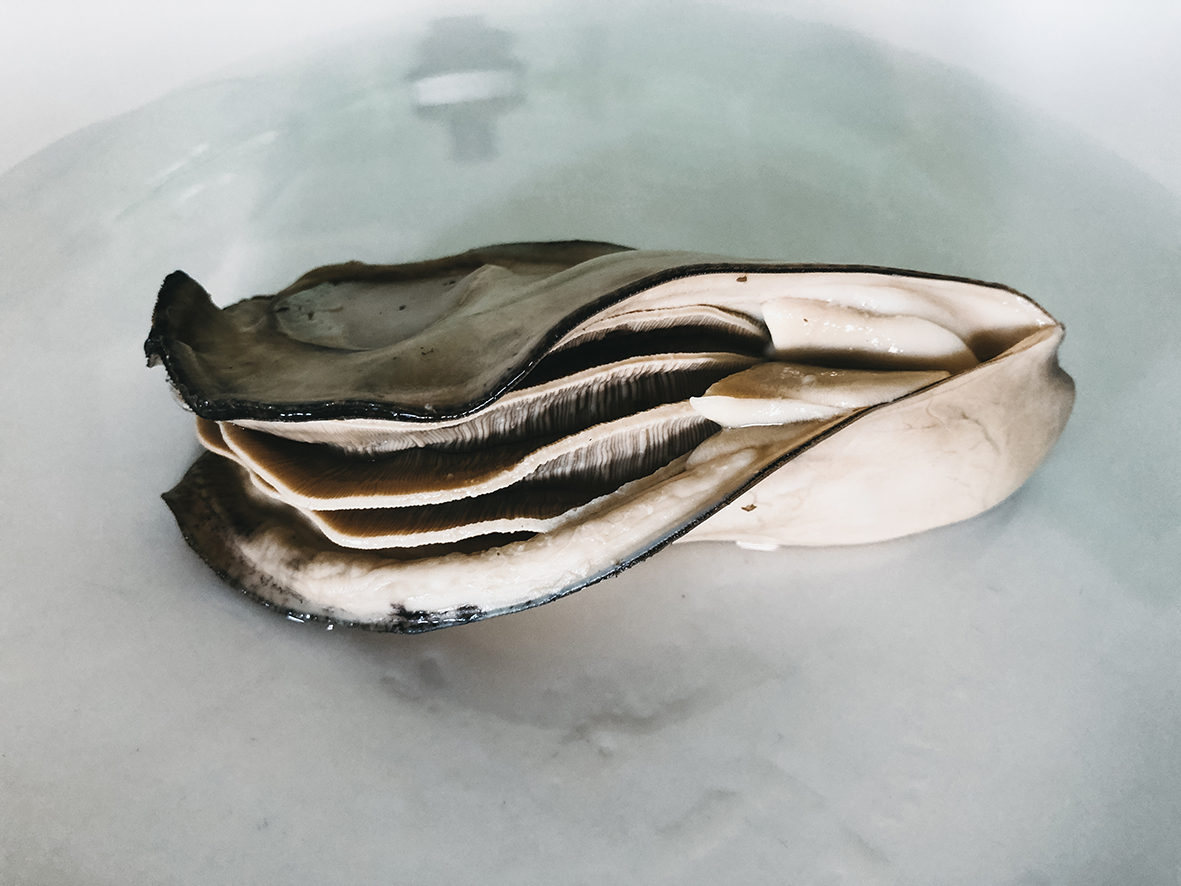
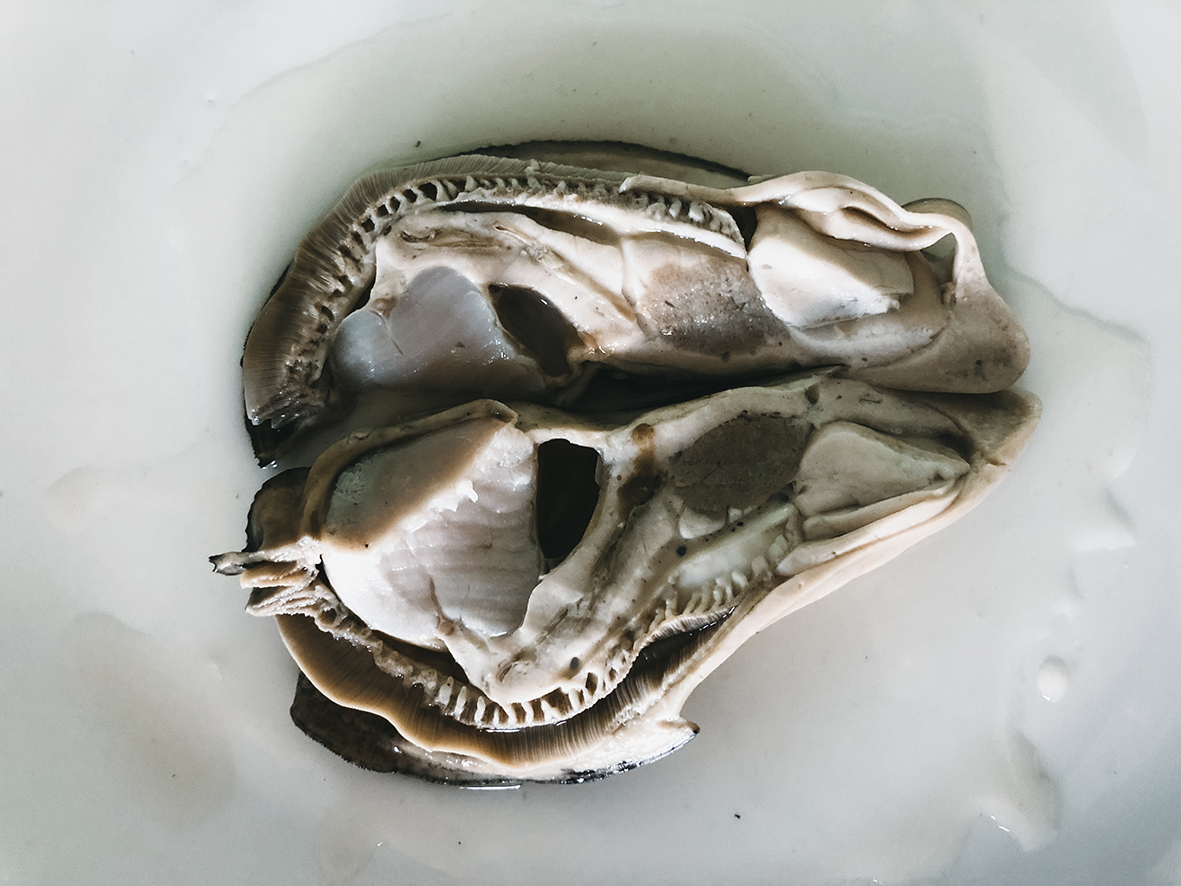
Oyster steamed and cut lengthwise
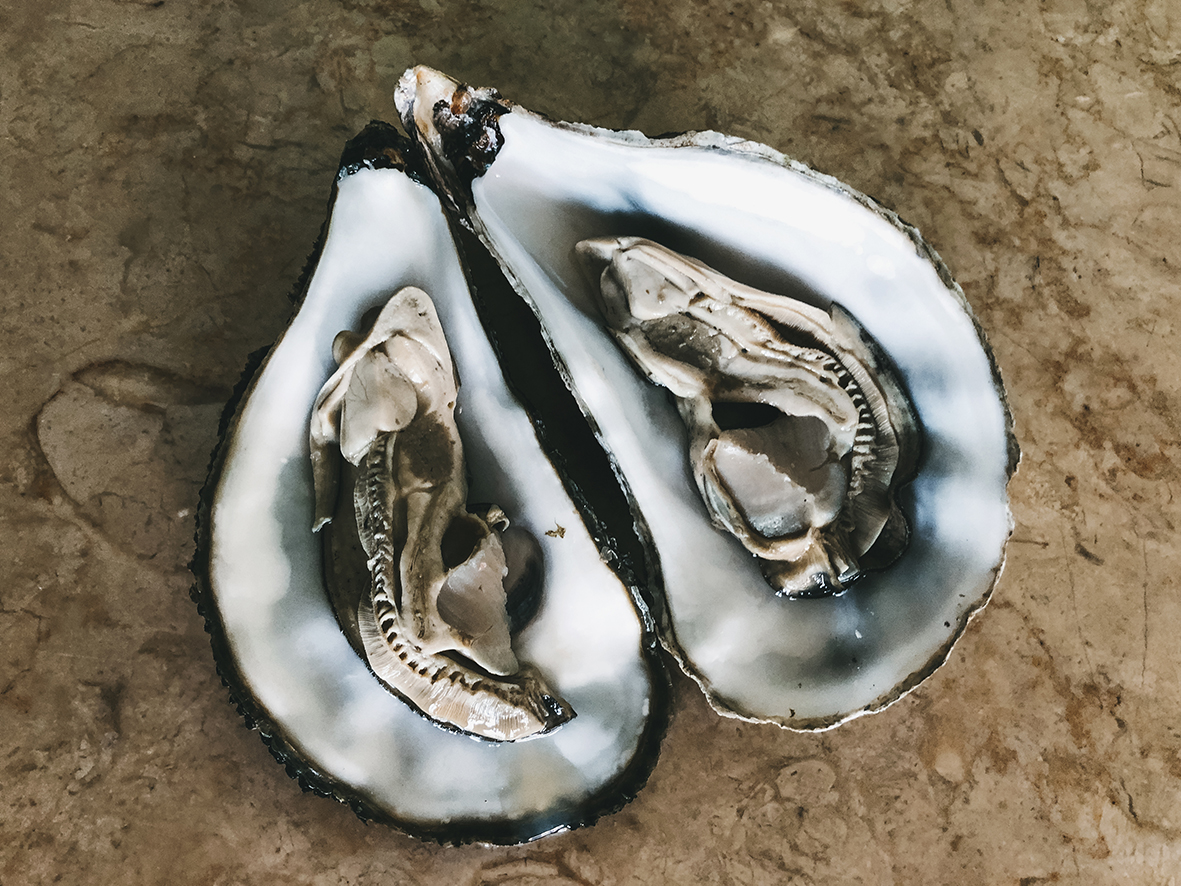
Basic Anatomy of an Oyster
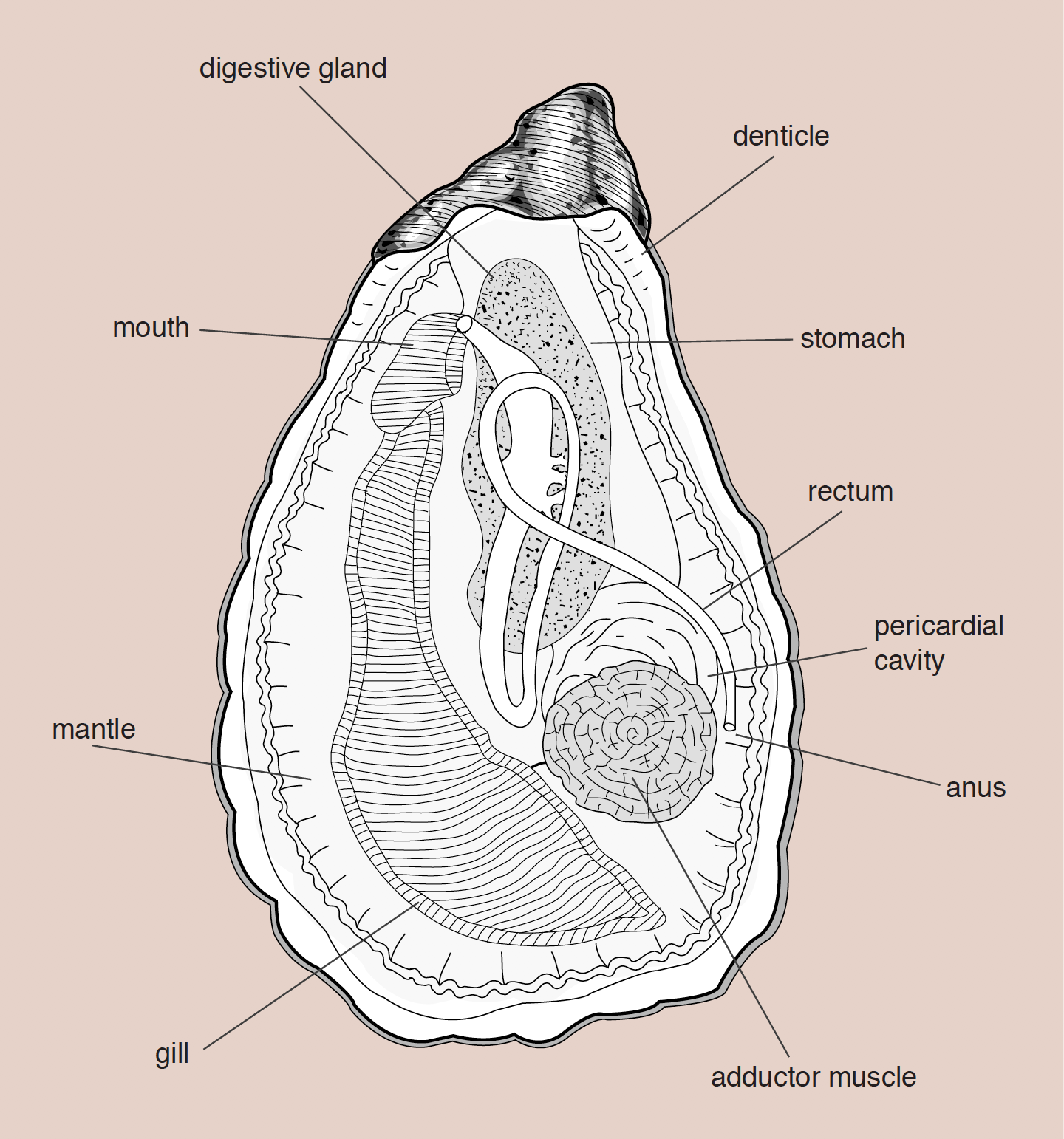
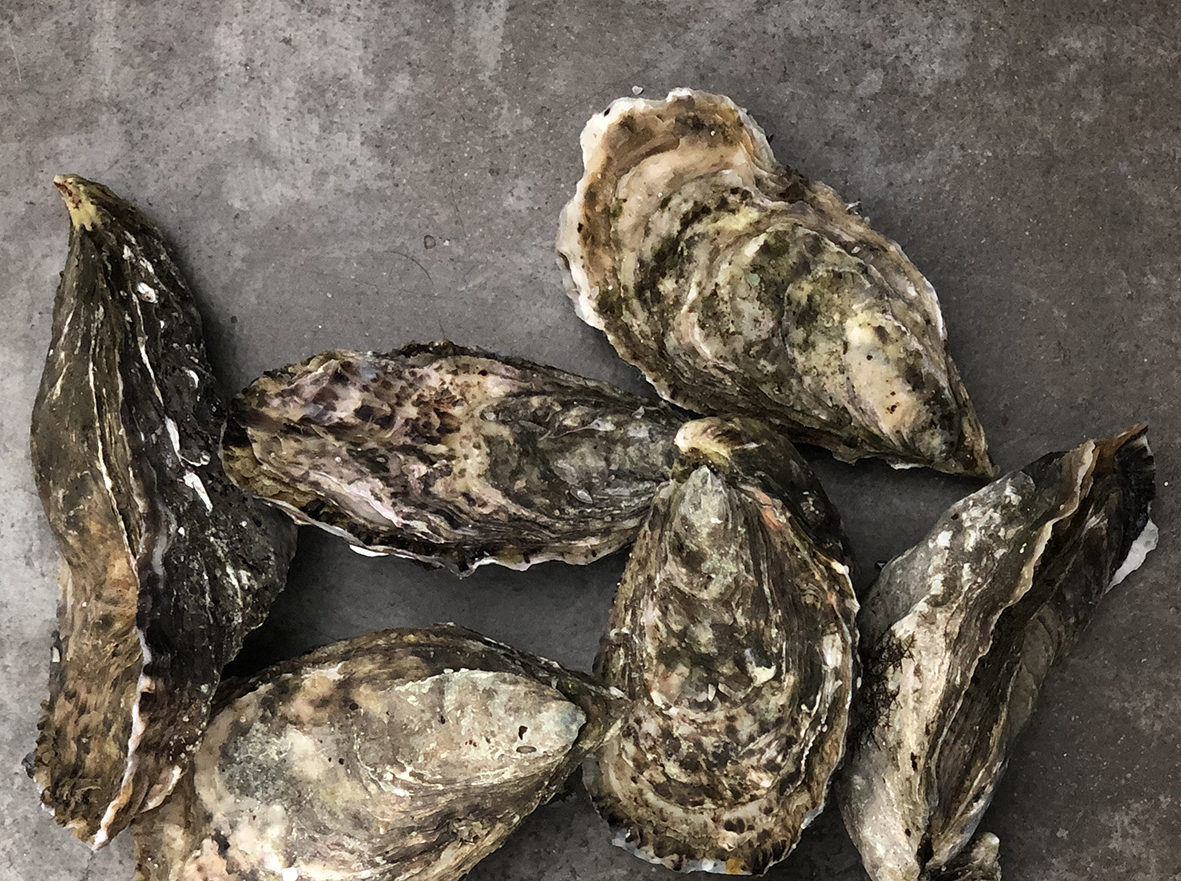

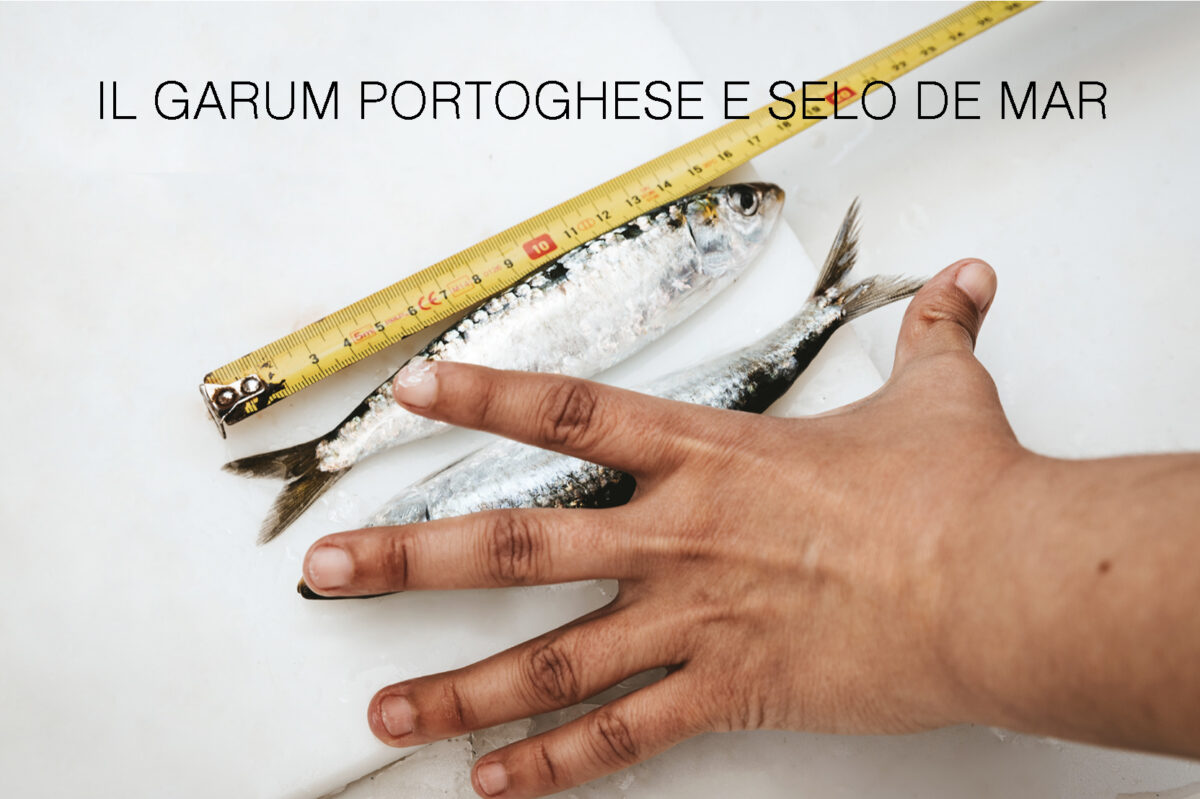
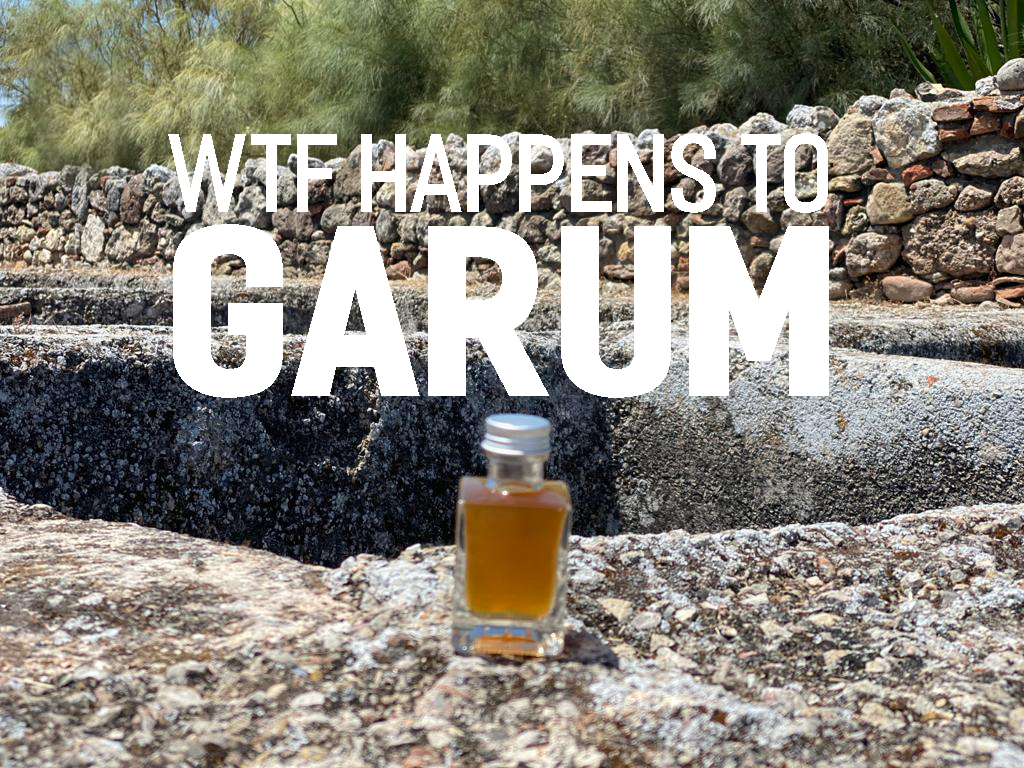
The name Garum is used in a generic way to define fish sauces obtained from fermentation in brine, where microorganisms and enzymes present in the fish.
Garum is often thought of as a sauce produced by putrefying fish, and therefore unacceptable to most modern consumers.
To fully understand the importance and the success of the fish preserves in ancient and modern diets and to dispel biases about their taste we must mention the complex biochemical and enzymatic processes which produce them.
According to Harold McGee, an American author who writes about chemistry and the history of food and culinary science, when we talk about Garum we can classify the process as a "benign decomposition".
What makes Garum delicious is precisely the chemical decomposition process, which develops its full flavor.

The very large molecules, such as proteins, carbohydrates, fats and oils, have no quality that we can register with our chemical senses.
Through taste and smell we can only register the presence of small molecules. It is these small molecules that we can “grab”, sending a message of recognition to our brain.
On the palate, we generally have five senses: salty, sour, sweet, bitter and, recently, umami, which gives us the feeling of tasty, savoury
There are thousands of scents in our natural world that we can pick up and identify, but these molecules need to be small enough to be able to fly and reach our nose.
So the key to making a Garum is to break down the large molecules of the fish, mainly made up of proteins and oil. Proteins consist of large molecules made up of blocks of smaller molecules that are amino acids. Some amino acids are small enough to be detected by sensors in our language. Some are sweet, others are bitter, salty or sour and some give the sensation of taste, or umami, as is the case with glutamic acid whose salts are known as glutamate.
Glutamate is an important neurotransmitter that functions as a flavor enhancer. Glutamate is thought to be involved in cognitive functions in the brain, such as learning and memory.
What is different about umami, when compared to the other flavors, is that while in salty, sour, sweet and bitter, there are a lot of molecules, in umami there are few, but all related to protein metabolism, especially glutamate, that are the most effective.
In the Garum production process, fish proteins are broken down into amino acids, mainly glutamic acid and glutamate, which gives us the umami sensation, so rare in the rest of our flavor captures.
The fact that garum was so popular in ancient times was probably due to the high concentration of monosodium glutamate, the sodium salt of glutamic acid, one of the most abundant non-essential amino acids that occurs in nature, which is found naturally in foods such as tomatoes, mushrooms or parmesan cheese.
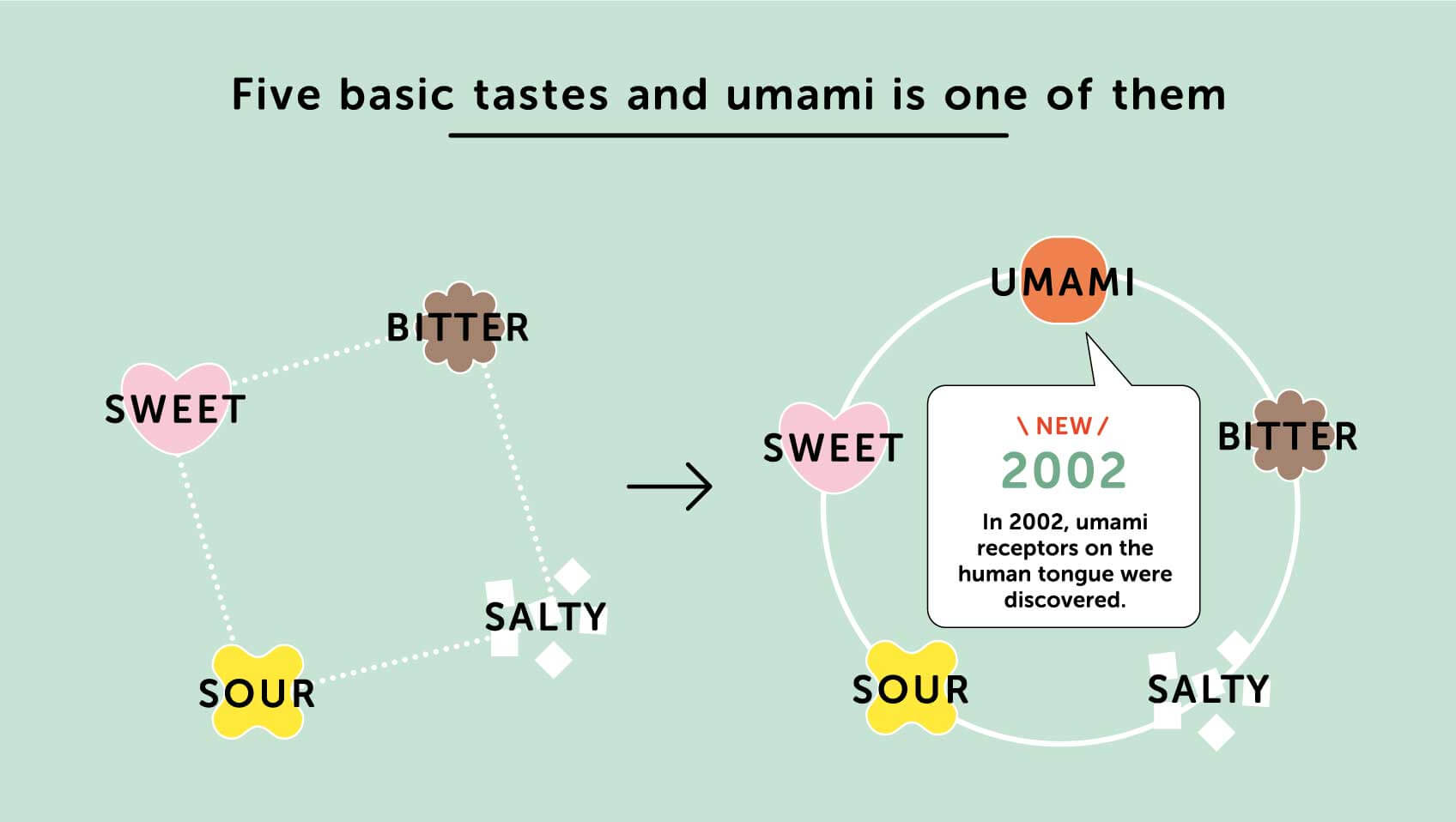
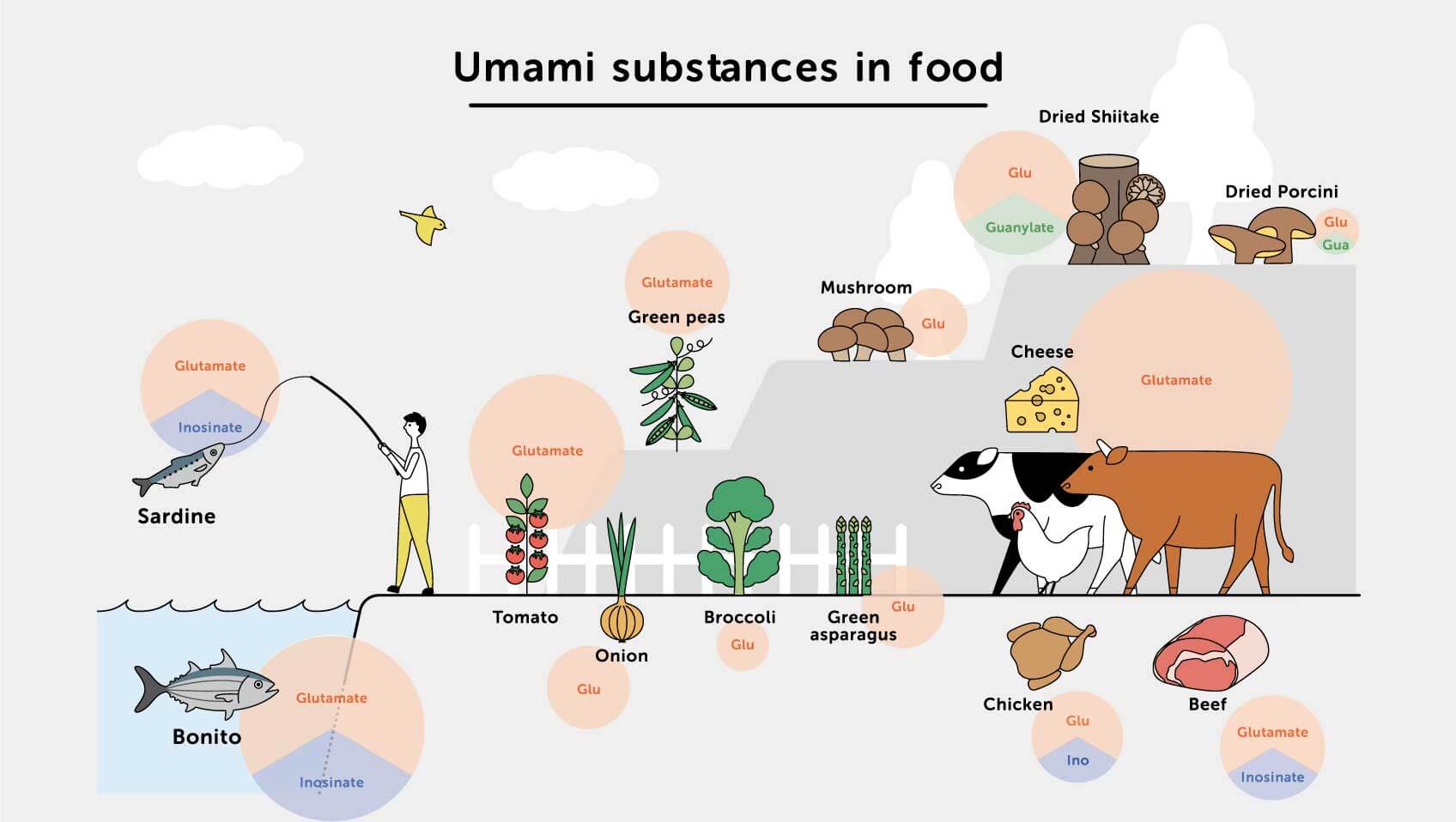
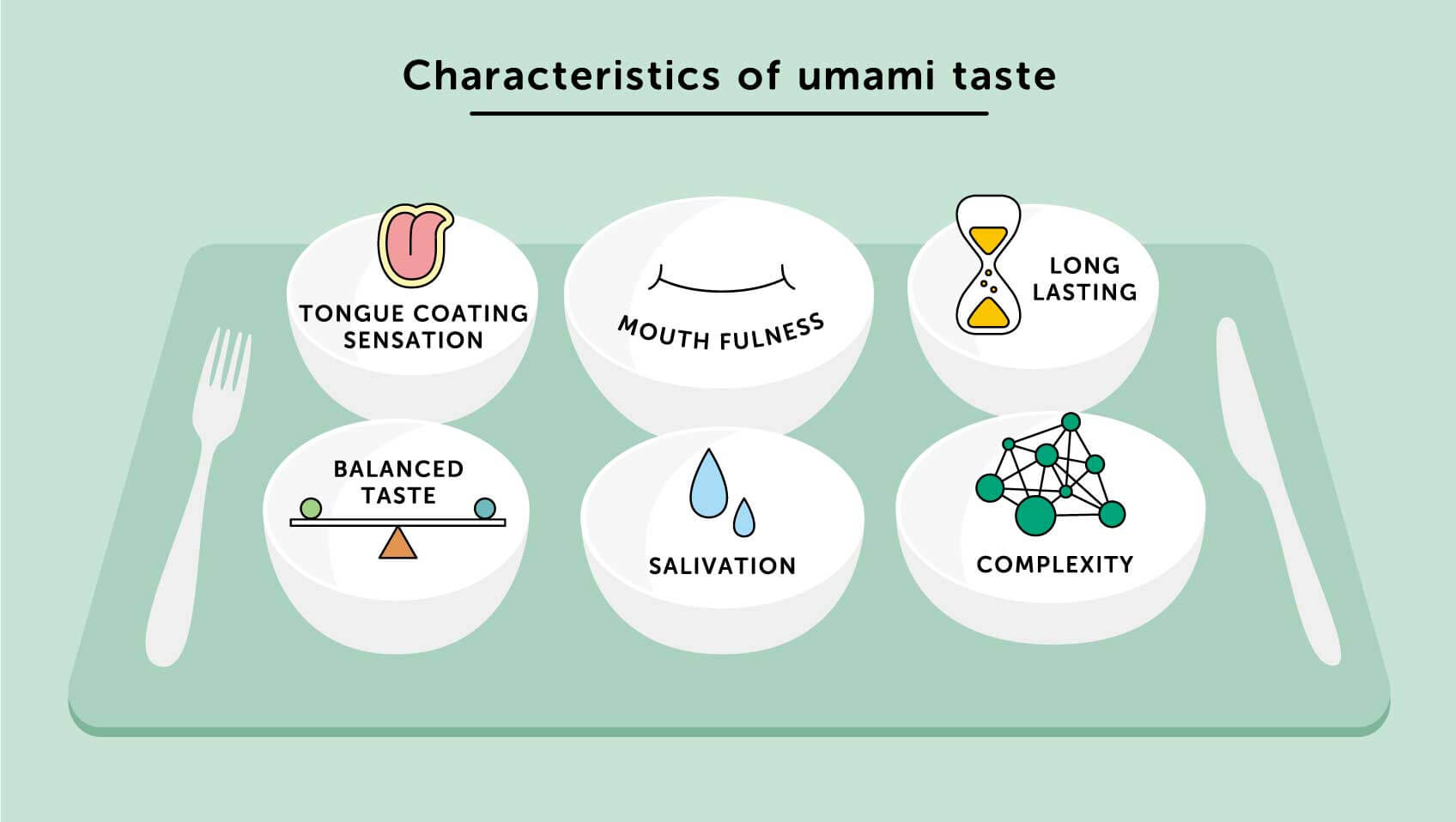
Imagens retiradas de www.ajinomoto.com
The protein breaking process occurs thanks to the action of enzymes. Enzymes are also proteins, but they specialize in breaking down other molecules, including proteins.
When a fish is caught and dies, and its systems stop functioning properly, the action of the enzymes is gradually reversed only for decomposition.
After death, fish, like all other animals, undergoes a series of decay processes whose first step is autolysis : the degeneration of cells and organs through chemical substances, processes triggered by intra enzymes. Intracellular enzymes, which exist within the cells that make up the tissue, slowly break down muscle tissue proteins into amino acids, including glutamate , and this is how the flavor develops.
The speed of the autolytic process increases with increasing ambient temperature, but can be stopped if the textures are quickly frozen or dehydrated.
As a result of the autolytic degeneration of the organs of the gastrointestinal tract, the bacterial flora of the intestinal tract spreads to the rest of the corpse, initiating a process called putrefaction , the second phase of decomposition.
Bacterial activity initially produces gases such as sulfur dioxide, carbon dioxide, ammonia, methane, etc. and continues with the destruction of muscle proteins and the production of toxic amines, such as cadaverine and putrescine.
The real salting, the one used to produce salted fish and meat, produces a dehydration of the tissues that blocks autolysis, but it needs a large amount of sodium chloride (NaCl), a process that we can compare to the production of ham. In this case, it is pork leg meat, which is salted so as not to spoil, that is, not to putrefy, and thus, over the months, enzymes break down muscle proteins.
Even in environments with less salinity, such as brine - although with a high salt content of 10-20% NaCl - the progress of autolytic processes is not prevented, but it is enough to prevent the beginning of putrefaction by stopping the development of dangerous microorganisms to health.
After some time, the result of the decomposition in brine leads to the formation of a perfectly edible liquid, often amber in color, salty and full of proteins, iodine and fluorine, histidine and vitamins A and D (lat. Garum, liquamen). You also get a very salty pasty substance (lat. Allec) with excellent nutritional value.
The other invisible part of the Garum process is the contribution of microbes, bacteria in particular. The human microbiome is the sum of all microorganisms that reside in human tissues and fluids and in each anatomical site, our mouth, skin, digestive system, has its specific microbiome.
Os peixes têm também milhões de bactérias principalmente nas vísceras, muito mais do que os humanos na pele, porque a sua superfície é húmida. Existem assim milhões de enzimas por grama de peixe, especialmente no sistema digestivo e portanto muitas coisas vivas no tecido dos peixes mortos, enzimas que quebram proteínas e gorduras, para obter energia, alimentarem-se e reproduzirem-se.
No processo desse metabolismo, os micróbios geram os seus próprios conjuntos característicos de moléculas voláteis que são determinantes para o aroma do Garum. As enzimas dos músculos e as enzimas das vísceras – se o sistema digestivo for incluído na preparação do Garum – contribuem muito para a sua qualidade e sabor. São pois os micróbios que geram grande parte do aroma.
Pelo facto de os micróbios estarem envolvidos neste processo, é crucial que na produção sejam seguidos certos cuidados por forma a evitar a presença de micróbios patogênicos e que podem provocar doenças, como o botulismo. O botulismo pode resultar do crescimento de bactérias do género Clostridium, sendo controlado pelo uso do sal, pois estes micróbios não suportam altos níveis de salinidade.
Garum production is a very complex system, so different types of fish sauces, made with different processes, different types of fish, different forms of production, can result in very different flavors.
The species of fish used. In this production of Garum in Tróia the use of sardines was chosen. In Tróia, mainly traces of sardines were found, which is why this species was chosen for this production, in addition to the symbolism it represents for Portugal.
Water where fish come from: water is home to fish bacteria. The sardine used was fished by the fishing fleet of the members of the fishing cooperative Sesibal, fished from the waters of Setúbal and Sesimbra.
The parts of the fish we use : if we use guts and blood, we are using digestive enzymes, which are more active than those in muscle. If we use blood and liver, we’re adding a lot of iron. Iron is a catalyst for chemical reactions that develops flavors faster and more intensely.
Salt also influences Garum: less salt is used in the Mediterranean than in Asian fish sauces. We used salt from the last active producer in Vale do Sado, Carlos Bicha Lda, from Alcácer do Sal.
Temperature of fermentation will determine which microbes are able to survive at these high levels of salt and how quickly they are able to work. When we put a Garum preparation in a tank, it will make it receive the warmth of the stone walls, which heat during the day and emanate heat at night.
The way the fermentation is processed, if stopped or agitated, if hermetic, exposed to air, exposed or not to sunlight, if it is rectified to water or if ingredients such as roasted grains, wine are added, koji, a world of many different possibilities. Our fermentation is stirred weekly and no ingredients are added except koji.
Fermentation period. In the present case we calculate that the fermentation until the completion of Garum will not be less than three or four months, and may take longer.
Aging time , which can be several months, will give these small molecules developed during fermentation a chance to react with each other and generate all sorts of new things.
Technical supervision of the text: researchers in the food field Marisa Santos, Catarina Prista and Anabela Raymundo from the Center for Research in Agronomy, Food, Environment and Landscape of the Instituto Superior de Agronomia

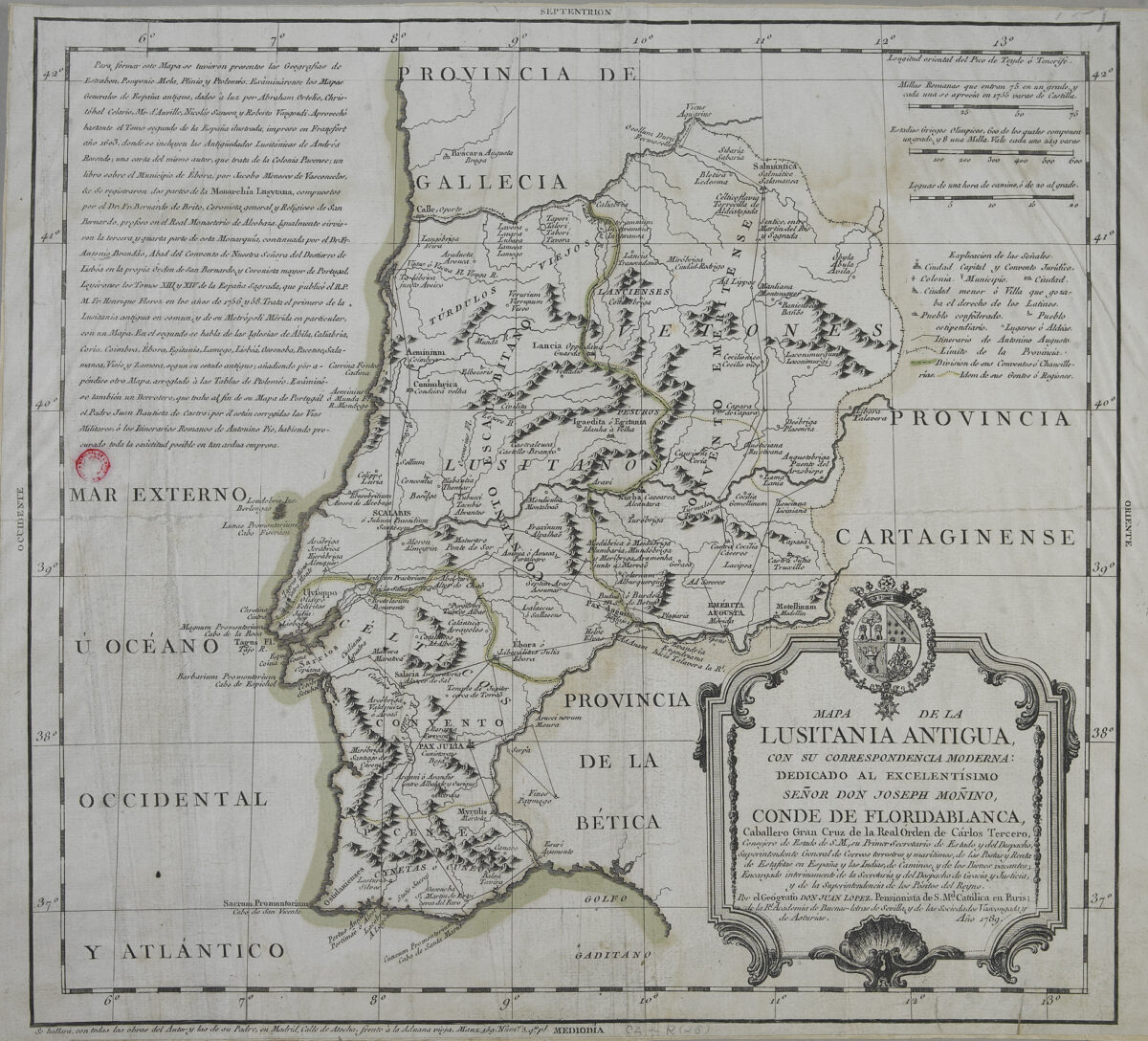
In Lusitânia, there is solid evidence of production of Garum and parsley since the second quarter of the first century CE in the Tagus and Sado estuaries.
The archaeological site of Tróia, located between the estuary of the Sado River and the Atlantic Ocean, produced garum on a large scale, considering its numerous fish salting tanks, which often reveal a layer of fish remains at the bottom, demonstrating the importance of sardines.
The Roman Tróia would be the island of Ácala referred to by the Roman writer Rufus Festus Avienus, who lived in the 4th century, in his book Ora Maritima, an attribution widely accepted by researchers, although it is difficult to prove that the Troia peninsula was originally an island or a line of Islands.
Image: Biblioteca Nacional de Portugal
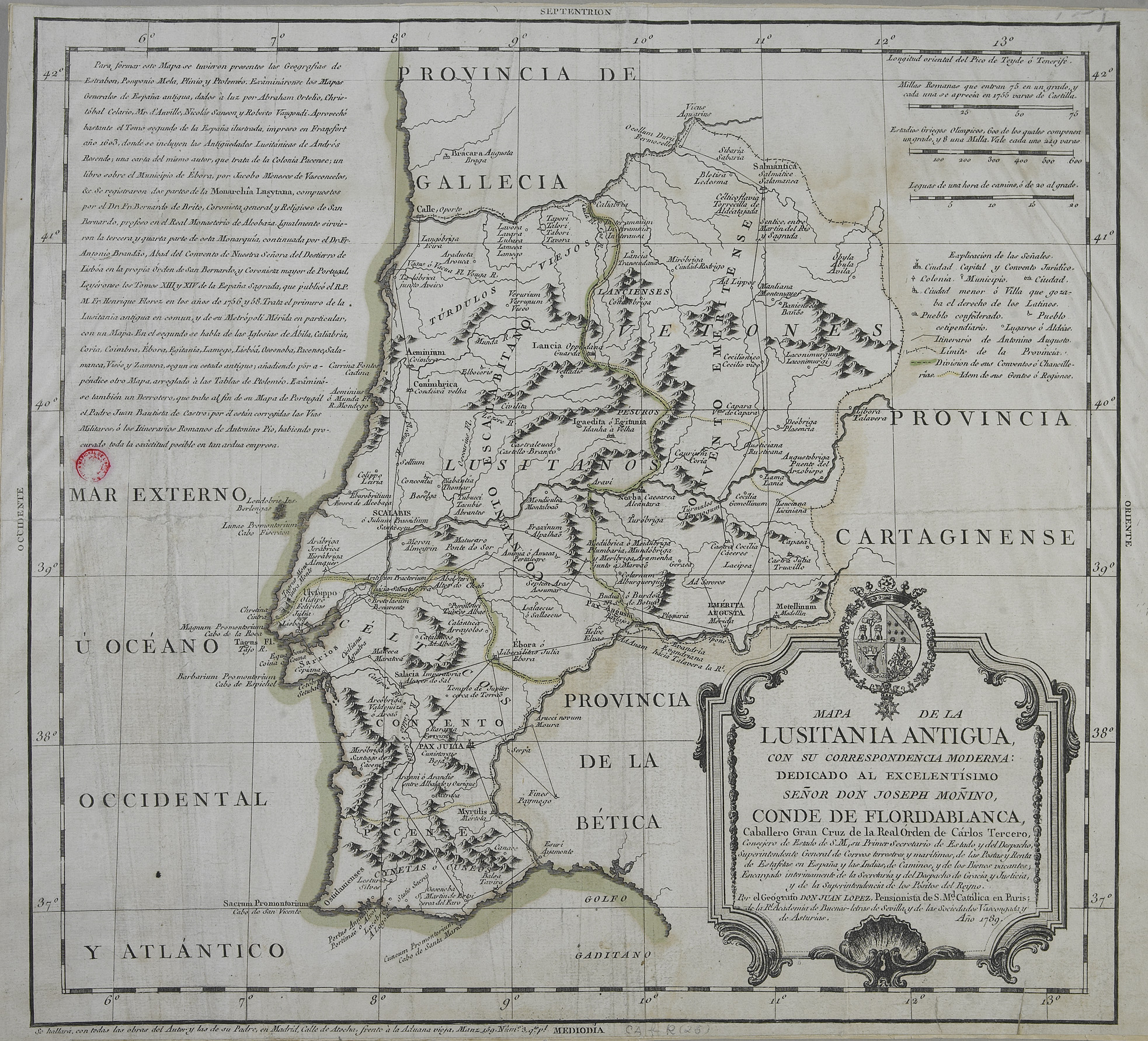
Archaeological evidence shows that it was an important urban-industrial cluster that produced fish sauce and salted fish from the second quarter of the first century AD to the second quarter of the fifth century, with an interruption only at the end of the second century - beginning of the third, with causes still unknown.
Its production capacity, which results from its 29 salting workshops identified, with almost 200 tanks, many of them very large, with a capacity of 30,000 or 35,000 liters, makes Troia the largest fish salting center in the Roman Empire currently known.
In the 1st and 2nd centuries, it would have a minimum production capacity of 1,429m3, and an estimated total capacity of not less than 3,200m3, taking into account the workshops with only a small part uncovered and others that have already lost part of their tanks due to marine erosion.
Tróia benefited greatly from the abundance of fish and salt that the Sado estuary and the surrounding sea offered, but also from the economic dynamism of the Roman Empire, especially after the peace conquered by Augustus. It has certainly become an important economic engine in the region, requiring tons of fish and salt to fill its tanks and thousands of amphoras for finished products and export them.
A second phase took place between the 3rd and 4th centuries CE, and some signs of the socio-economic changes that took place in the 3rd century are visible. The large salted fish workshops were divided into smaller productions, with a notable change in the production of amphoras, with the appearance of new models.
The third period is between the 4th and 5th century CE, and there are traces of continued occupation until the 6th or 7th centuries. However, the so-called “barbaric invasions” of the 5th century CE, the interruption of trade routes and the consequent decline in trade establish the collapse of Portuguese production.
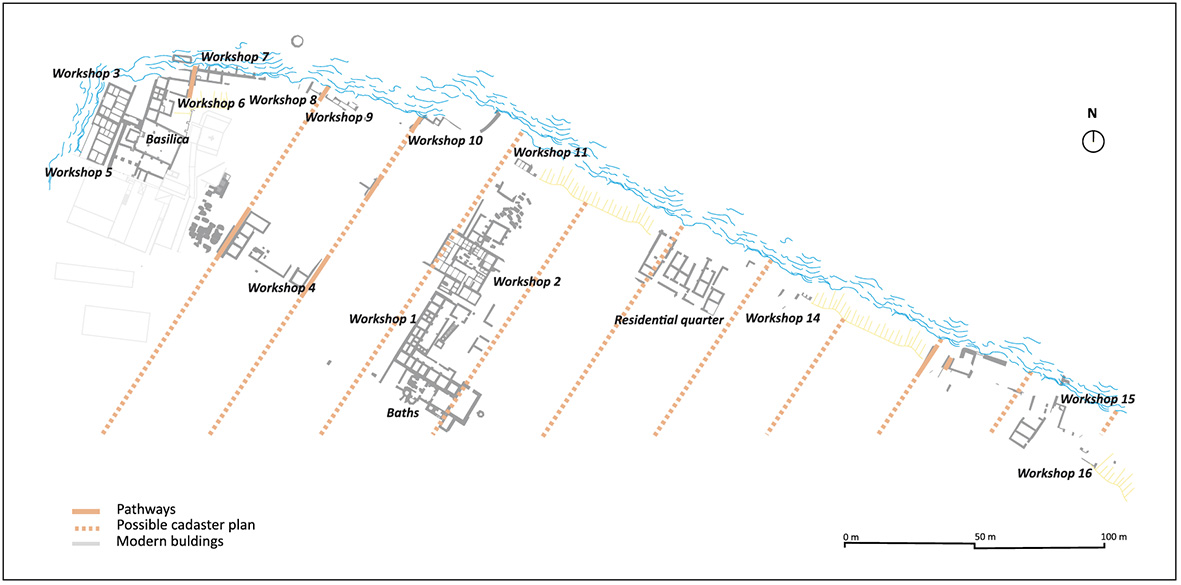
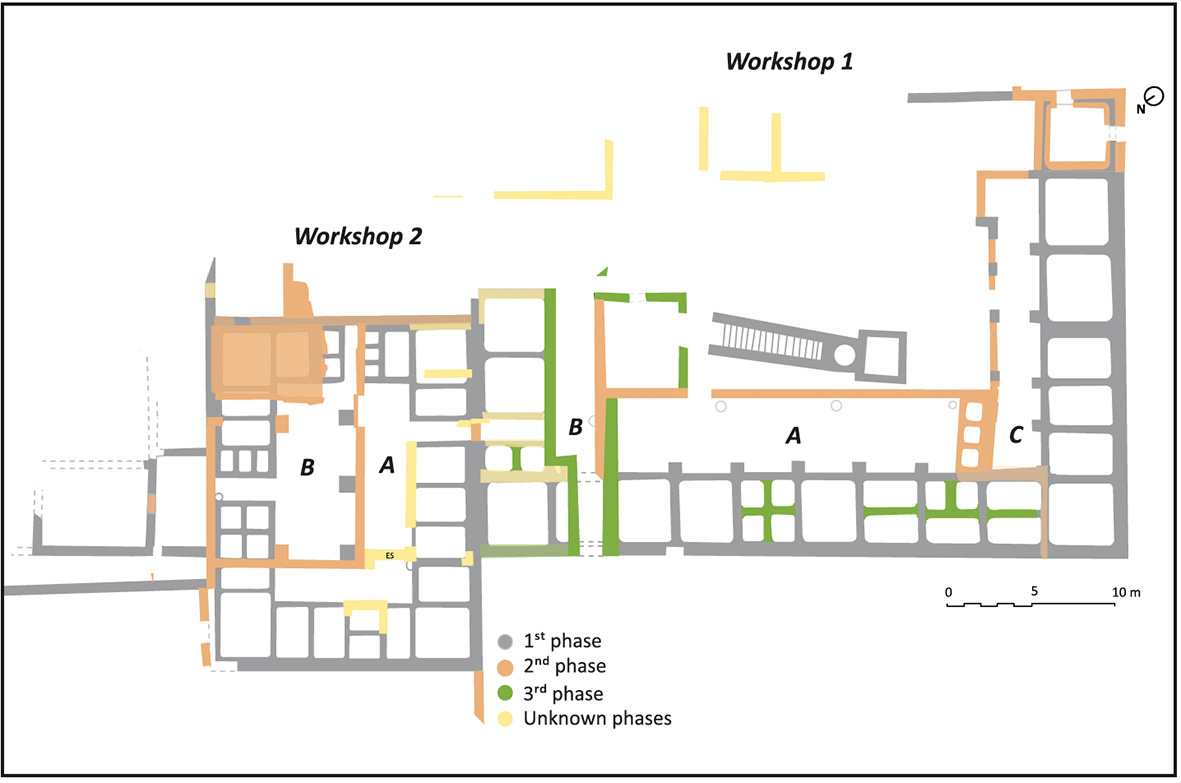
Images: An overview of the fish-salting production centre at Tróia (Portugal) Inês Vaz Pinto, Ana Patrícia Magalhães, Patrícia Brum
The garum produced in Tróia was made mainly with sardines, in open tanks, with exposure to air, although protected from direct sunlight by roofers.
The ancient authors differentiated salty fish sauces (liquids) from salted fish, with different preparations (tarichos in Greek and salsamenta in Latin) based on fish.
In general, the Romans placed fish in tanks, especially anchovy, sardines and mackerels, adding salt in prescribed proportions and, sometimes, various aromatic herbs, spices or wine. They used weights to press the mixture, covered it and allowed it to remain in the sun for several months. At the end of that time, they removed the liquid Garum using a basket, proceeding to filtering and carrying out the transport in amphorae.
There are many of the problems that we face to understand how these sauces were made in antiquity due to the huge lack of consensus on the way they were produced and above all because they were made over several centuries, which presupposes many changes.
t is possible to use experimental archeology, analyze the nature of fish sauce residues and observe their formation trying to reproduce the same conditions and recipes used in antiquity. Experimental archeology is supposed to replicate the past and seeks to reproduce the conditions under which the historical activity we studied could have happened.
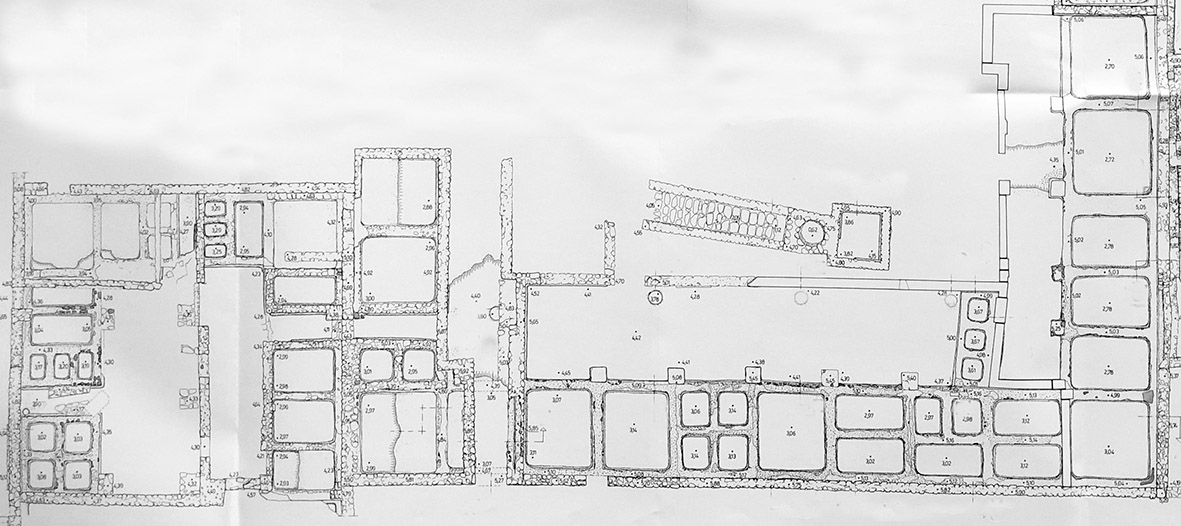
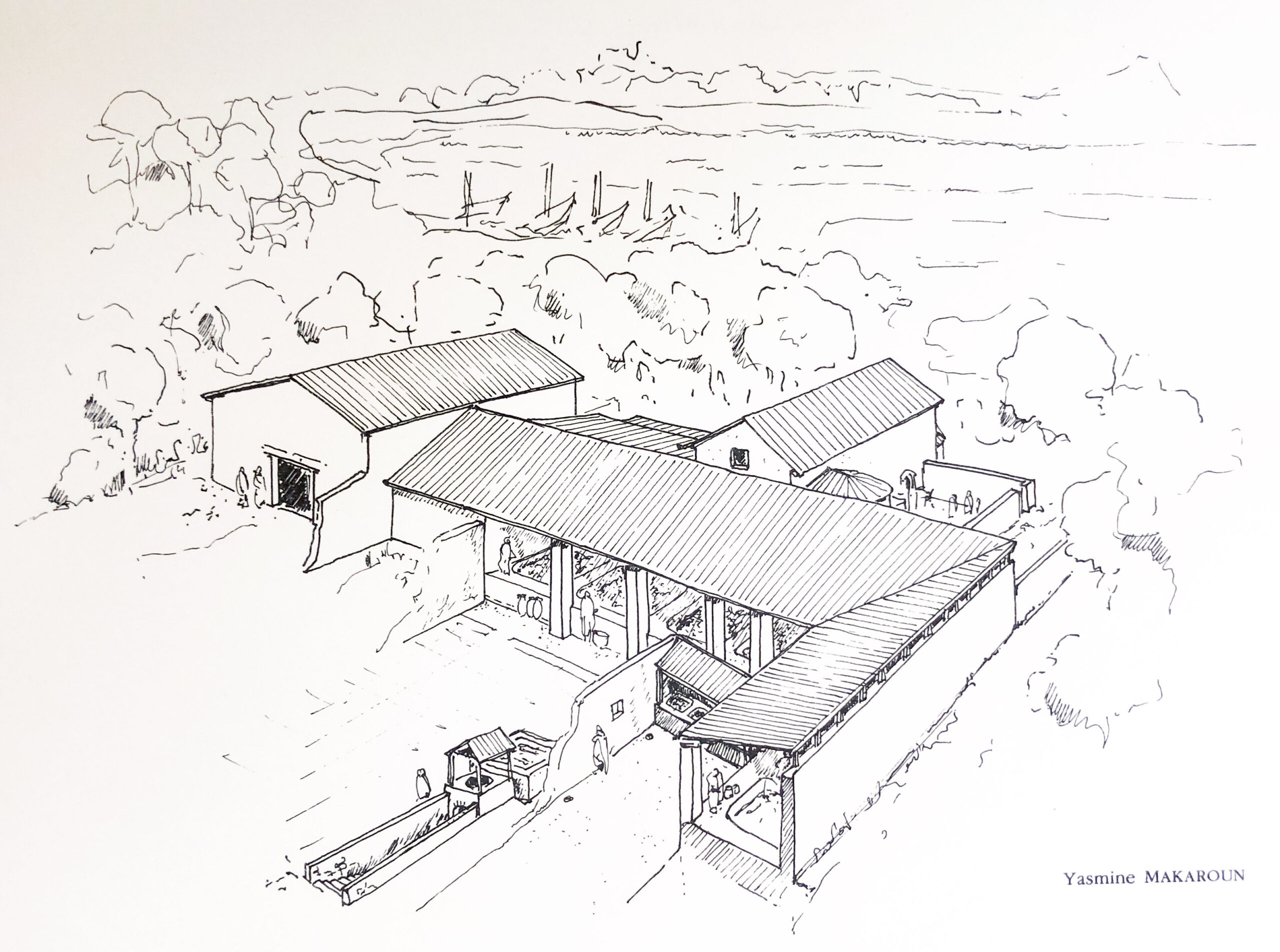
Images: Un grand complexe industriel a Tróia (Portugal) de Robert ETIENNE, Yasmine MAKAROUN, Françoise MAYET 1994
We have already carried out several experiments under controlled conditions, but in this case our choice was to replicate the possible conditions, and not to replicate a recipe from antiquity directly in a tank open to the heat of the sun.
Thus, sardines (Sardine pilchardus) fished in the waters of Setúbal the day before Garum was prepared, and salt produced in the Sado estuary, two ingredients that are decisive for the final product, seeking to replicate the conditions of the ancient times regarding the raw material used at the time.
Other factors that have a decisive influence on the quality of Garum are the geographical location where it is produced, which in this case is strictly the same. Also the time when Garum was produced, keeping it the same period of the year, in order to try to have similar atmospheric conditions, such as sun exposure, temperature and air humidity.
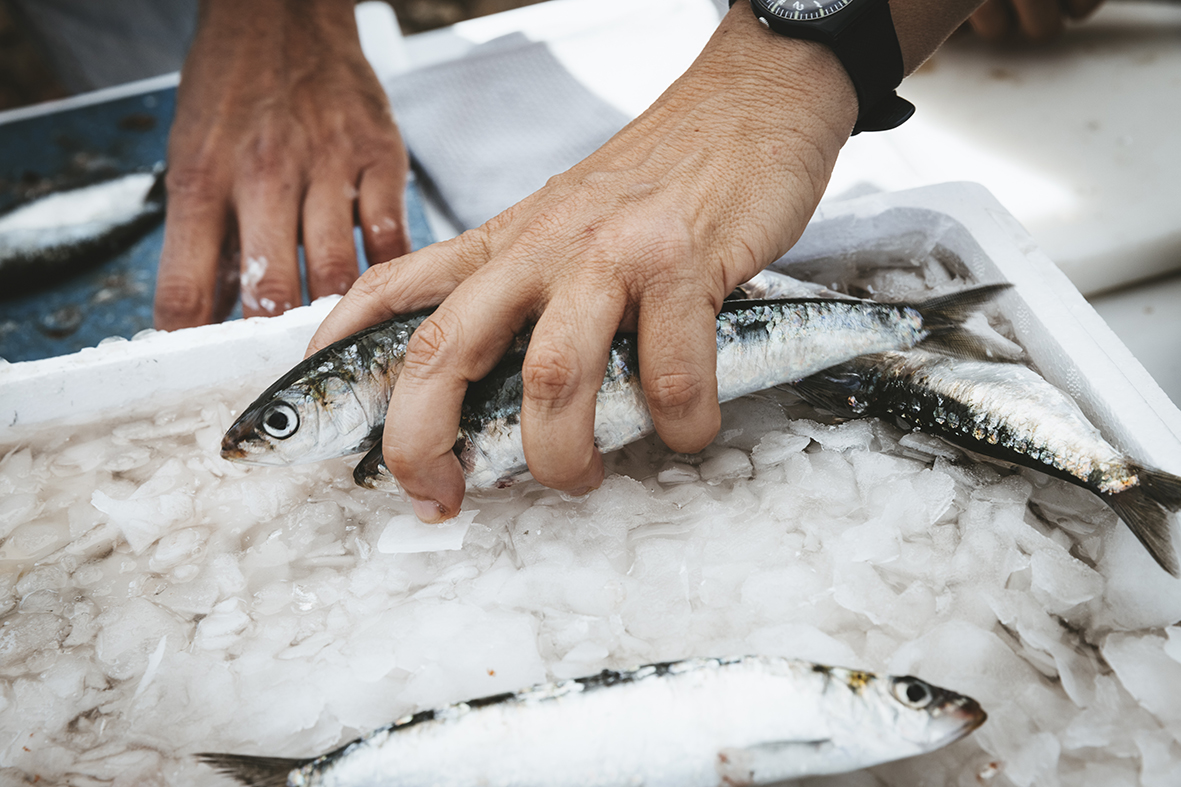
Since the original tanks have worn walls, with fractures and moss or lichens, direct contact with the walls was not recommended. We therefore chose to use a polypropylene bag of 90 microns, with 1000 liters of capacity, (Flexitank Embatank), with food quality certification, which was in contact with the walls of the cetary, thus absorbing the heat of the stone walls and reproducing thus the day and night temperature of the time of year when Garum was produced.
FLEXITANK EMBATANK 1000LT.
IBC flexible designed to transport liquids on liners
Volume: 1,000 L
Top Filling
Dimensions: 1050 x 1050 x 970
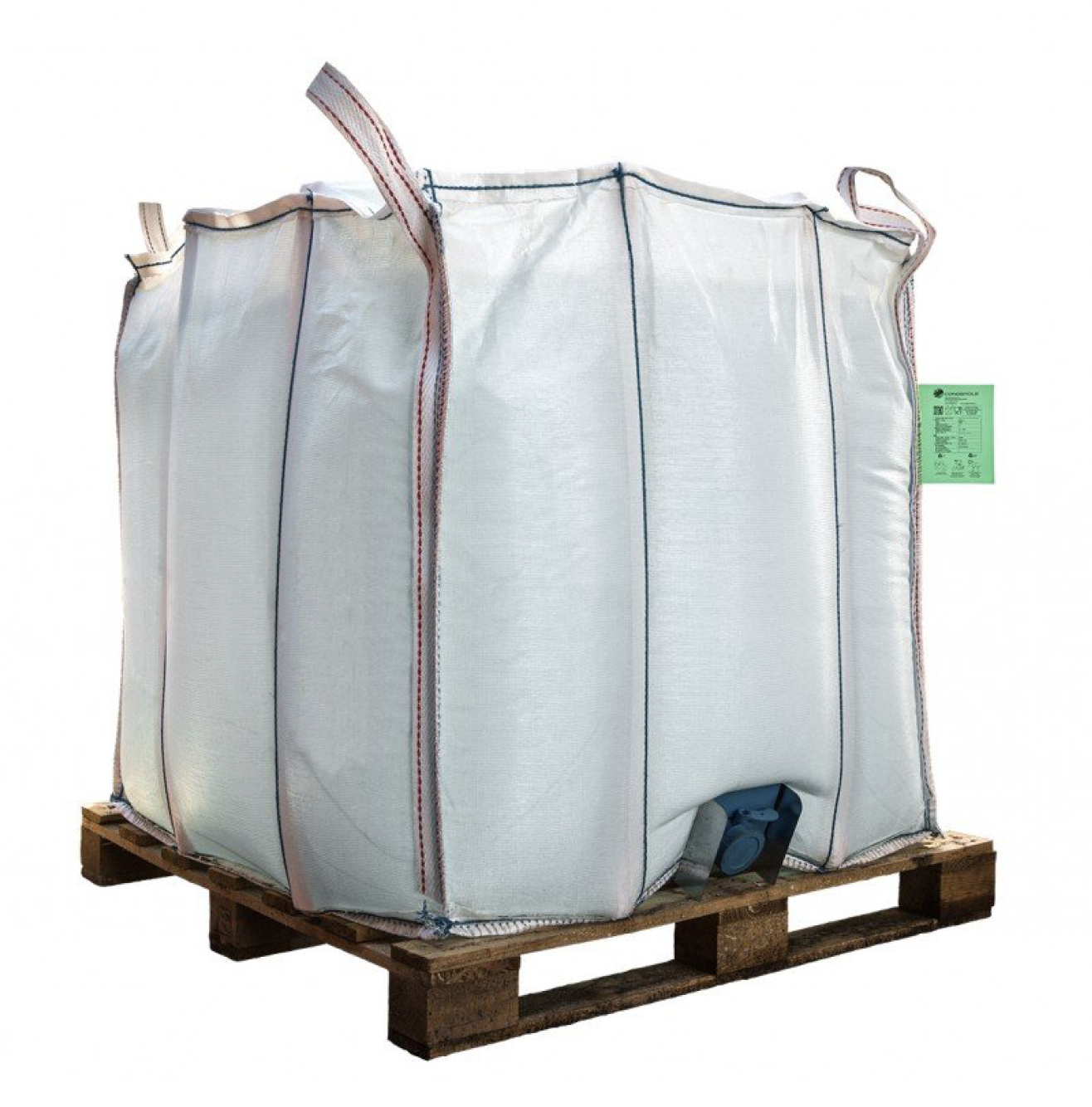
Another factor that influences the production of Garum is the contact or not with the air. It is assumed that the tanks were covered with mats by the Romans, thus having total contact with the air, although Garum can also be produced in an airtight manner. However, the release of gases is expected and, in order to approximately reproduce the mode of production in Tróia, our option in this case was to leave the bag partially open to allow gas exchange, but at the same time avoid the possibility of exaggerated evaporation, that could dry the Garum.
When Garum was produced in open tanks, there is evidence that the loss of liquid was compensated with the replacement of water, a factor that we intend to avoid, not least because in a Roman production workshop the activity and control were permanent, and for us it is logistically complicated at present to verify consistency of the preparation daily.
A wicker mat was placed on top of it in order to avoid unprotected sun exposure.
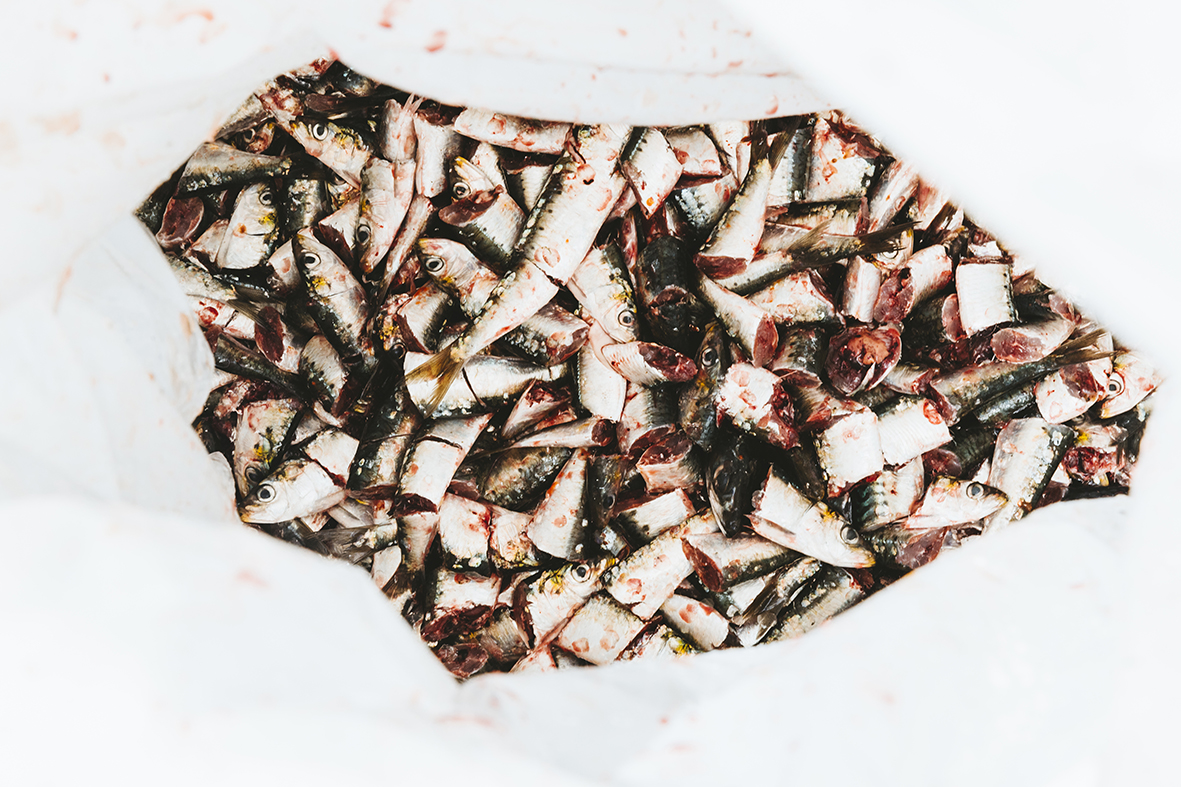
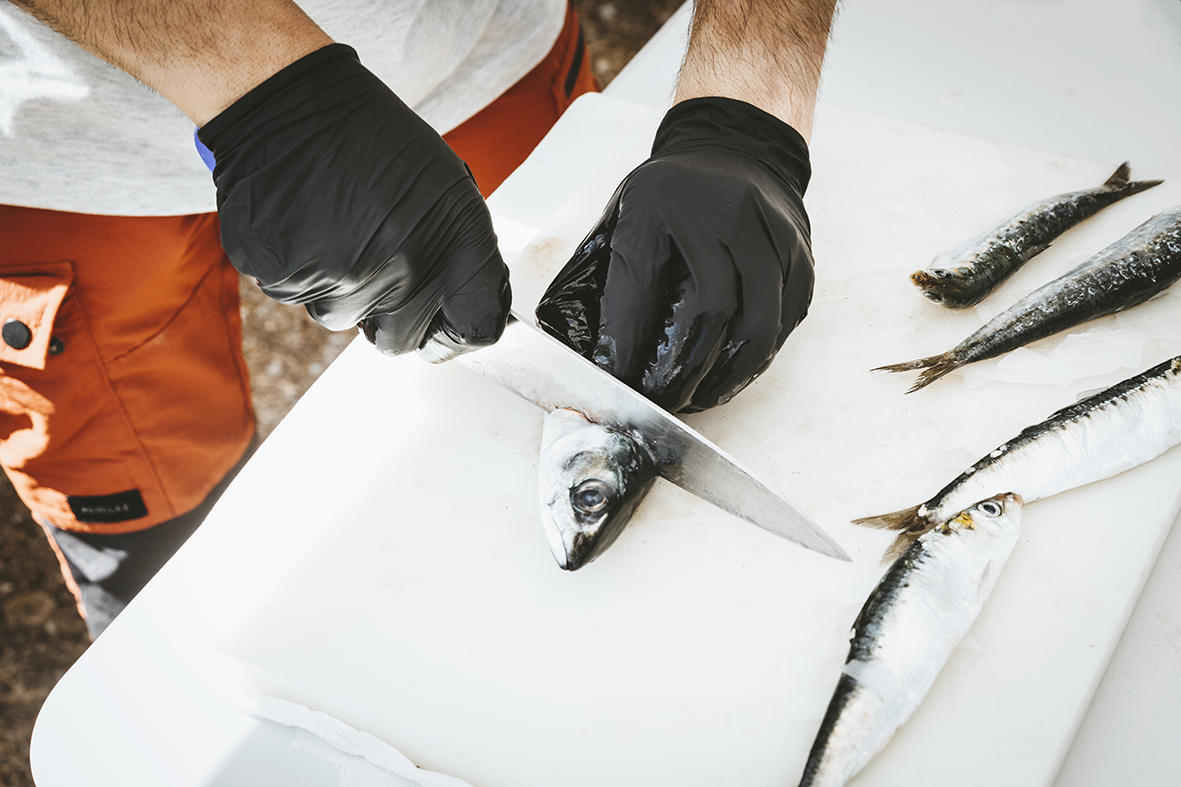
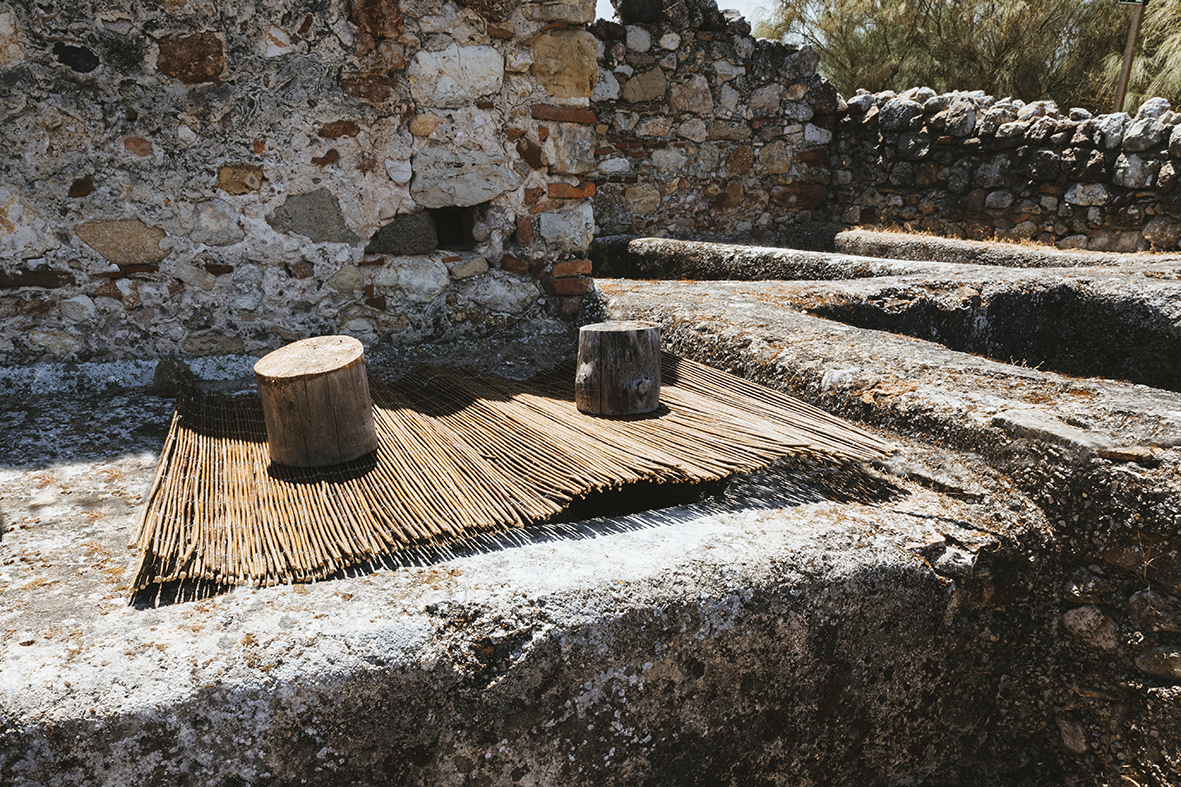
This project also counts on the participation of researchers in the food field Marisa Santos, Catarina Prista and Anabela Raymundo from the Centro de Investigação em Agronomia, Alimentos, Ambiente e Paisagem of the Instituto Superior de Agronomia (Agronomy, Food, Environment and Landscape Research Center), and the zooarchaeologist Sónia Gabriel and the palinologist Patrícia Mendes, both of the Portuguese Laboratório de Arqueociências da Direcção Geral do Património Cultural (Archeosciences Laboratory of the Directorate-General for Cultural Heritage).
The evolution of Garum will be accompanied by regular analyzes, which will allow us to better understand this process and record the evolution of this precious sauce.
Technical supervision of the text: Archeologist Inês Vaz Pinto - TROIA RESORT - Roman Ruins of Tróia

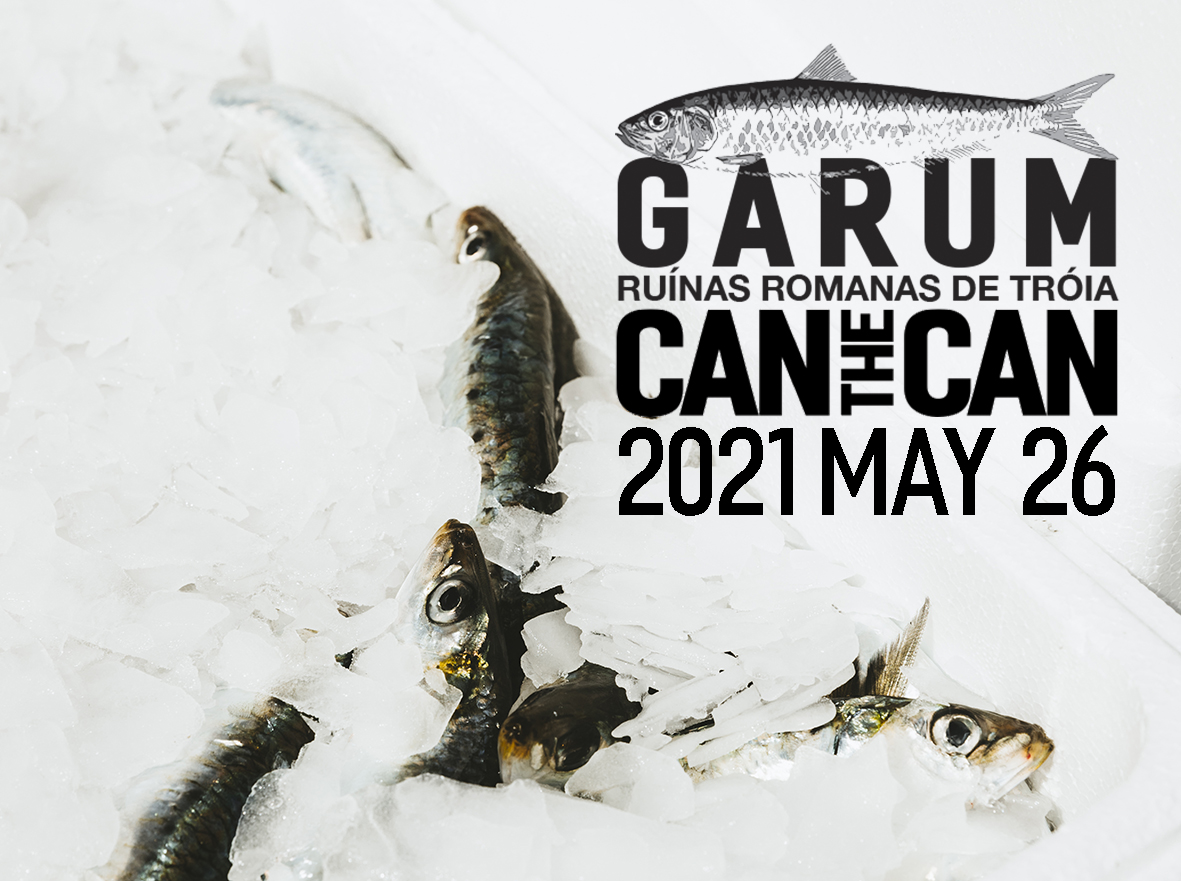

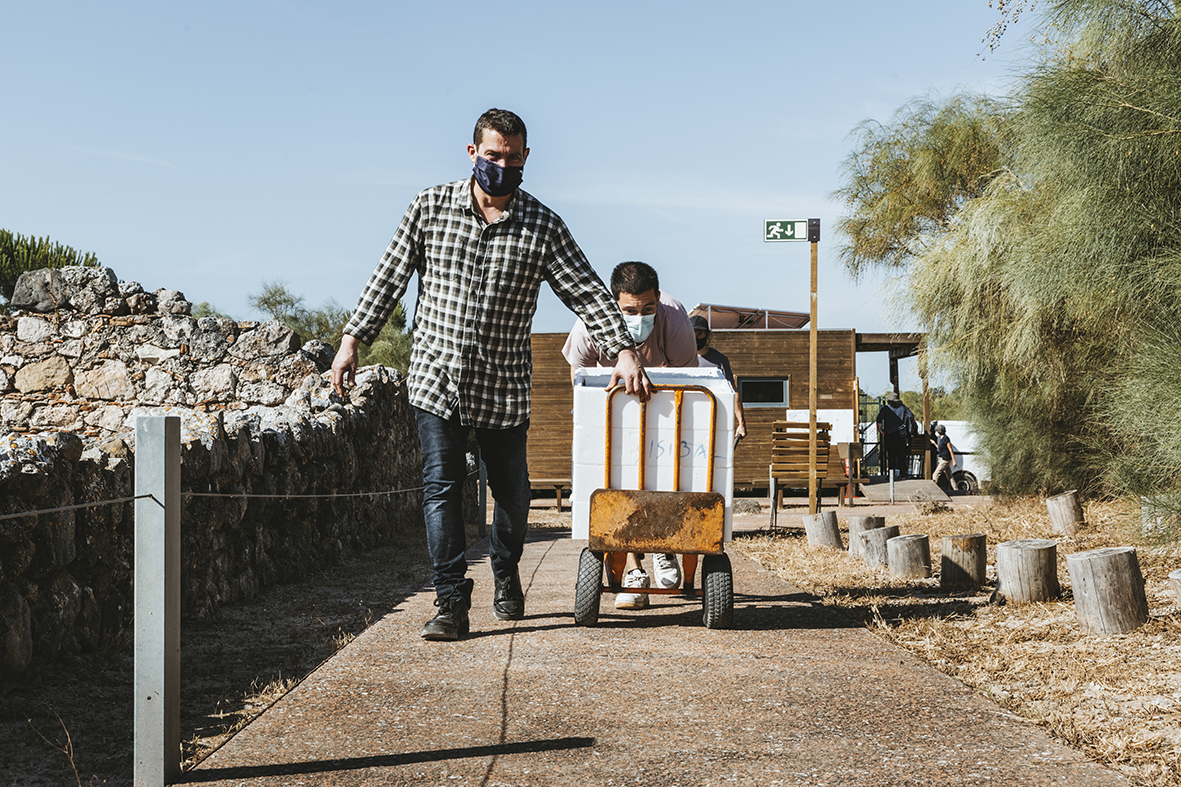
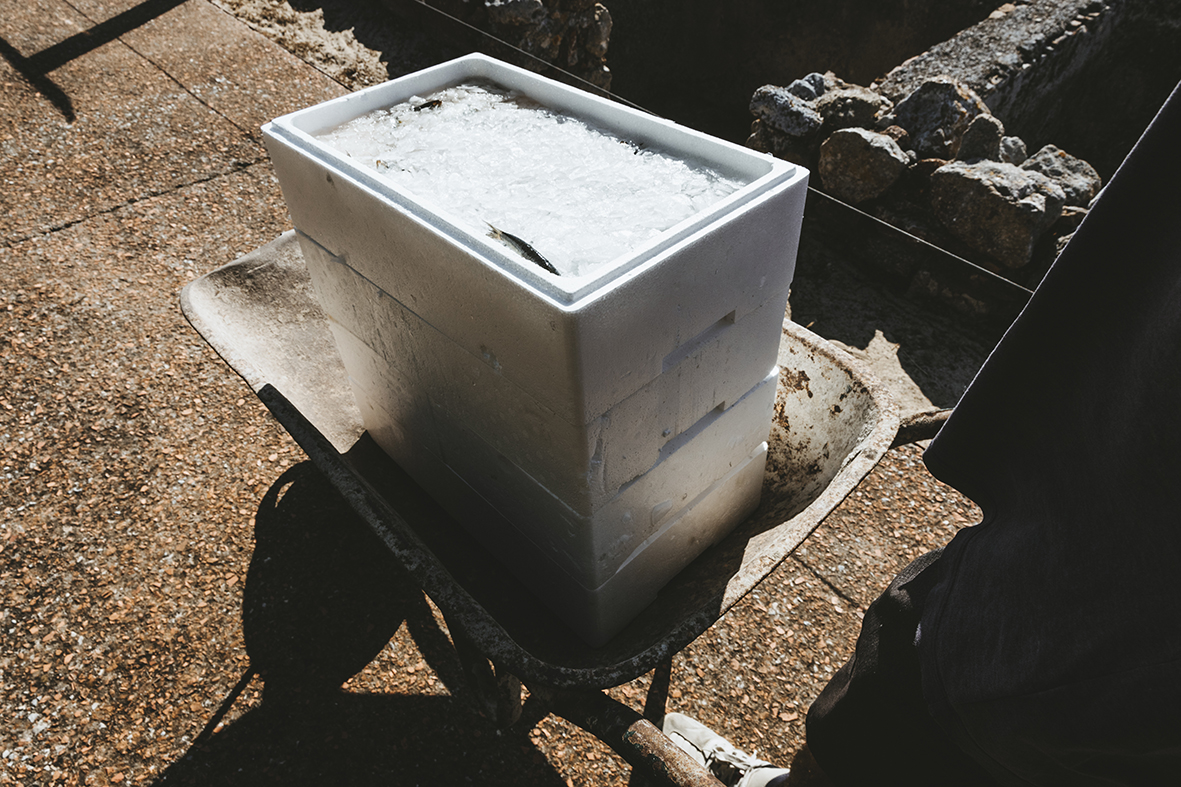
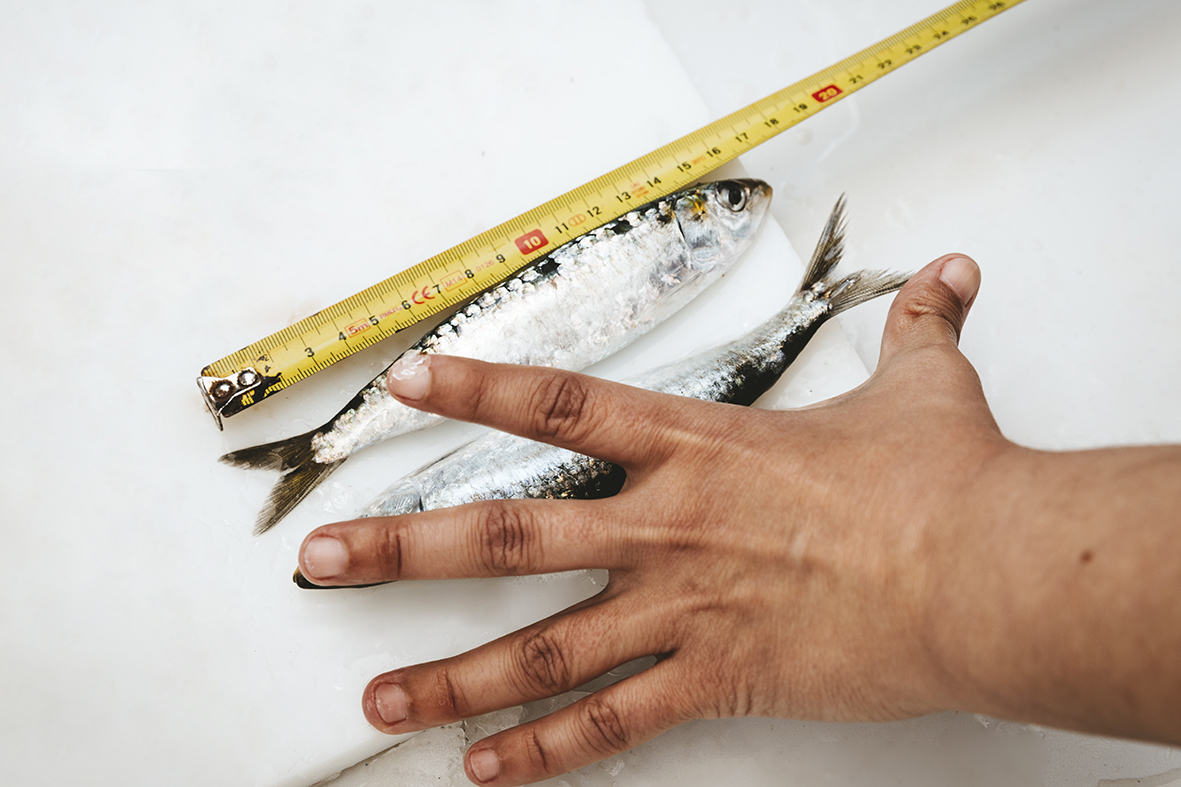
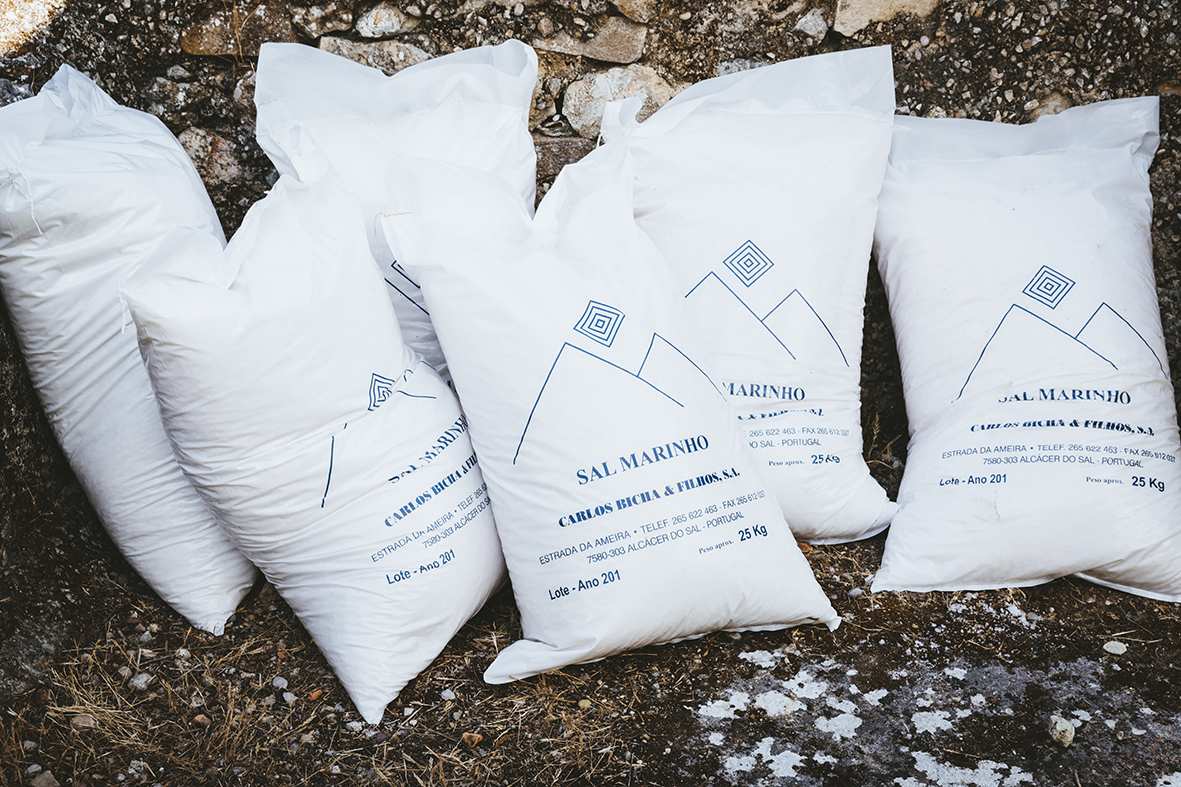

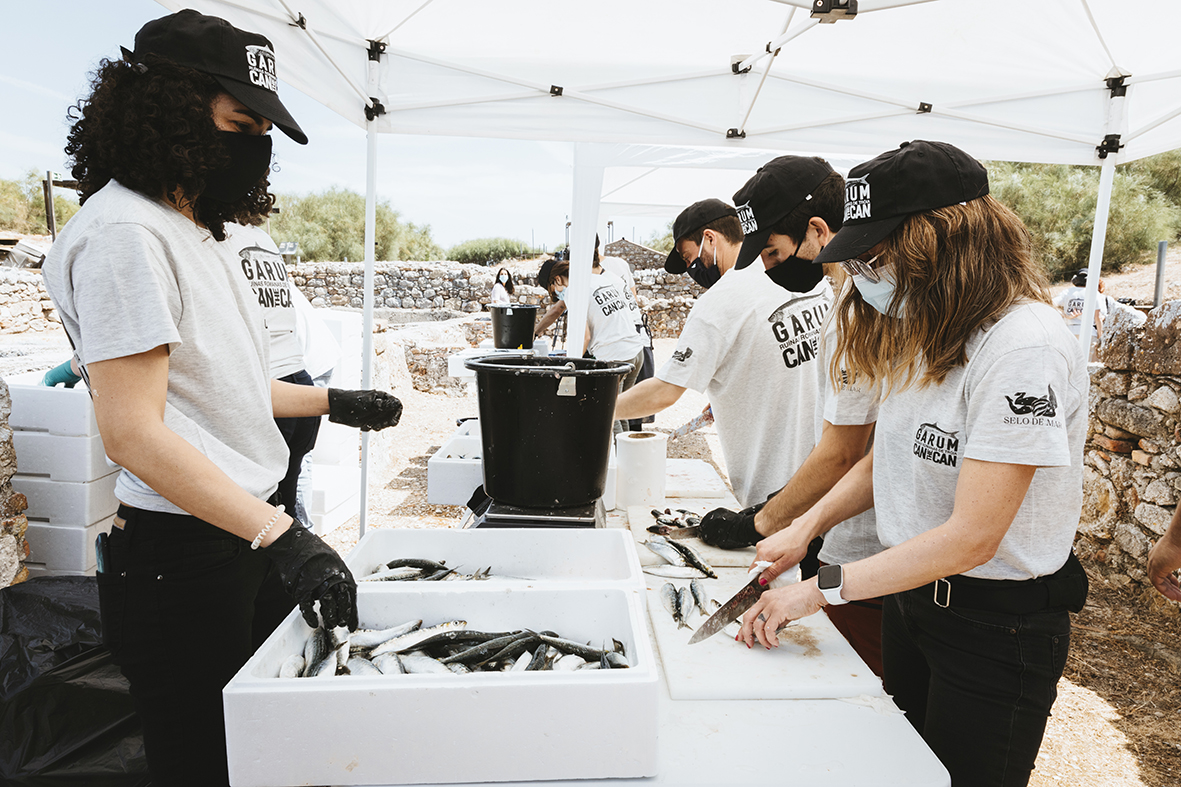
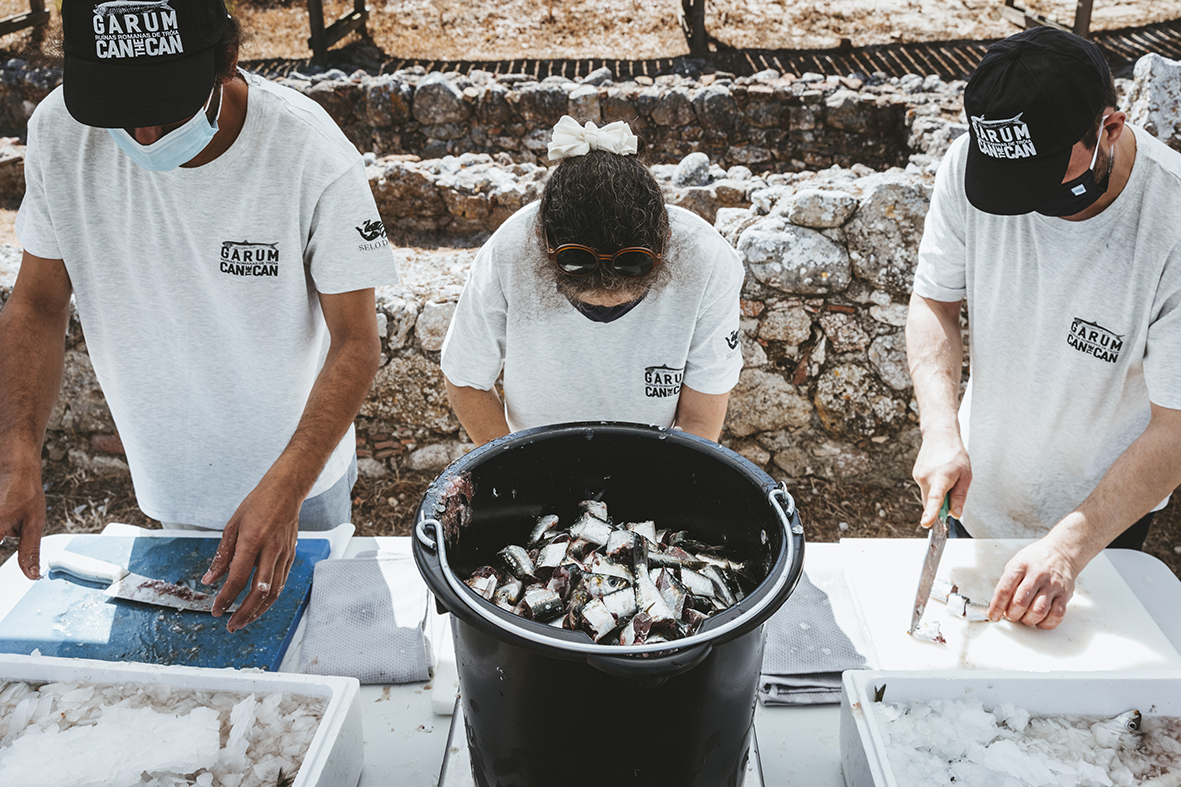
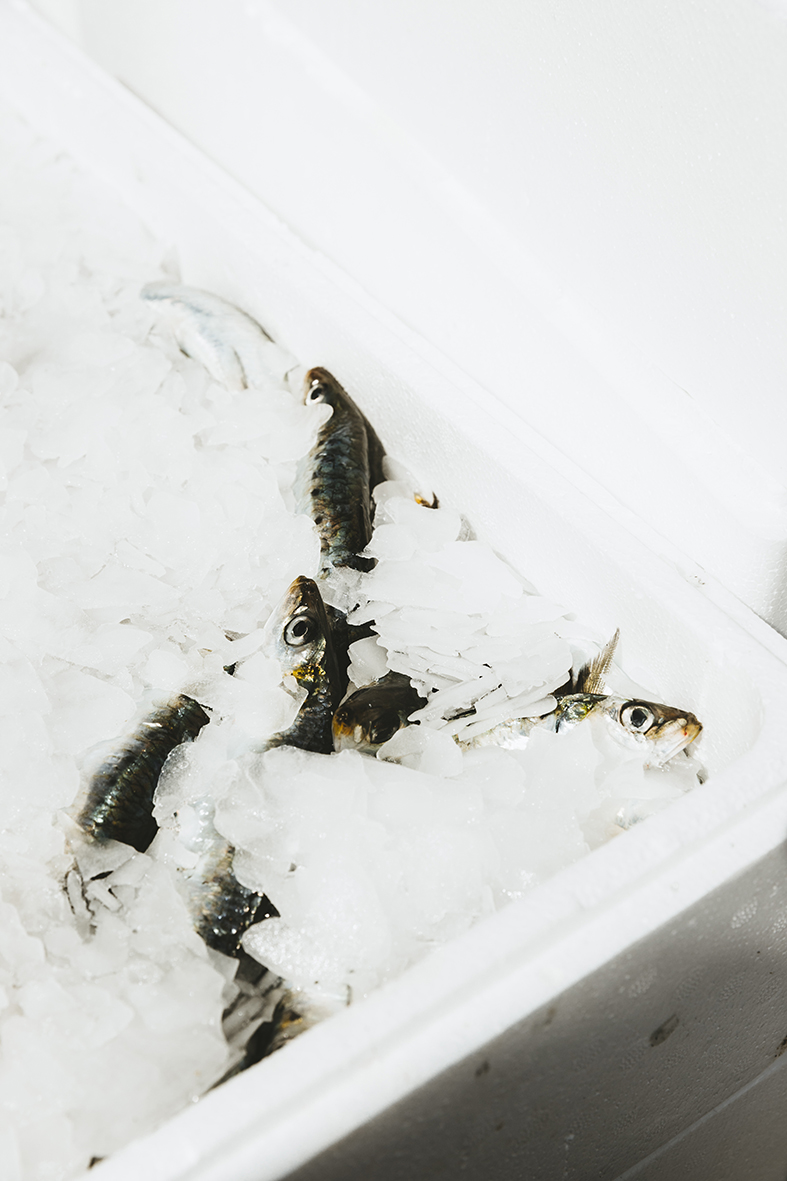
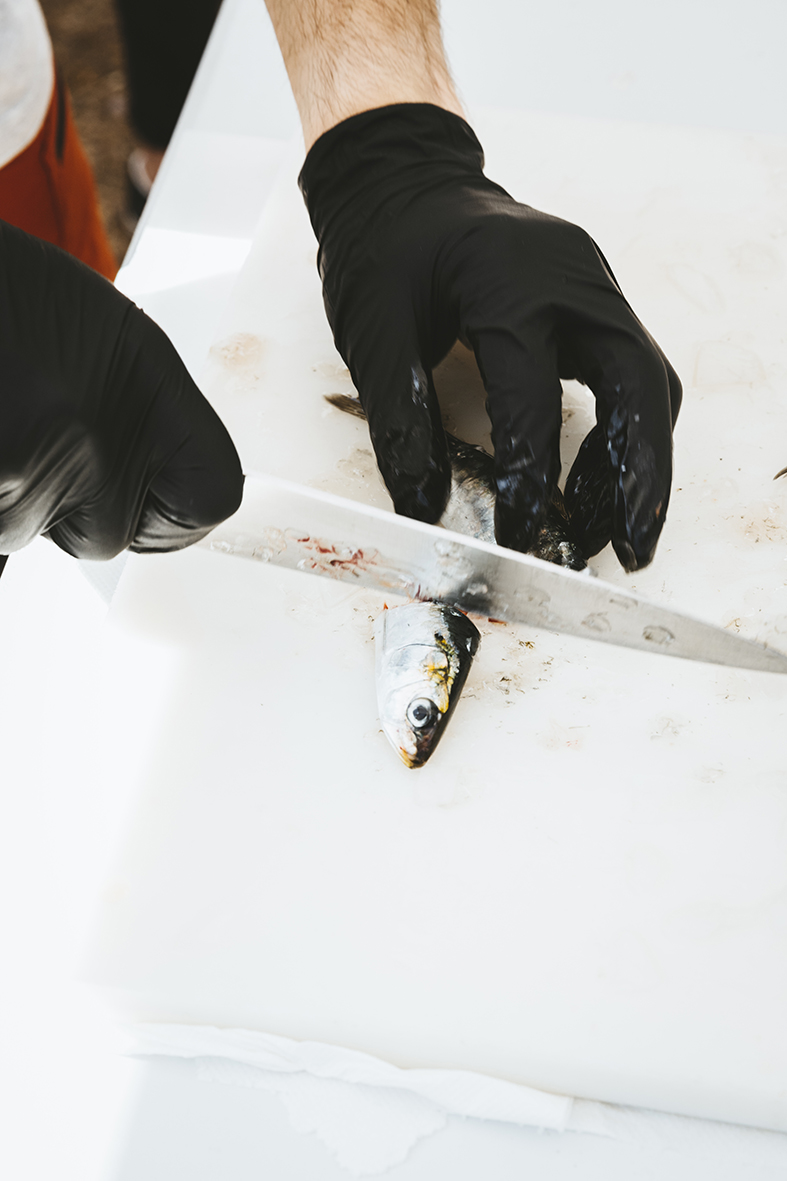

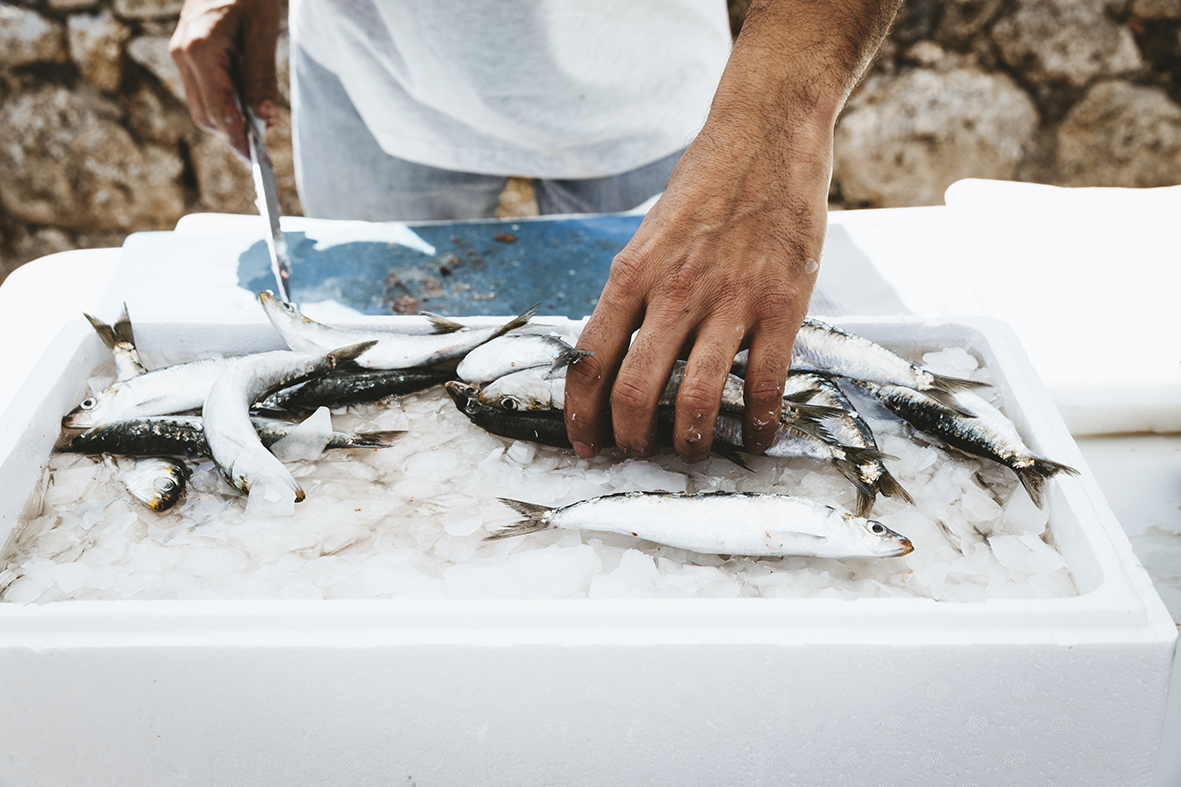
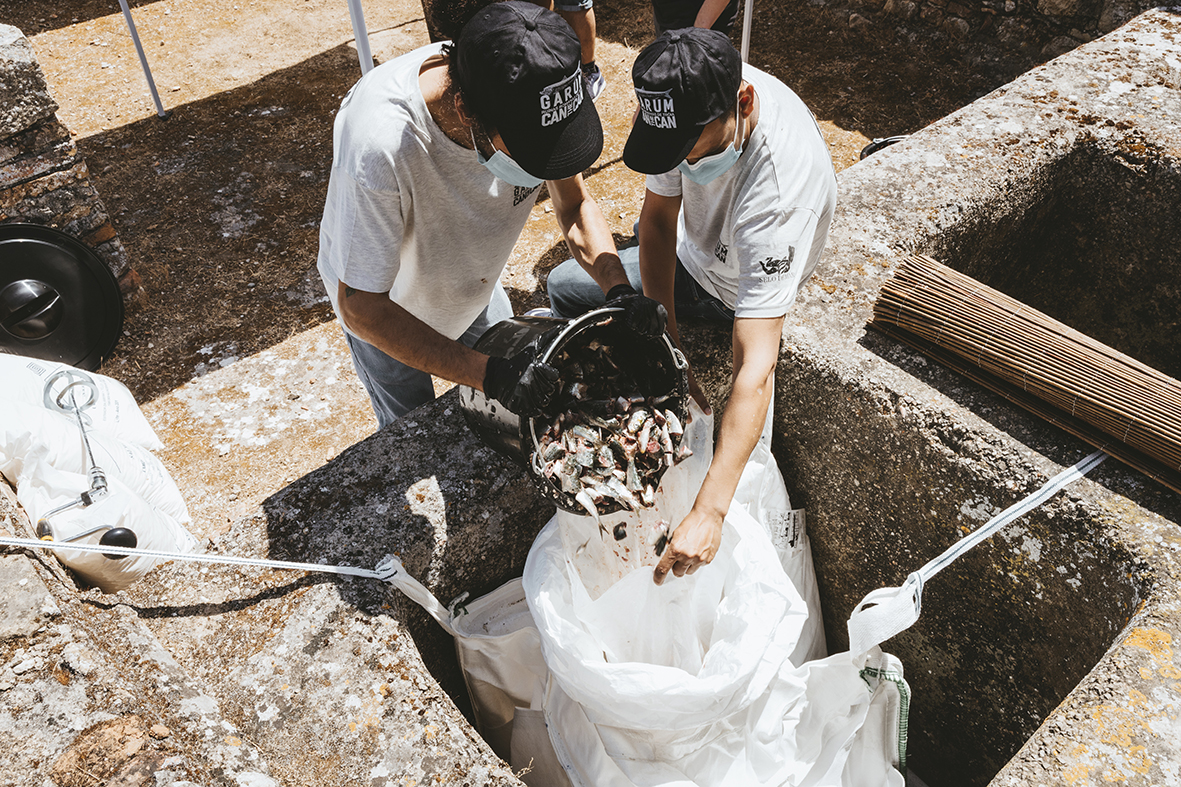
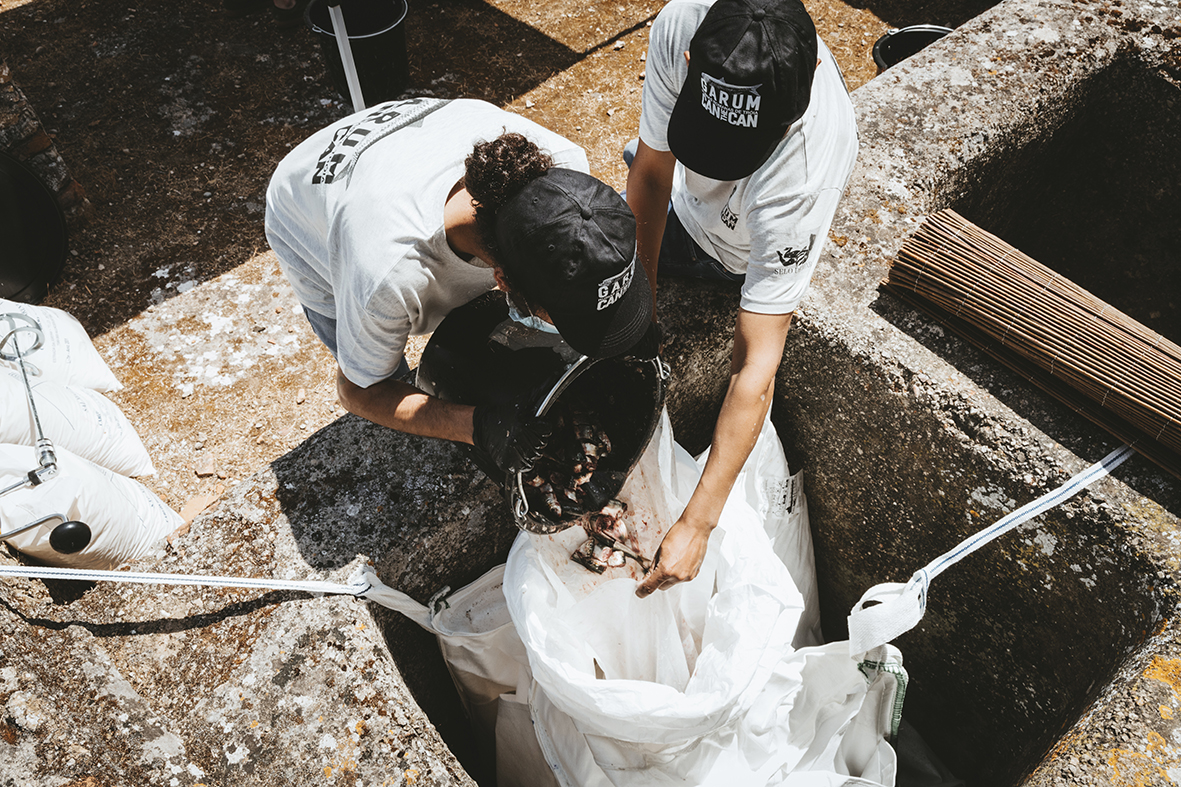

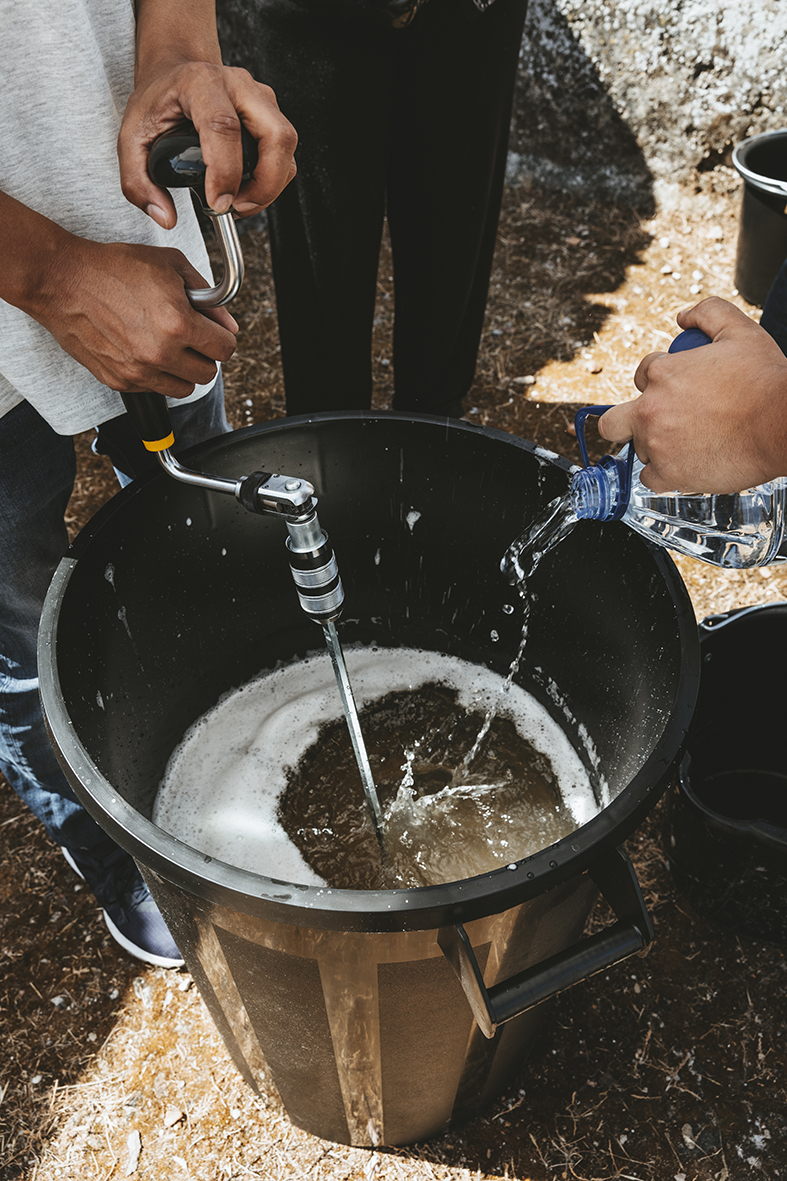
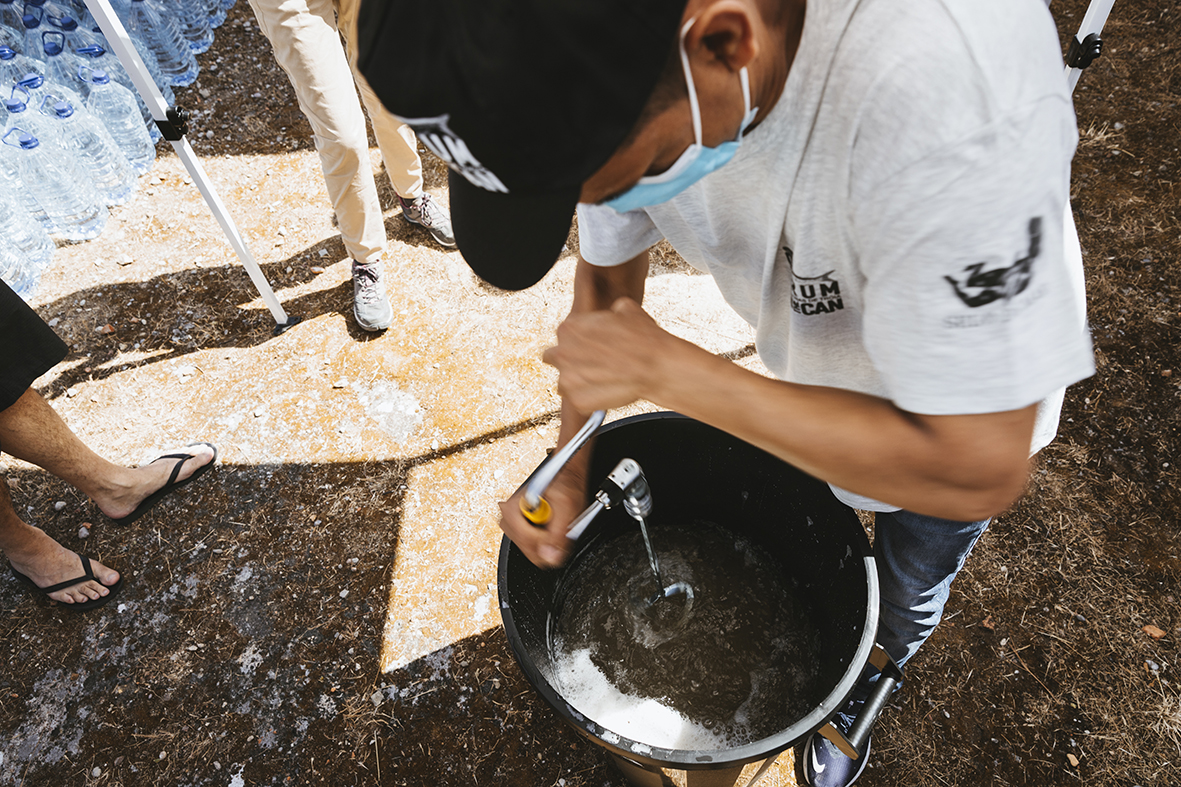
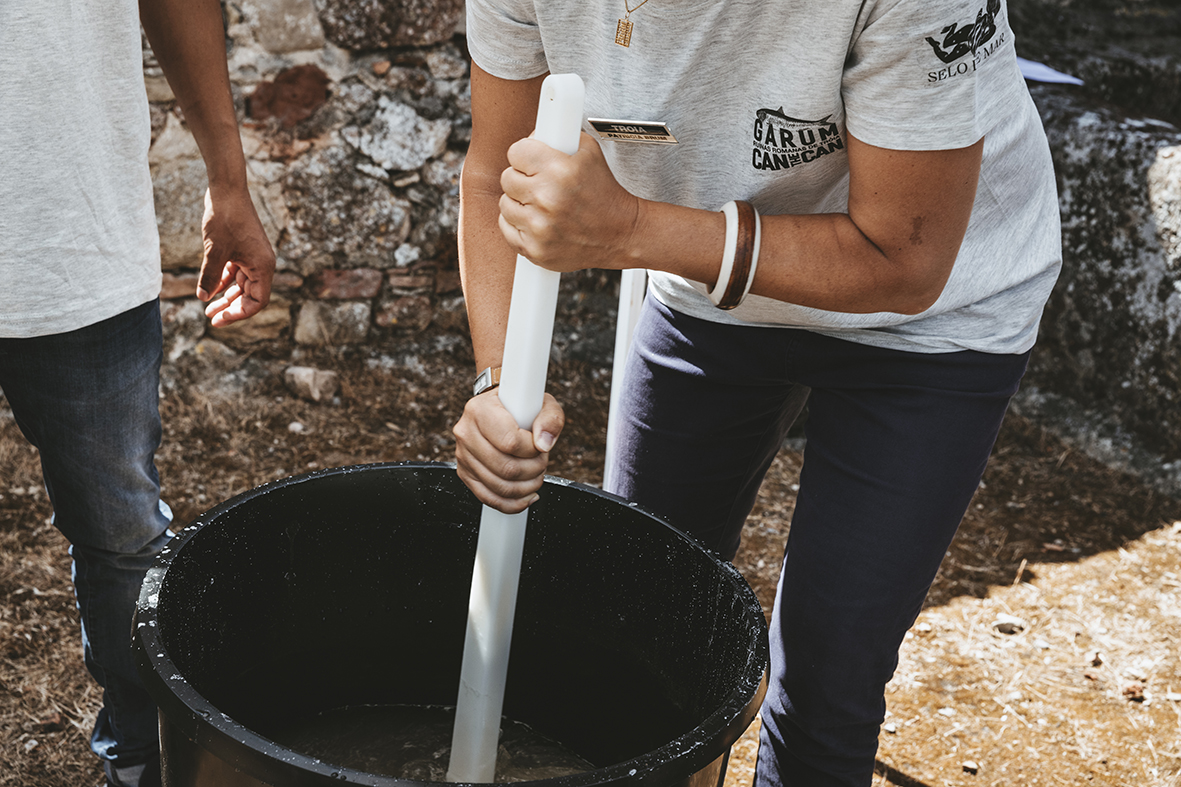
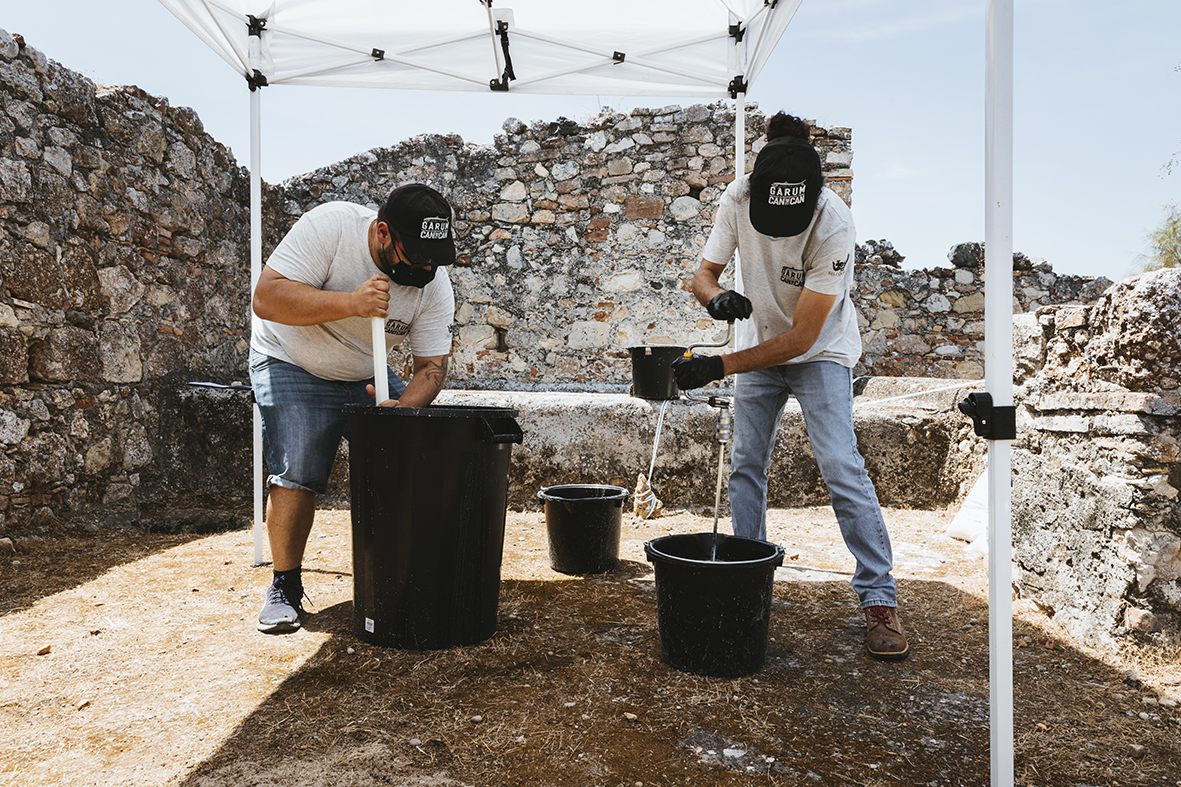
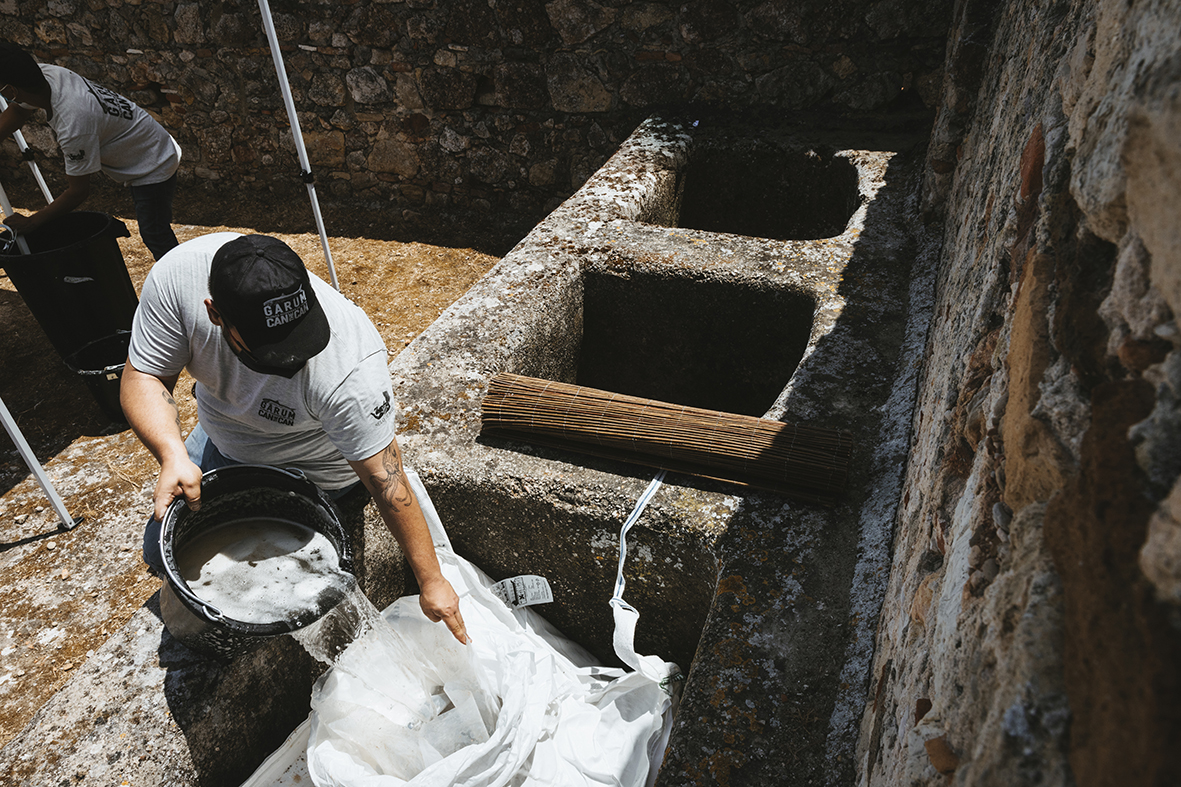
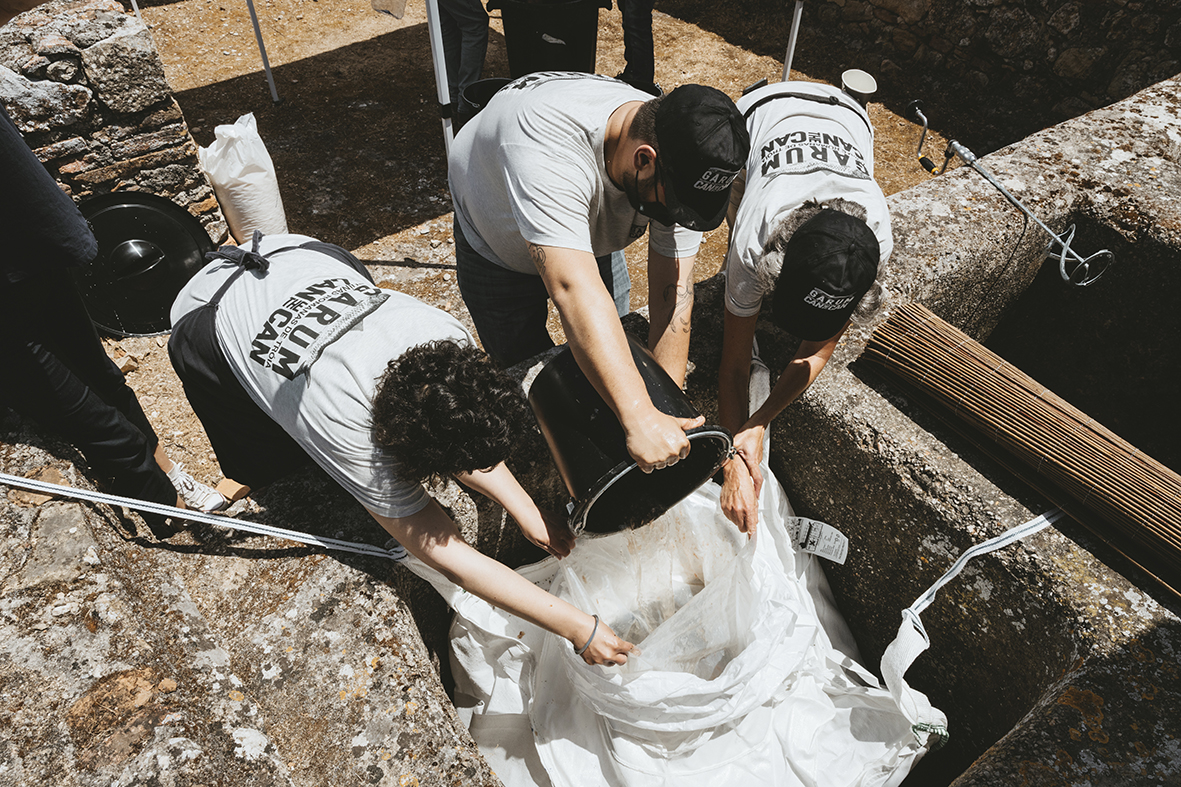
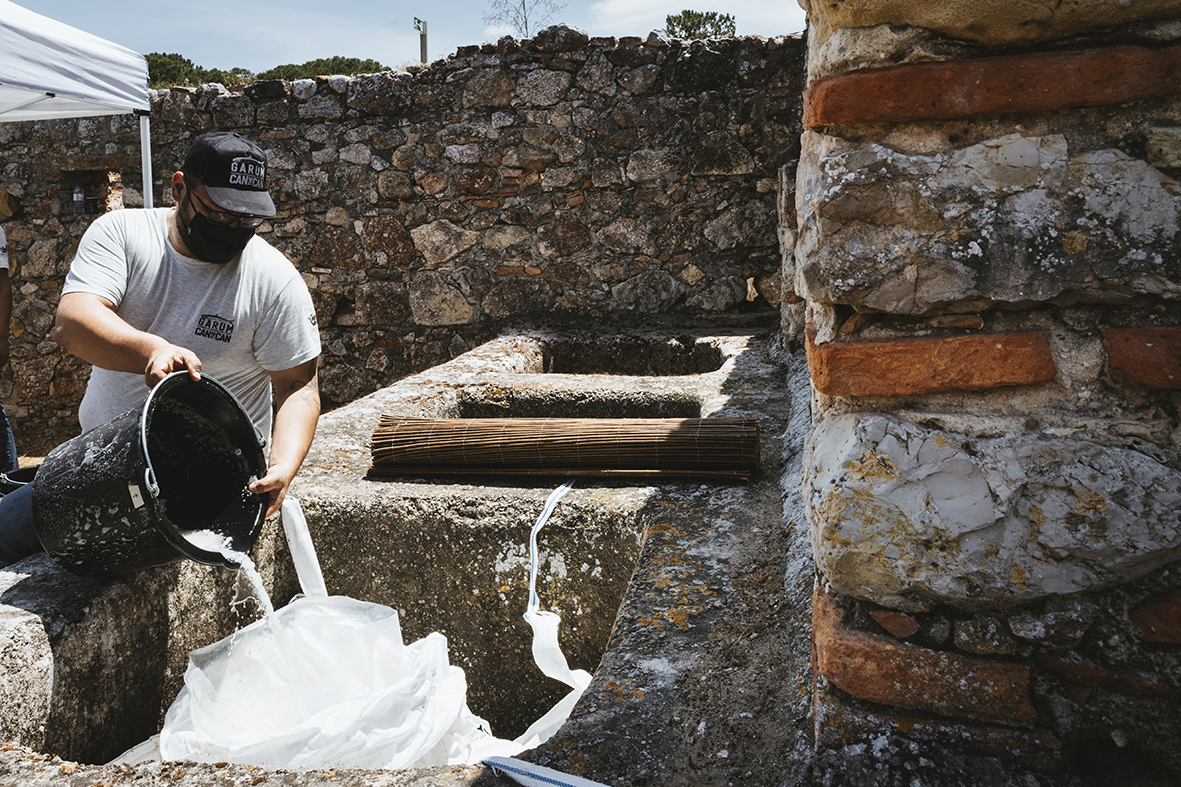
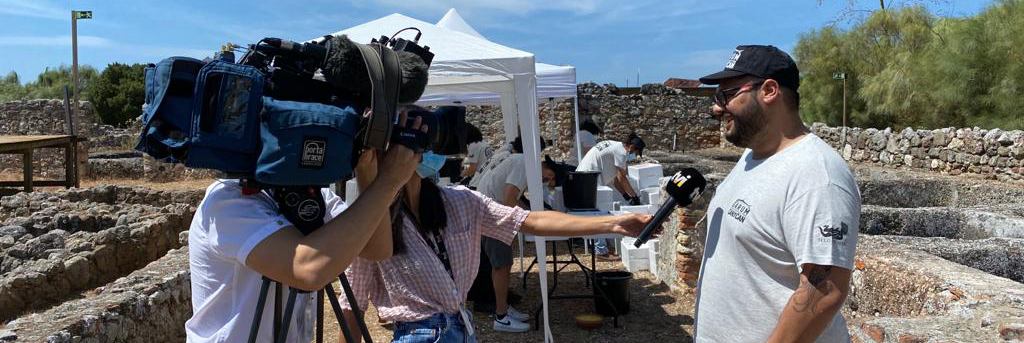
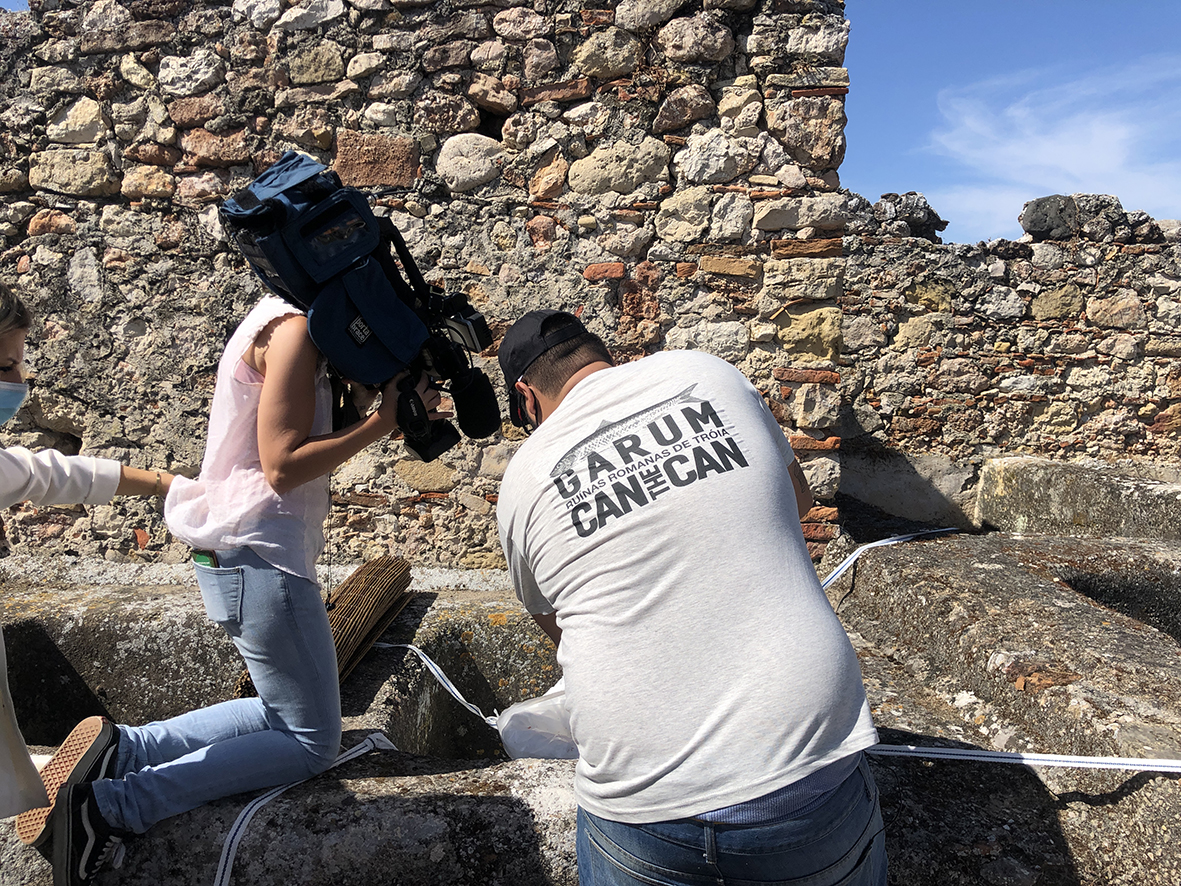
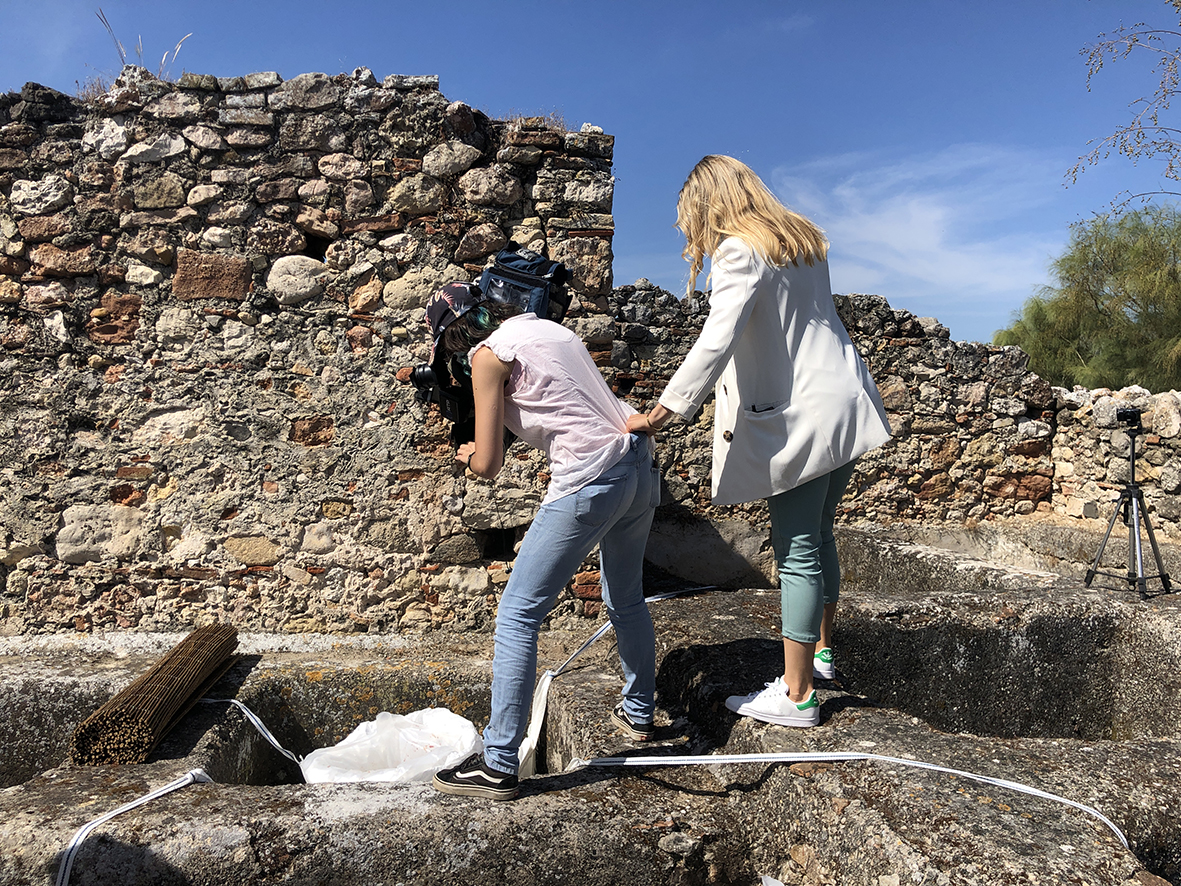



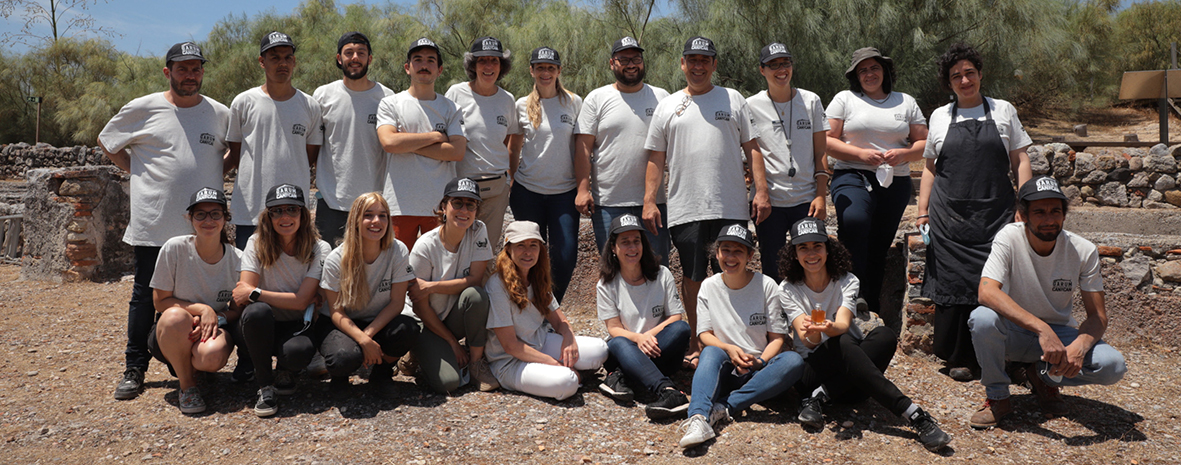
CAN THE CAN
Manager, Elsa Henriques
Chef Pedro Almeida
Sous chef Ruben Oliveira
Producer, Marlene Amaro
Investigação e projecto, Victor Moura Vicente
ROMAN RUINS OF TROIA
Archaeologists Inês Vaz Pinto and Patrícia Brum
ANICP, Associação Nacional dos Industriais de Conservas de Peixe
Marta Azevedo
Photography
Mariana Motta Veiga
Centro de Investigação em Agronomia, Alimentos, Ambiente e Paisagem do Instituto Superior de Agronomia
Marisa Santos, Catarina Prista e Anabela Raymundo
Laboratório de Arqueociências da Direcção Geral do Património Cultural
Zooarqueóloga Sónia Gabriel e da palinóloga Patrícia Mendes
Sardines supply
Sesibal – Cooperativa de Pescas de Setubal, Sesimbra e Sines, Ricardo Santos
Supply of salt from the Sado Valley
Carlos Bicha & Filhos, Lda, Alcácer do Sal
Special collaboration
Prata de Mel, João Pratas e Ana Cavaca

Customer Care
CAN THE CAN uses cookies in order to provide you with a better online experience. By continuing your visit to our site you agree to the use of cookies
Contact
reservations@canthecan.net
info@canthecan.net
T. +351 914 007 100
T. +351 218 851 392
Terreiro do Paço 82/83
1100-148 Lisboa – Portugal
Open everyday from 9:00 AM to 1:00 AM